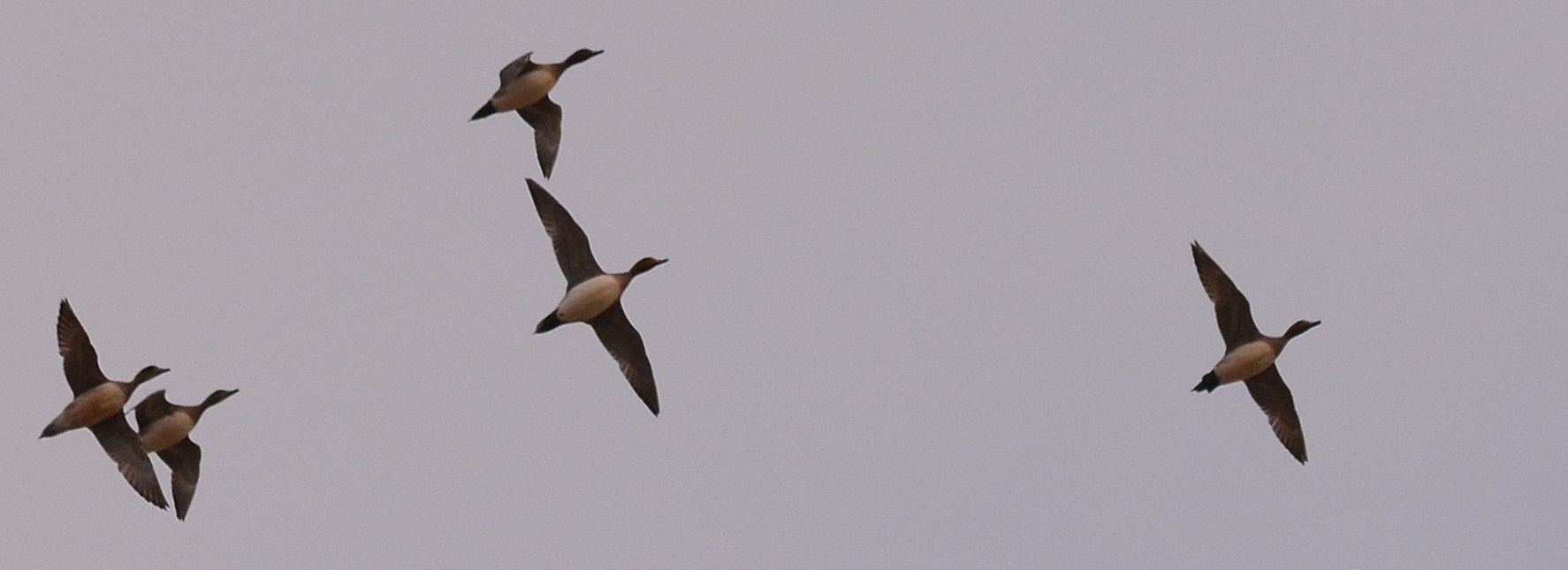 Wigeon in flight over West Sedgemoor (Tony Hoskin 2020)
Wigeon in flight over West Sedgemoor (Tony Hoskin 2020)
BIRDS
The Community Woodland is visited by many birds, including Robins, Chaffinches, Blackbirds, Dunnock, Reed Buntings and Blue, Great and Long-tailed Tits, many of which come to the bird feeders we keep topped up all year round. In the summer, various warblers such as the Chiffchaff use the area to breed, and many of the nest boxes you will see around the site have had residents, either roosting or breeding. As the trees mature, more birds will find the woodland a safe haven in which to raise their young.
A total of 43 different species of birds have so far been recorded at the woodland and the adjacent sports fields and surrounding hedgerows at the White Street site. These are:
Mallard, Buzzard, Sparrowhawk, Kestrel, Pheasant, Snipe (one only), Black-headed Gull, Wood Pigeon, Collared Dove, Barn Owl (twice), Green Woodpecker, Great Spotted Woodpecker, Swift, Swallow, House Martin, Pied Wagtail, Starling, Magpie, Jay (one only), Jackdaw, Rook, Crow, Wren, Dunnock, Blackcap, Whitethroat, Willow Warbler, Chifchaff, Robin, Blackbird, Song Thrush, Fieldfare, Redwing, Long-tailed Tit, Marsh Tit, Coal Tit, Blue Tit, Great Tit, House Sparrow, Chaffinch, Greenfinch, Goldfinch, Reed Bunting (total = 43).
Other birds seen flying over the site include: Grey Heron, Mute Swan and Raven.
For a blog on 'The Birds of North Curry' by local birder and photographer Tony Hoskin, please see: http://northcurrywildlife.blogspot.com/2019/11/the-birds-of-north-curry.html
For a blog on 'Feeding Wild Birds', also by Tony Hoskin, please see: http://northcurrywildlife.blogspot.com/2020/02/feeding-wild-birds.html
BIRDS OF THE WOODLAND, VILLAGE AND GARDEN
By Tony Hoskin (text and pictures)
Marsh Tit
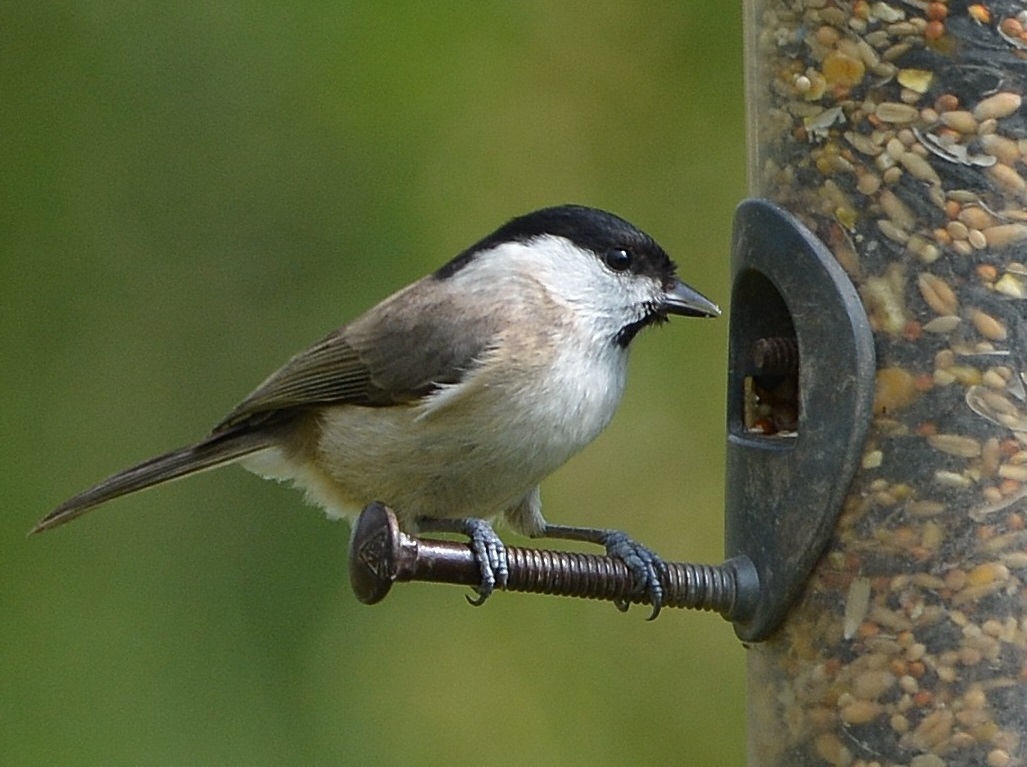
Marsh Tits are a resident in the UK and normally live in deciduous woodland but often come to garden feeders. This Marsh Tit was seen on a bird feeder at the Community Woodland in February 2019.
Coal Tit
Coal Tits are a common resident and are easily distinguished from Marsh Tits as the Coal Tit has white cheeks and a white nape on the back of its neck. They mainly live in conifer forests but can also be found in mixed deciduous woodland. They often nest in holes in trees and will use nest boxes.
Great Tit
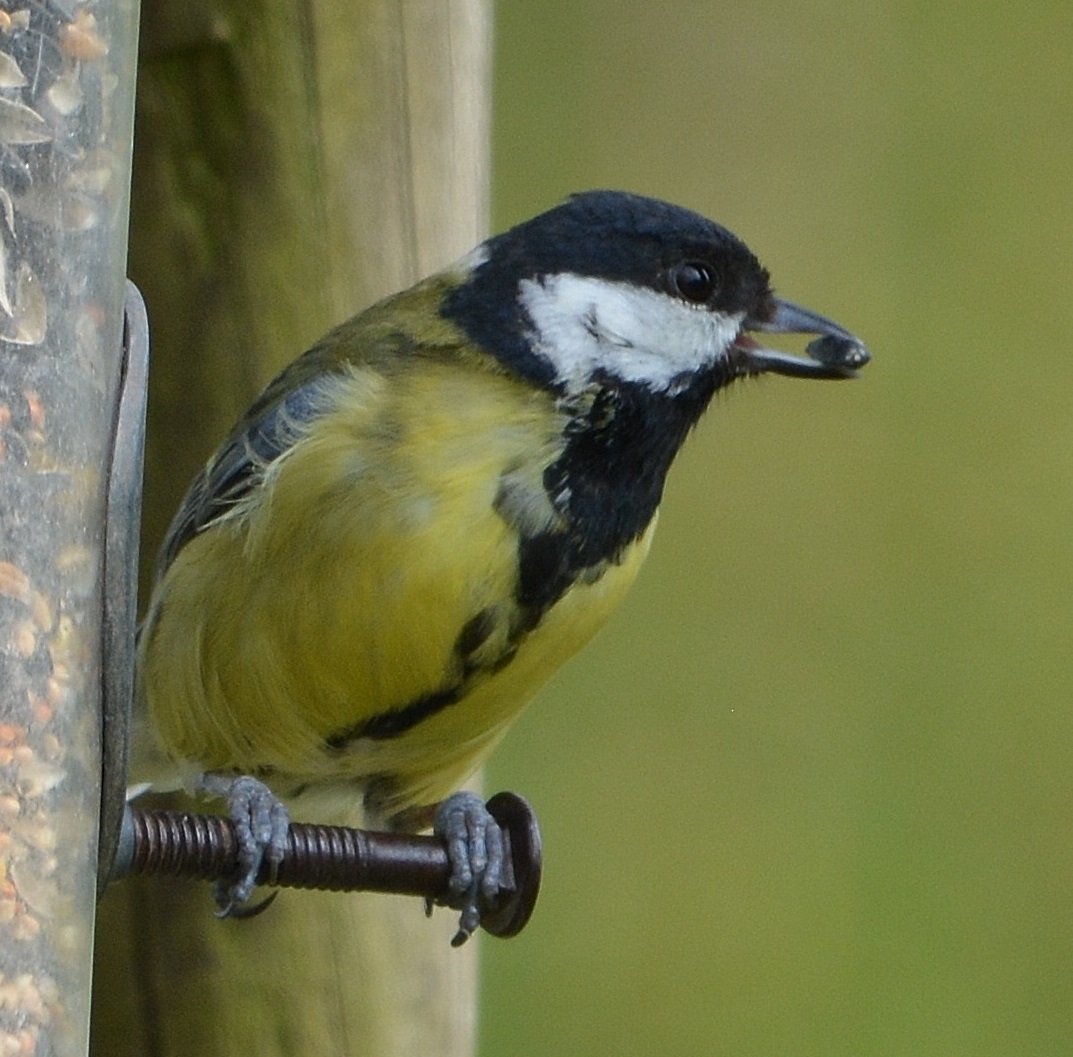
Great Tits are quite common birds and are easily identified by the large black stripe down their front. This one was taken on a feeder at the Community Woodland in February 2019.
BlueTit
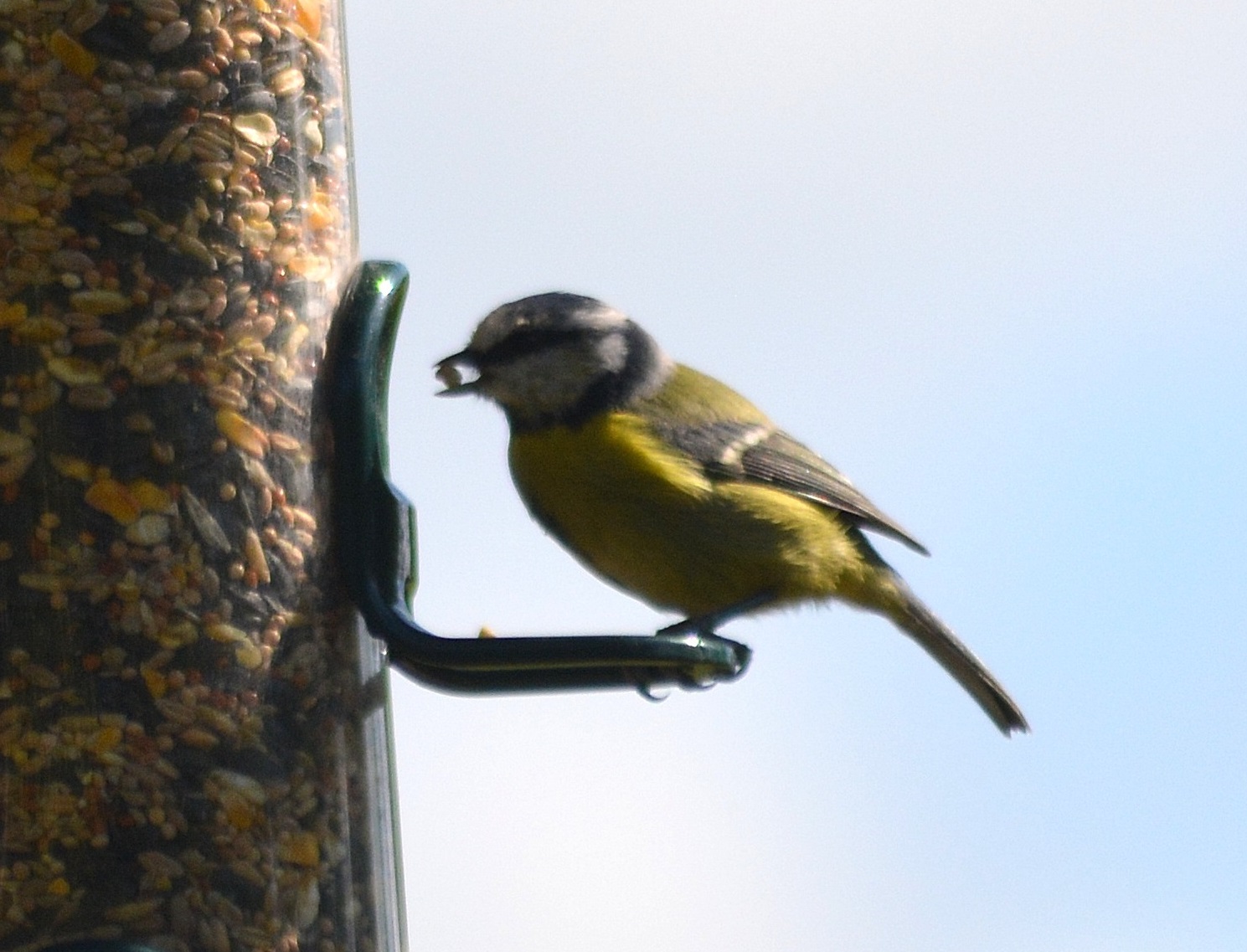
Blue Tits are common all over the UK and nest naturally in holes in trees and stone walls but are quite happy to use nest boxes and are regular visitors to bird feeders. They can be found in deciduous woodlands, gardens, parks, almost anywhere there are trees and shrubs. They eat insects, caterpillars, grubs and so on.
Long-tailed Tit
Long-tailed Tits are a common resident in our region, preferring scrub land and wooded areas, and they build a very neat nest of feathers and spider’s web covered with lichen for camouflage. The picture above shows adult birds in winter plumage on a fat ball feeder at the Community Woodland in February 2020.
Reed Bunting
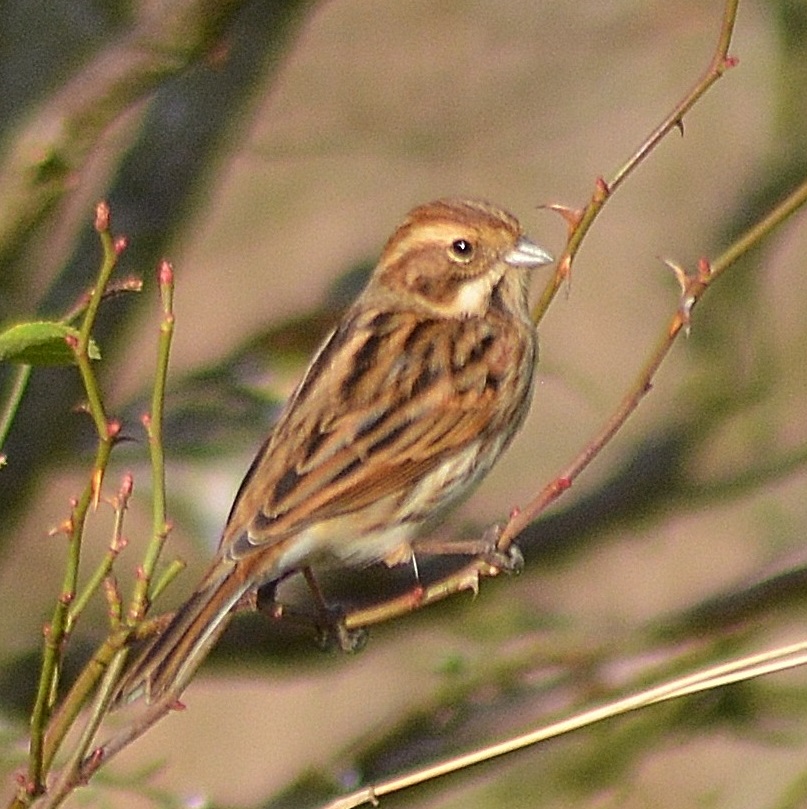
Reed Buntings are quite plentiful in our area and are usually found around wetlands. The female is pictured on the left taken at the Community Woodland in January 2020. The male is shown on the right on a feeder at the woodland in February 2019.
Blackcap
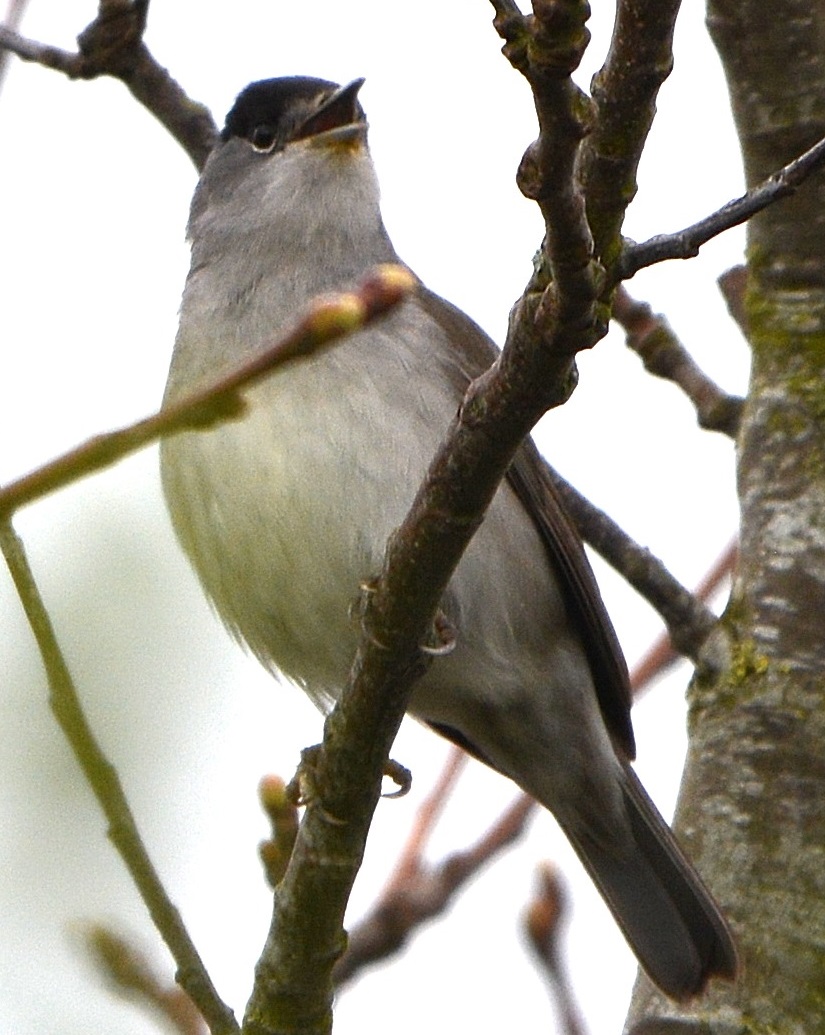
The Blackcap is one of our spring visitors and has a very musical song that can be very engaging. The male has the black cap that the name suggests, while the female has a chestnut brown cap. The picture was taken in April 2019 at the Community Woodland.
Chaffinch
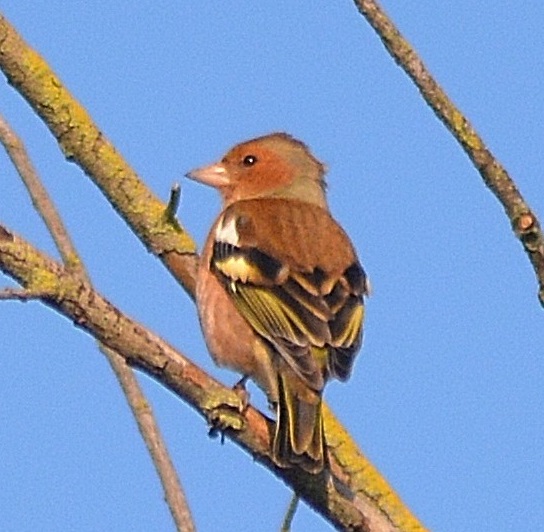
Chaffinches are one of our most common and widespread birds in the UK and can be found almost anywhere, including woodland, farmland, gardens and even in towns and parks. The chaffinch pictured above left is a female seen in March 2020 removing the husk from a seed taken from the feeders at the Community Woodland. The more colourful male is pictured above right, taken at the woodland in the autumn of 2019.
Greenfinch
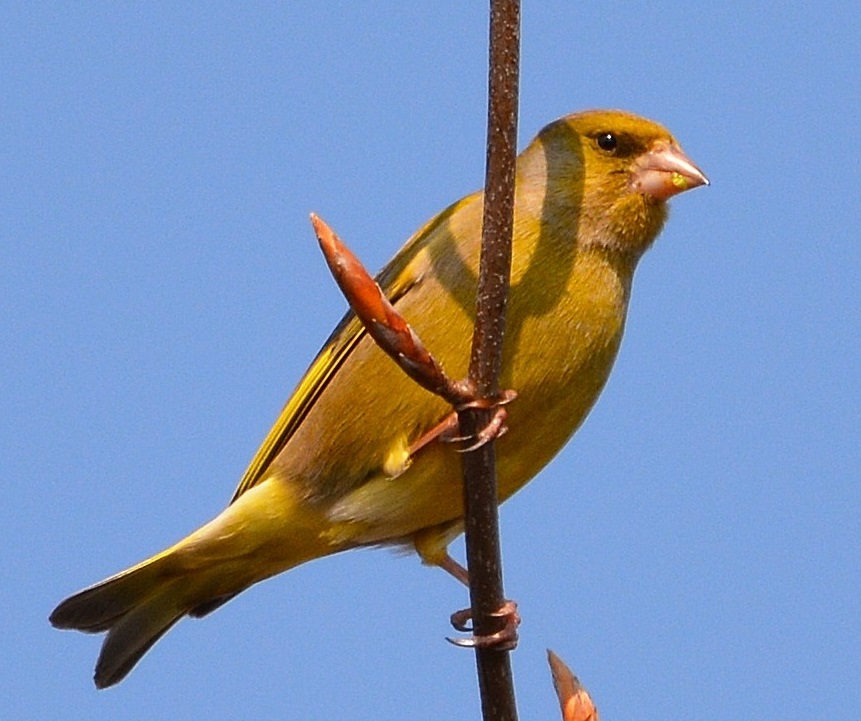
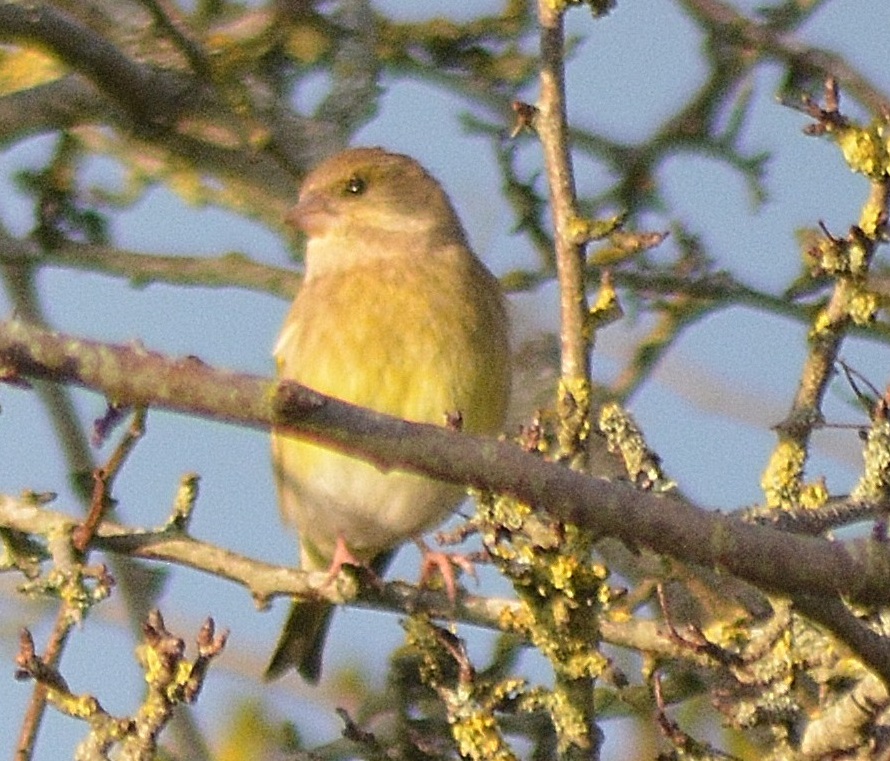
A yellow wing bar and yellow sides to the tail are a good identification of the Greenfinch, and the male (shown above left) has a much brighter plumage than the female (shown above right). Greenfinches are a common garden visitor and can often be heard singing along hedgerows with often a wheezy sound.
Goldfinch
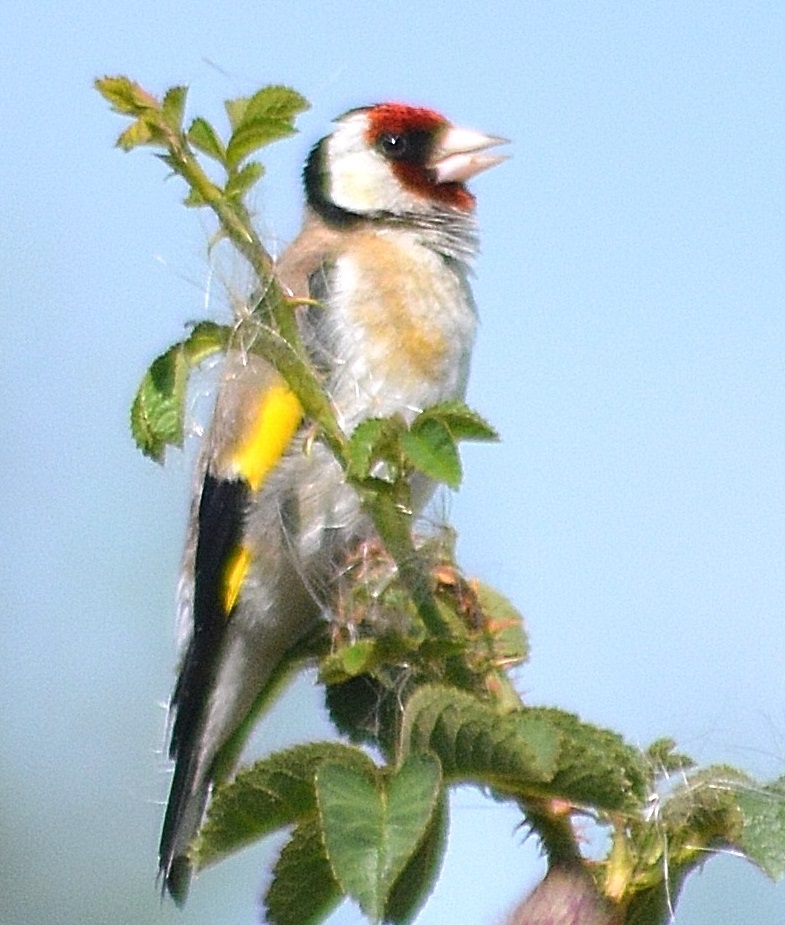
Goldfinches are common in our area and can be found in woodlands, gardens and scrub areas, often flocking together in groups. They are seed-eaters and will come to bird tables and nut feeders. The Goldfinch pictured here was singing from its perch opposite the pond at the Community Woodland while its mates fed on thistle seeds below.
Linnet
Linnets are a common resident of the finch family and in winter will flock together with many other finches and buntings. The Linnets pictured here were taken in November 2019 at West Sedgemoor.
Chiffchaff
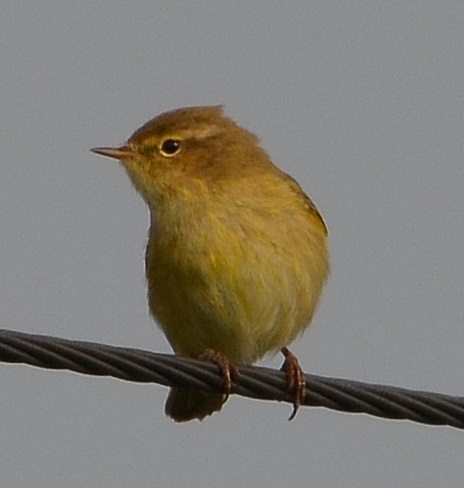
Chiffchaffs are a spring visitor of the warbler family and many can be heard locally in spring, including at the Community Woodland, as they sing almost constantly with a ‘chiff-chaff’ sound which gives them their name. The Chiffchaff pictured was taken in April 2019 near Windmill Hill.
Willow Warbler
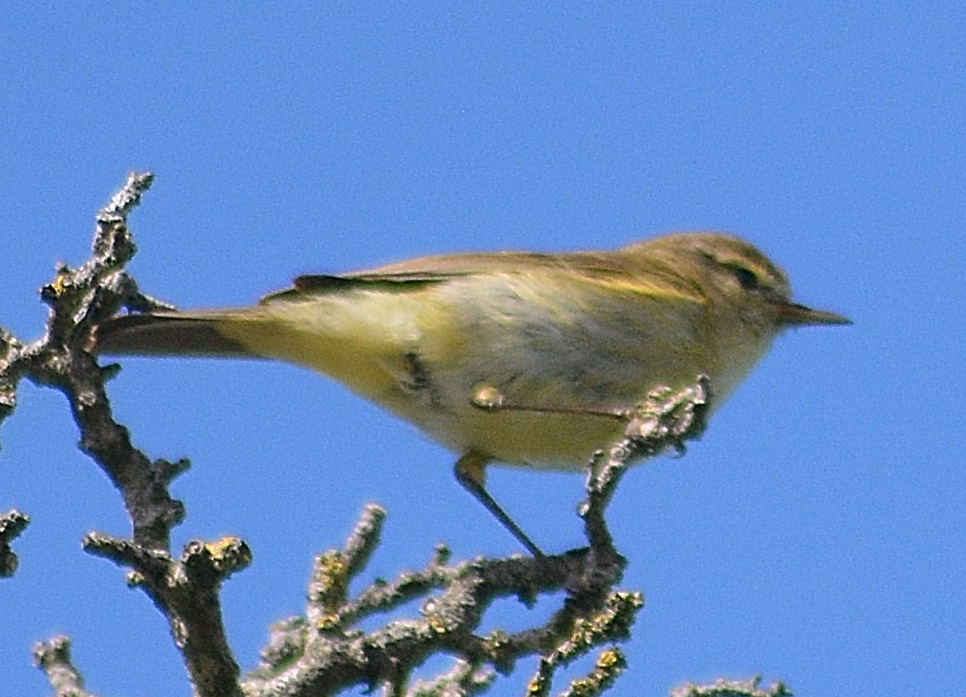
Willow Warblers are a common summer visitor and difficult to distinguish from Chiffchaffs. There is a slight difference in plumage but the easiest way to identify them is by their song. The picture was taken in June on the edge of North Curry Meadow.
Whitethroat
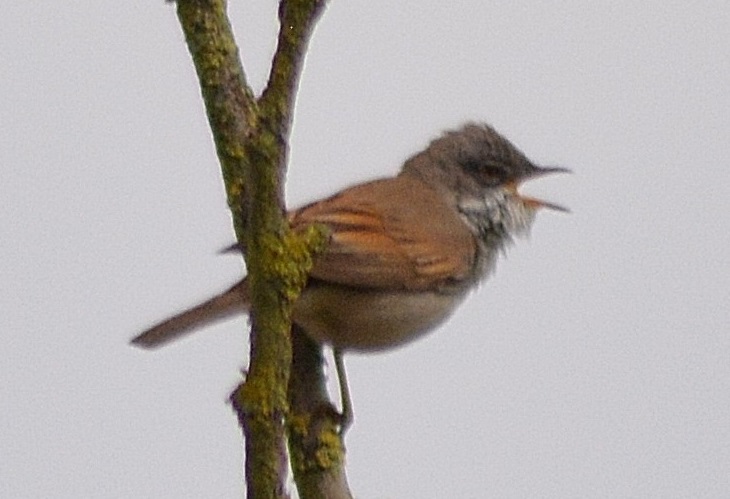
Whitethroat are a spring/summer visitor of the warbler family and can be found in hedgerows and on scrubland, heaths and gorse-covered areas. This photo was taken on the edge of the Community Woodland in May 2019.
Pied Wagtail
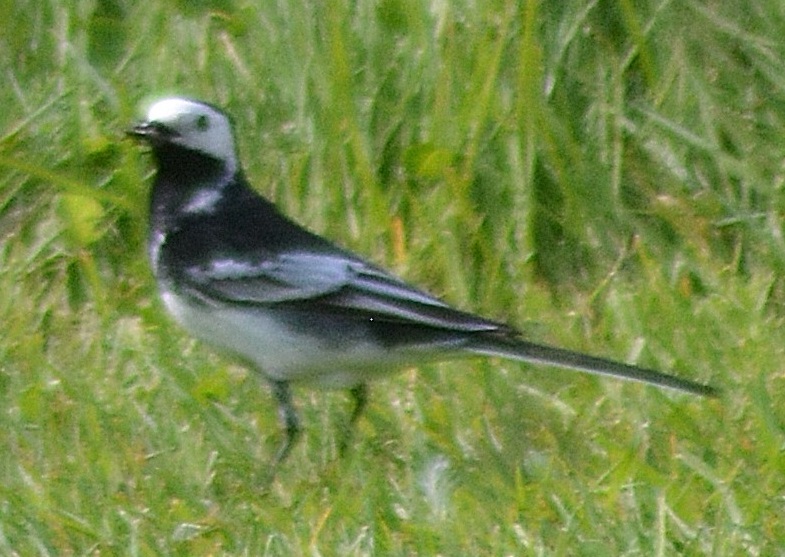
Pied Wagtails are a common sight in the area, preferring places with short grass such as playing fields, parks and lawns where they feed on insects. This Pied Wagtail with a beak full of insects was taken in May 2019 at the Community Woodland.
Rook
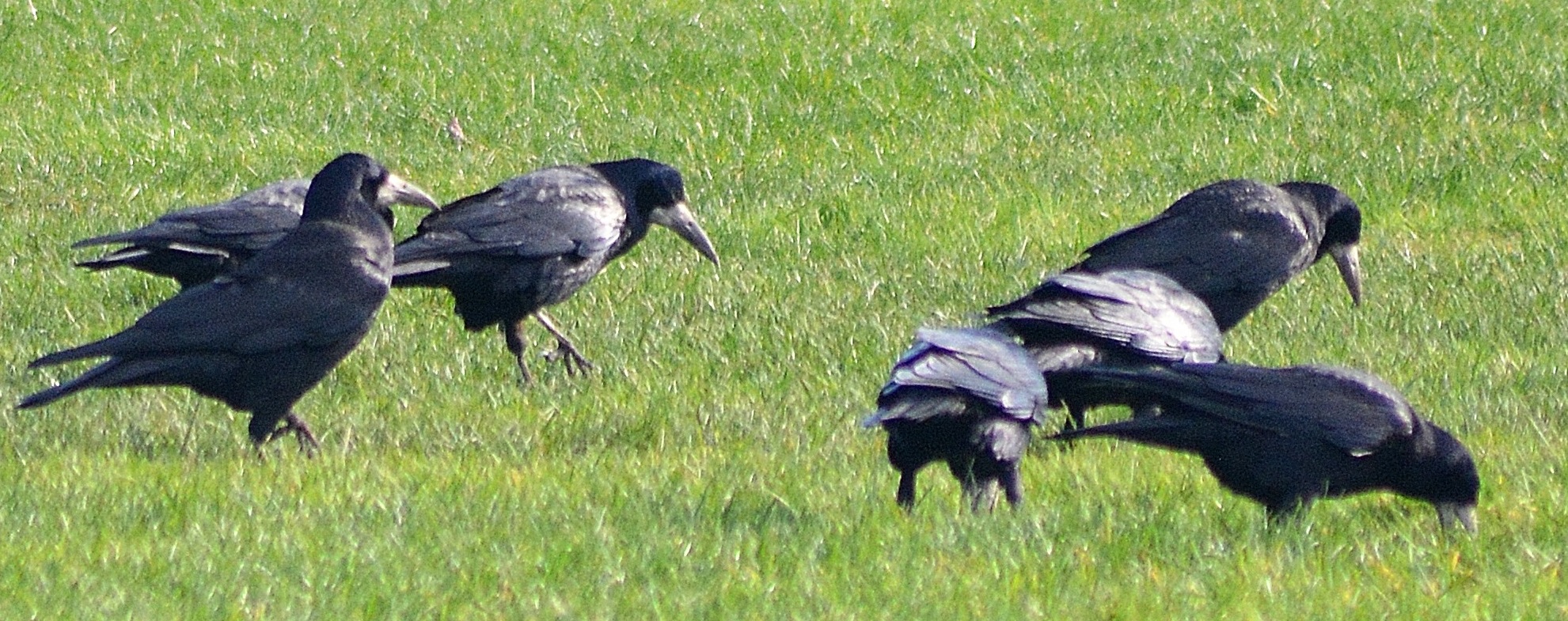
Rooks nest high up in trees in colonies known as rookeries and can be noisy and active from March to May. There is a notablerookery in the trees next to the church.
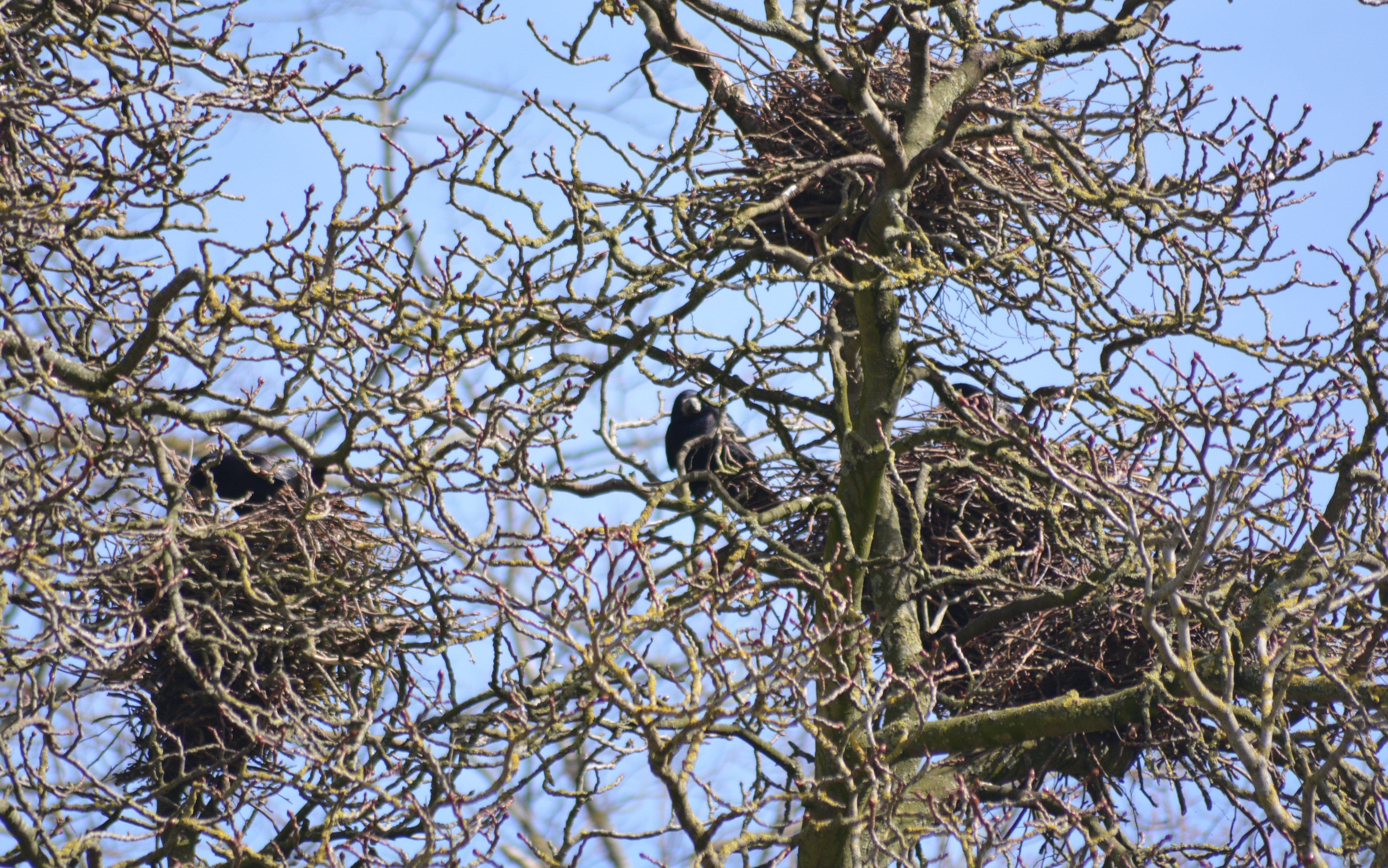
Rooks are omnivores, mainly taking worms, leather jackets, seeds and roots. One of the easiest ways to distinguish Rooks from Crows is by the beak: Rooks have a light, buff-coloured beak with a bare patch at the base, while the Crow’s beak is black.
Crow
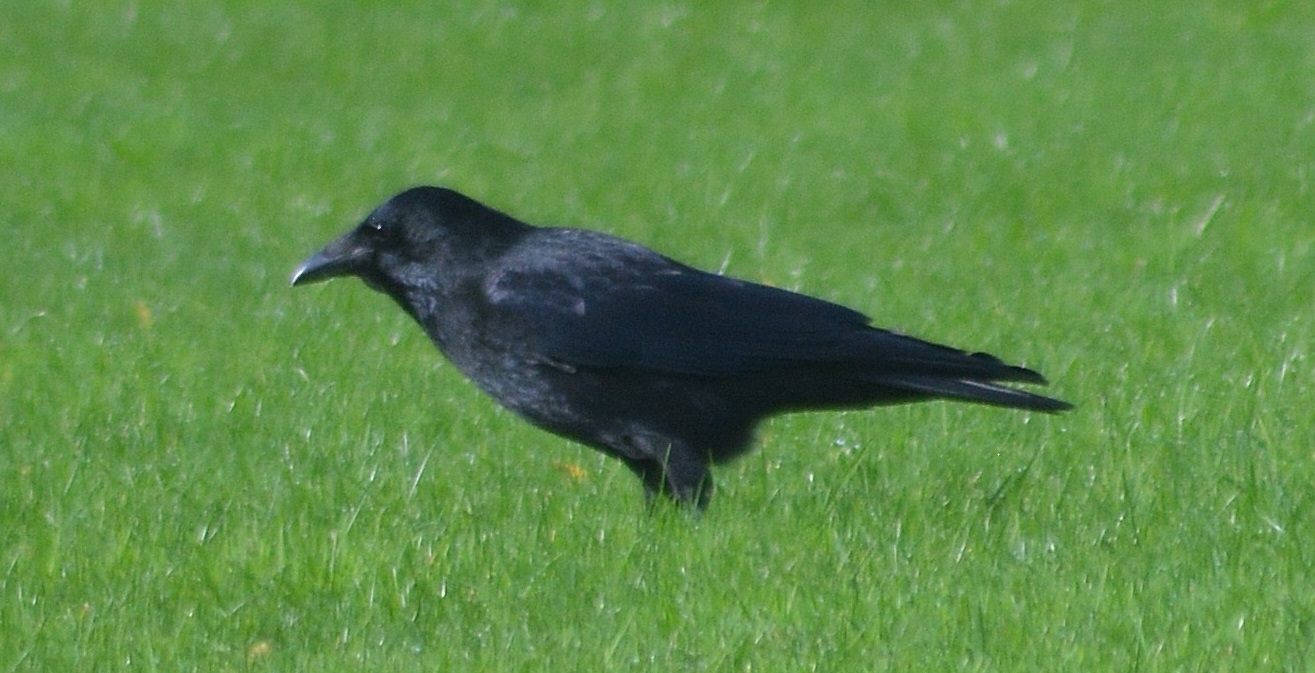
Crows are one of our common corvids and a widespread resident. They are also known as Carrion Crows as they will eat carrion, but are opportunistic feeders, also taking live prey, and they will quite happily scavenge from rubbish tips, car parks or anywhere food has been left. Crows, unlike Rooks, nest singly, usually high in a tree.
Jackdaw
Jackdaws are common and widespread over the UK. They have pale blue eyes and a smoky grey crown, and adapt to a variety of food sources. They are opportunists not only in their food sources but also their nest sites which can range from chimneys to quarry faces, sea cliffs, holes in old trees and even owl nest boxes. Jackdaws used the Barn Owl box in the oak tree at the woodland in the spring of 2019.
Magpie
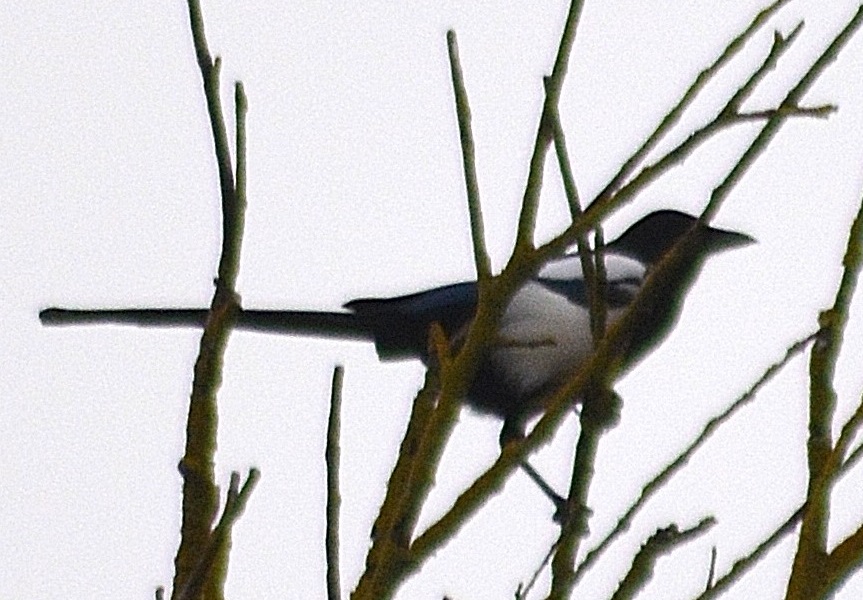
Magpies are generally a very common resident and are very opportunistic feeders, scavenging on many food sources. They can quickly clear a bird table of scraps put out before other birds have had a chance to take their share.
Blackbird
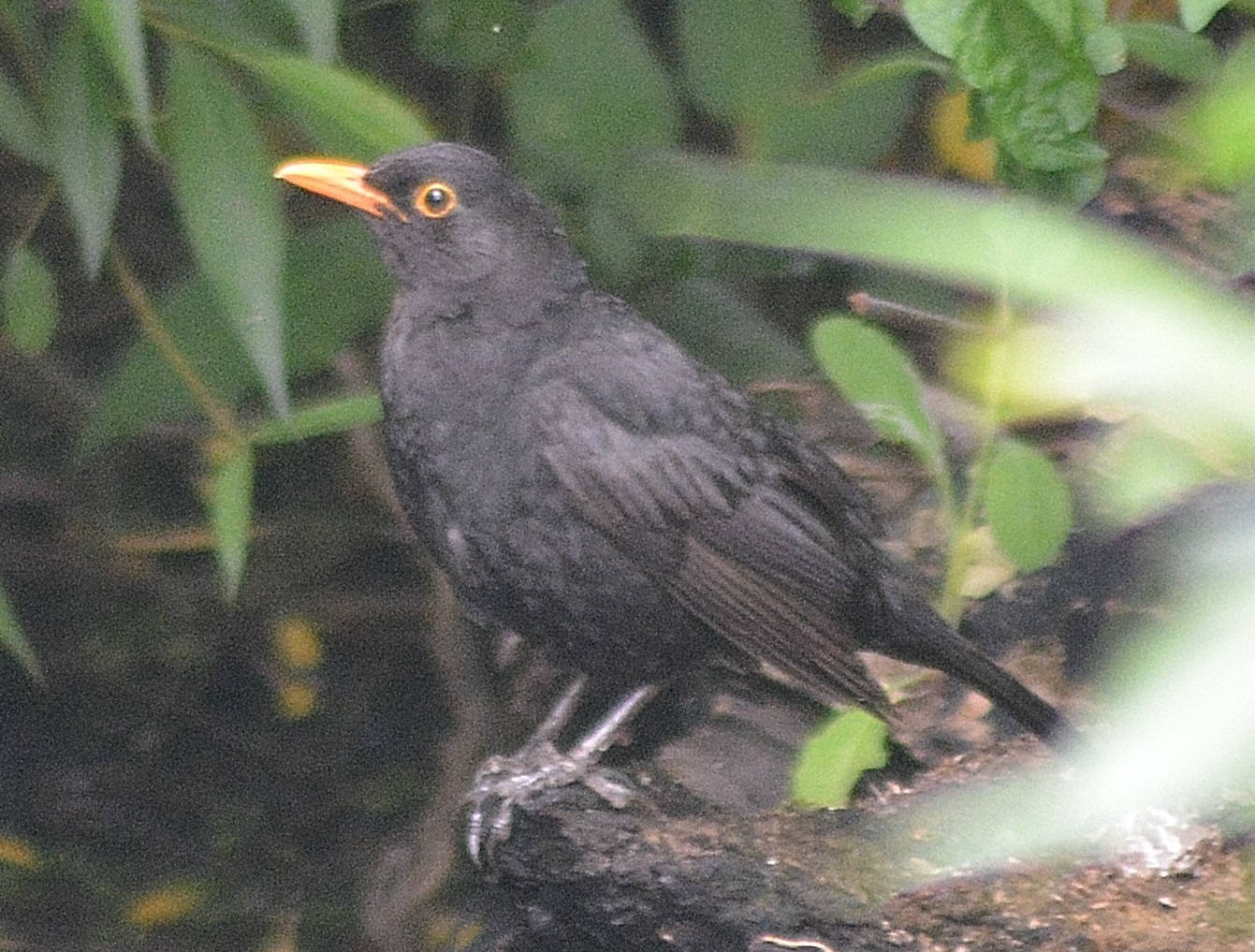
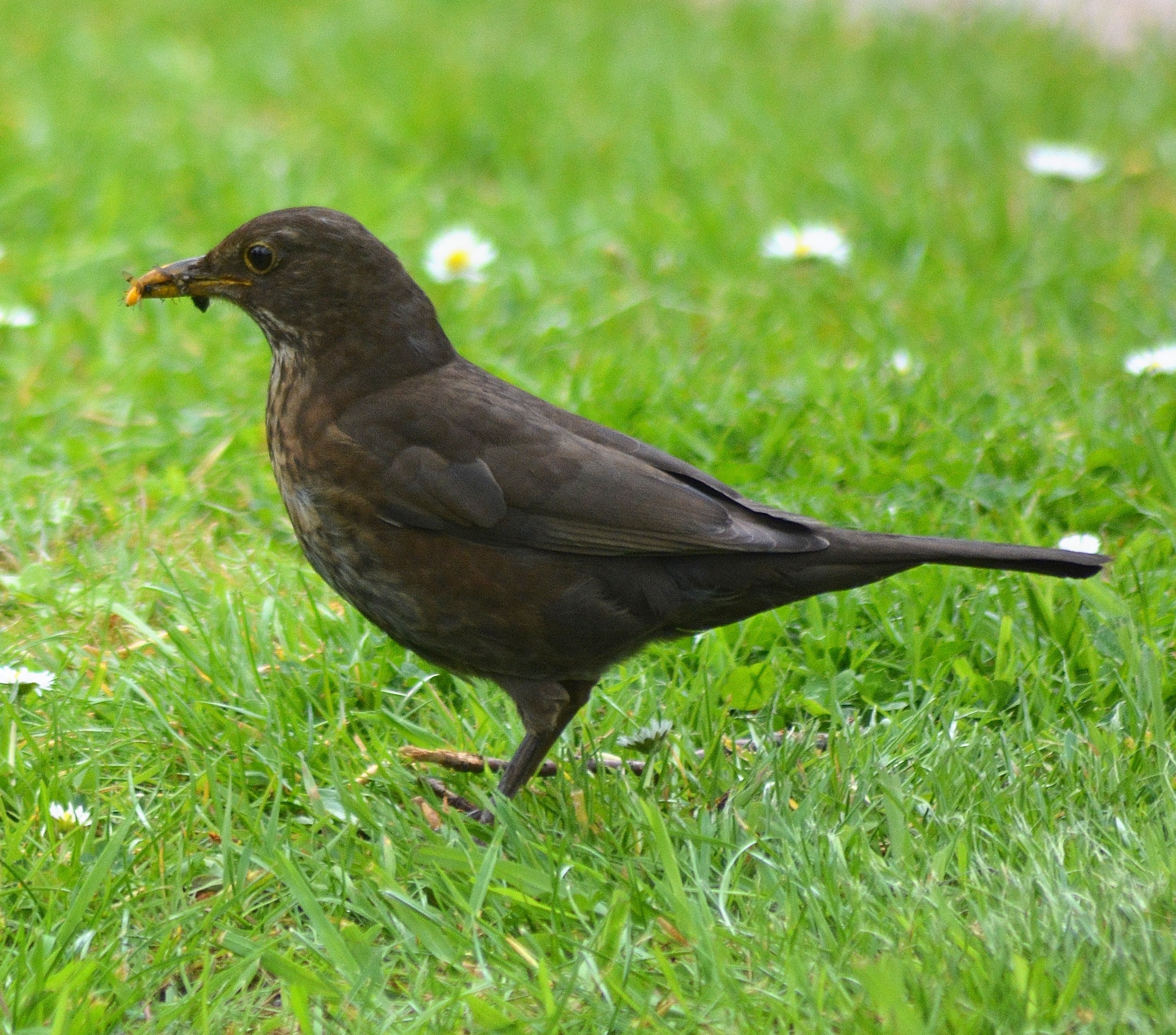
Blackbirds are one of our resident songbirds and a common sight in gardens, farms, woodlands and parks. The male (seen above on the left) is black with a bright yellow beak and eye ring, while the female (shown on the right) is brown and does not have the bright yellow bill or eye ring.
Song Thrush
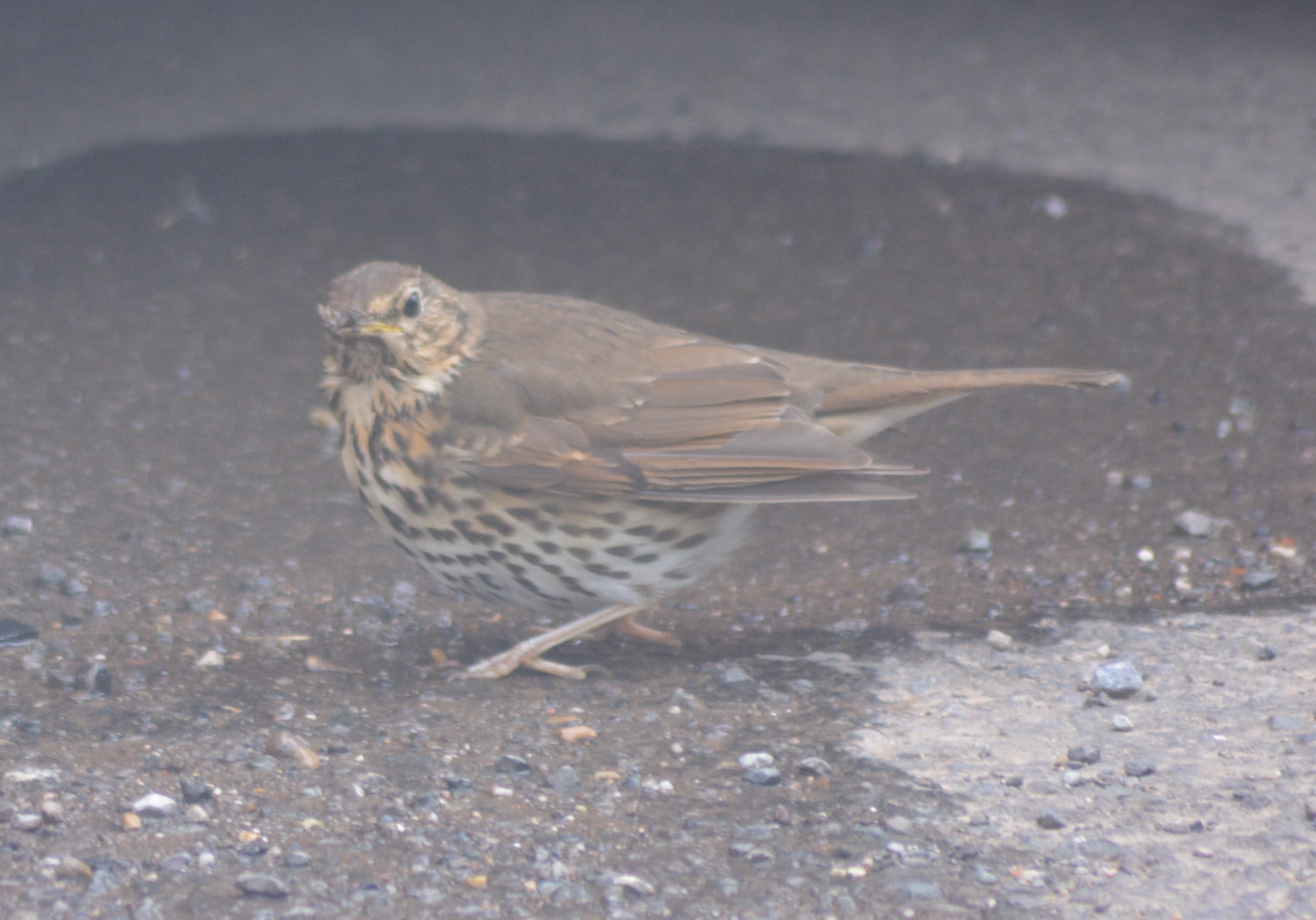
Song Thrushes are a common bird in our area and have a lovely repetitive song that can be heard throughout the spring as they sing from a high perch. The thrush pictured here was taken in May on Windmill Hill.
Mistle Thrush
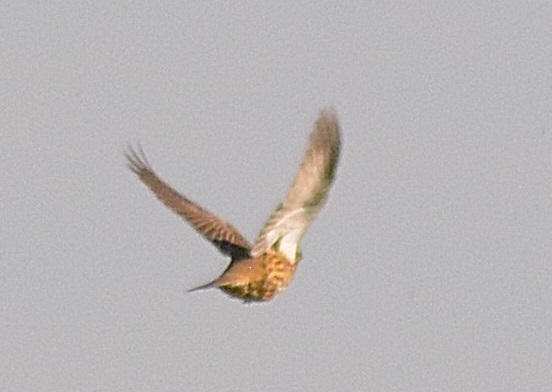
Mistle Thrushes are a resident but their numbers are often boosted in the winter months by influxes of birds from Europe. Mistle Thrushes can be found in areas of open woodland, parks and mature gardens where they feed on fruit- and berry-bearing trees and shrubs.
Fieldfare
Fieldfares are a common winter visitor, normally arriving in flocks and often flocking together with Redwings, both which are of the thrush family.
Redwing
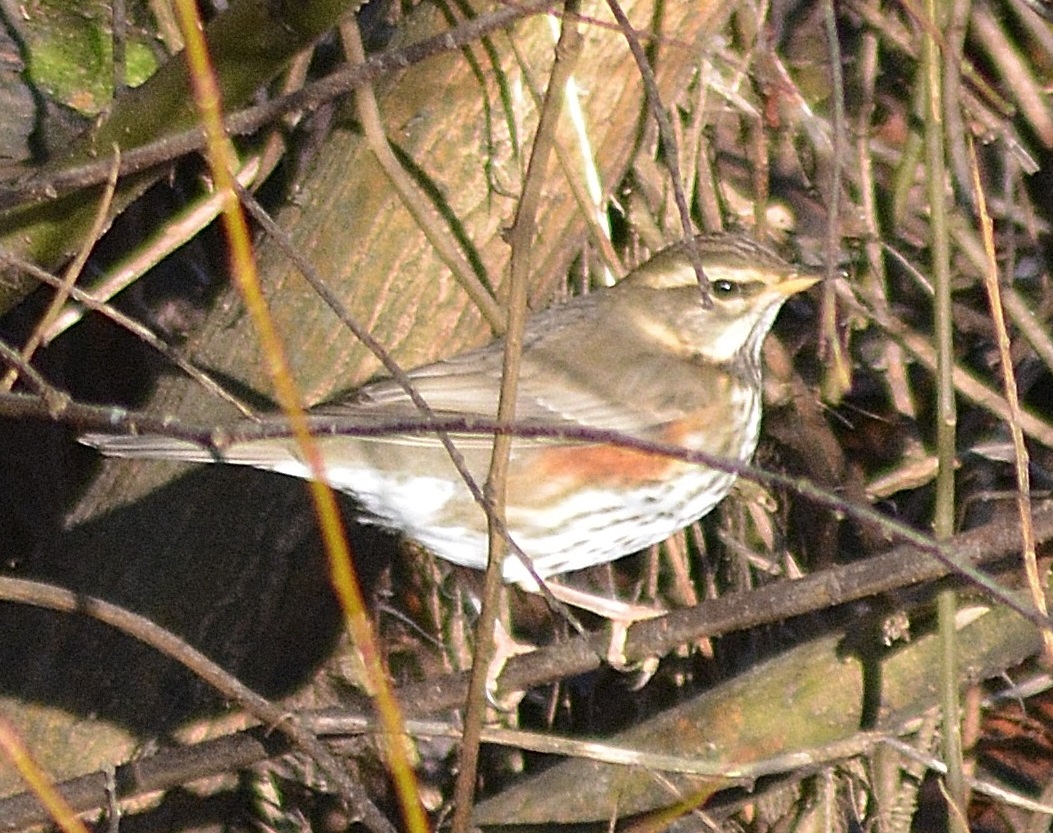
Redwings are a winter visitor of the thrush family and often flock together with related family species such as Fieldfares and Mistle Thrushes. This one was taken in November 2019 by the pond in the corner of the sports field.
Starling
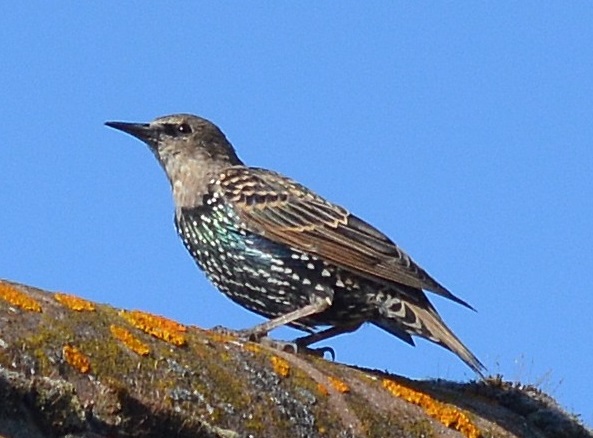
Starlings are a common resident in the area and tend to nest in holes in trees and buildings and have been known to use nest boxes. They are opportunistic feeders, taking grain, insects and worms, and are quite happy to use bird feeders. They are social birds, forming flocks in the winter, and are a popular sight with bird watchers when they give terrific displays known as murmurations as they go to roost at dusk. The Starling pictured was showing off its colours sitting in the sun on the roof of the sports pavilion in September 2019.
Robin
Robins are popular with many gardeners and can be found almost anywhere from city parks and gardens to farmland and villages, and will regularly visit bird tables. They have also become a firmfavourite on Christmas cards.
House Sparrow
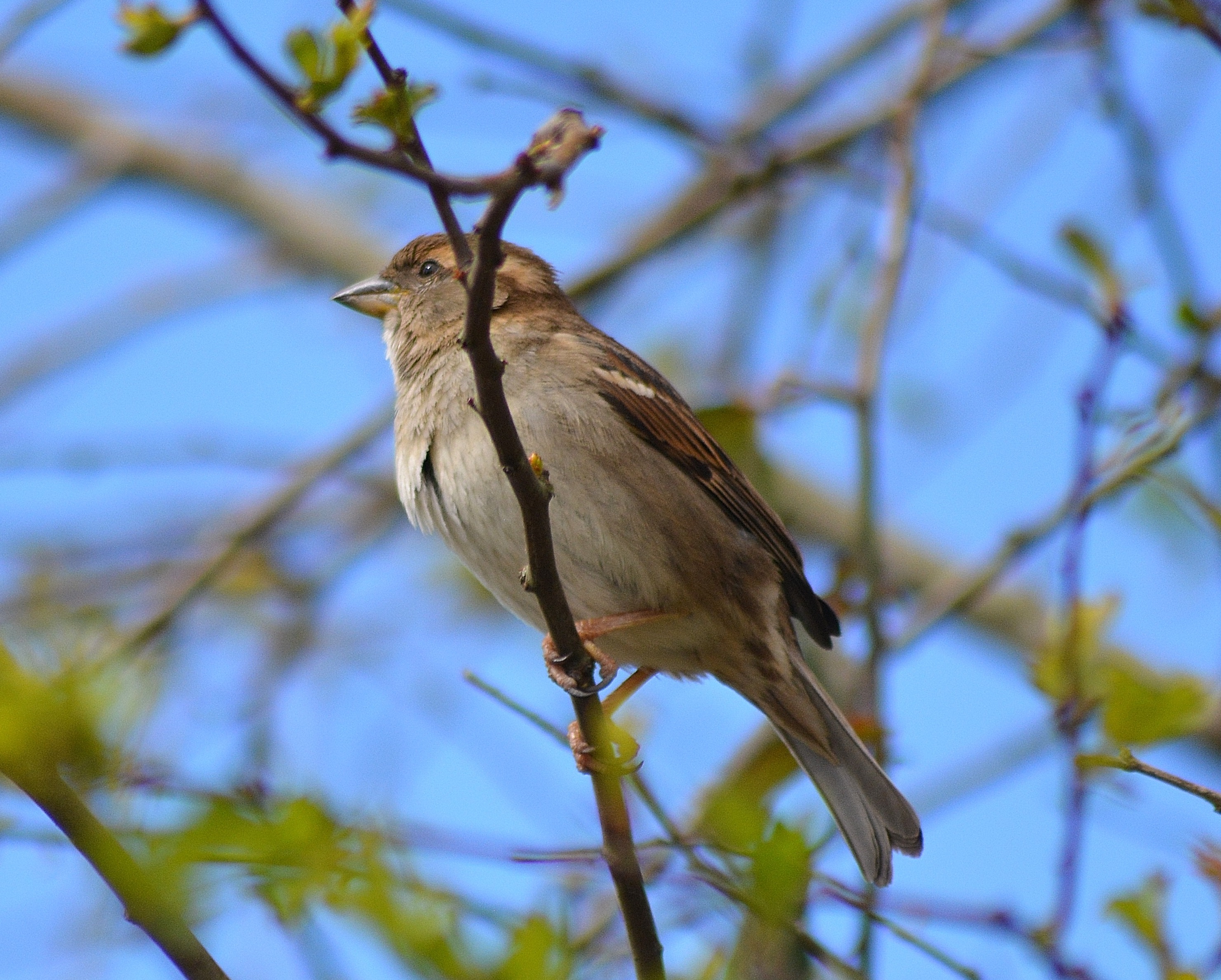
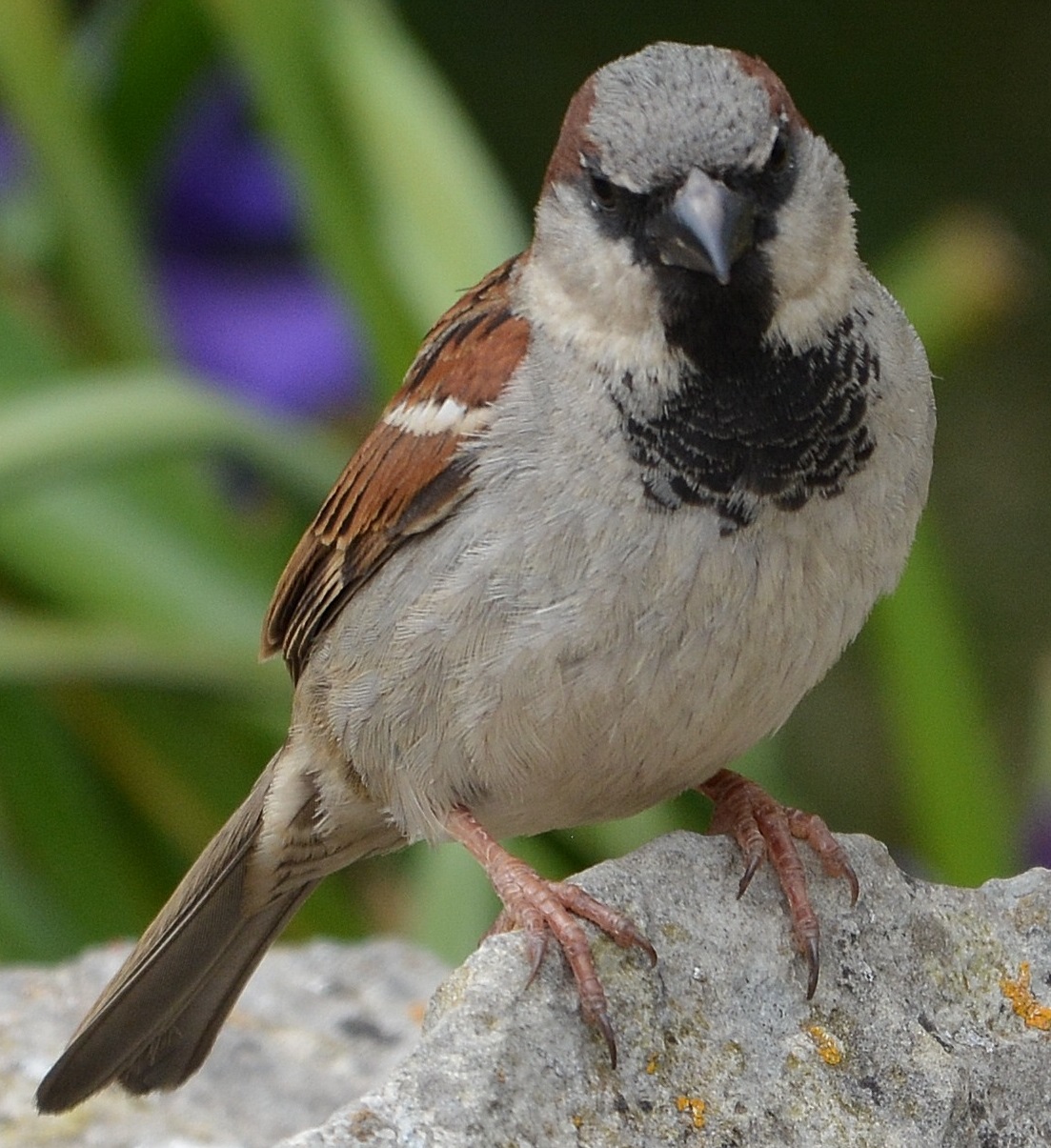
House Sparrows are a common resident and can be found almost anywhere near human habitation. They can be a very chirpy bird, especially during the breeding season when they will nest in any convenient hole in a house or farm building and have been known to nest in old House Martin nests. The picture to the left shows a male House Sparrow taken in the village in May 2019; the picture to the right shows a female House Sparrow taken in April 2020.
Dunnock
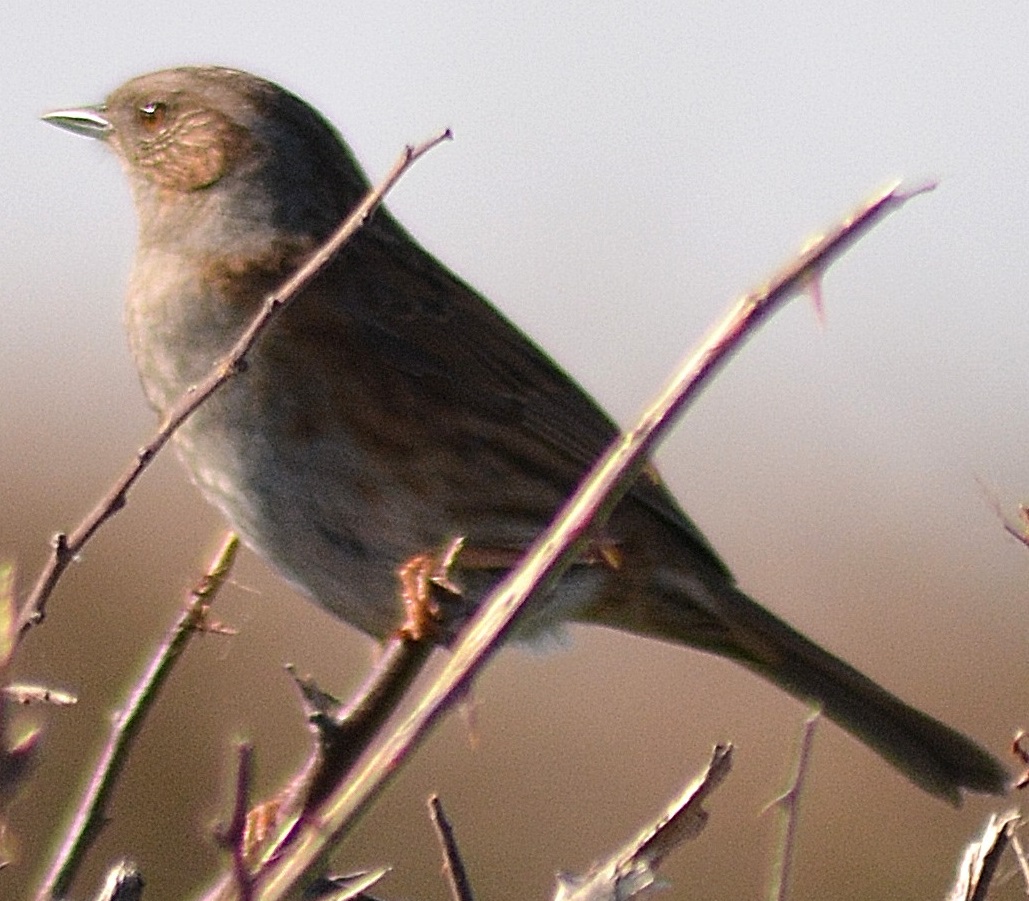
The Dunnock is a common yet much overlooked bird and has a tuneful song. It is generally seen at ground level, foraging for food, and will come to bird tables but again often feeding on the ground below. Dunnocks may seem rather dull little birds in colour but their eggs are a lovely bright blue. The Dunnock pictured here was taken in February 2019 in a hedgerow at the end of Horsecroft Lane.
Wren
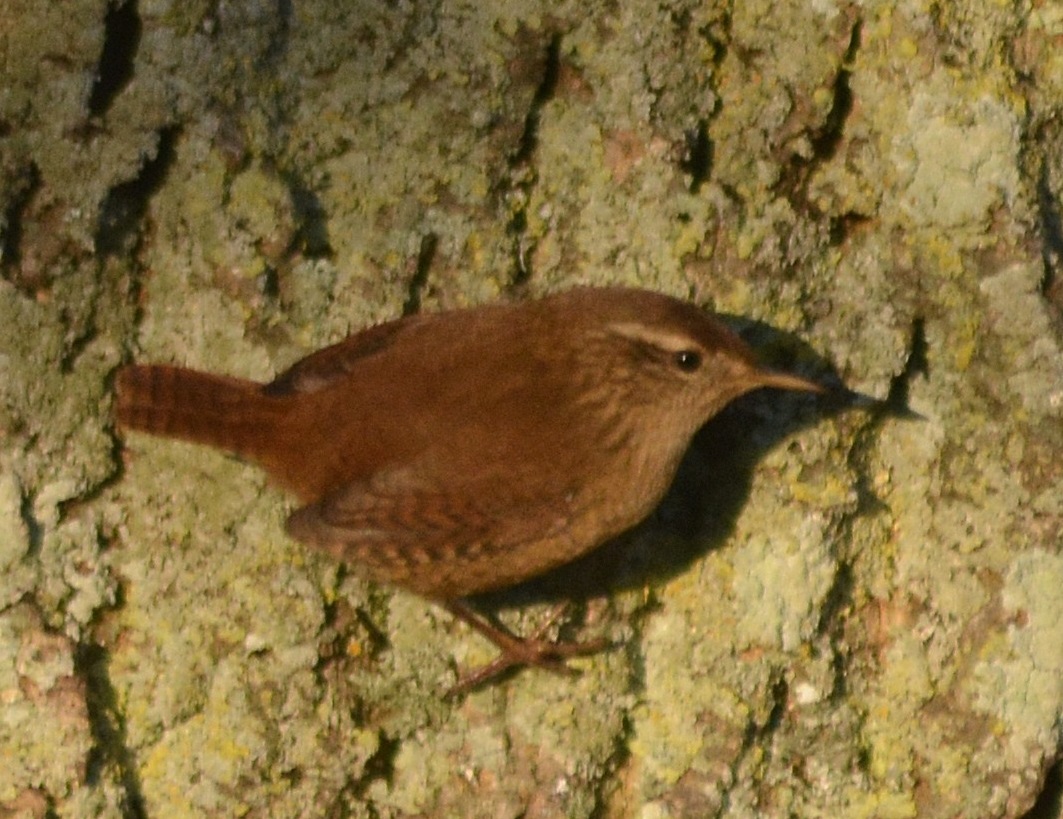
Wrens are a small, common resident, but are not always easy to spot as they dart from cover to cover. Male Wrens will build several nests and the female will choose the one she wants to use.
Goldcrest
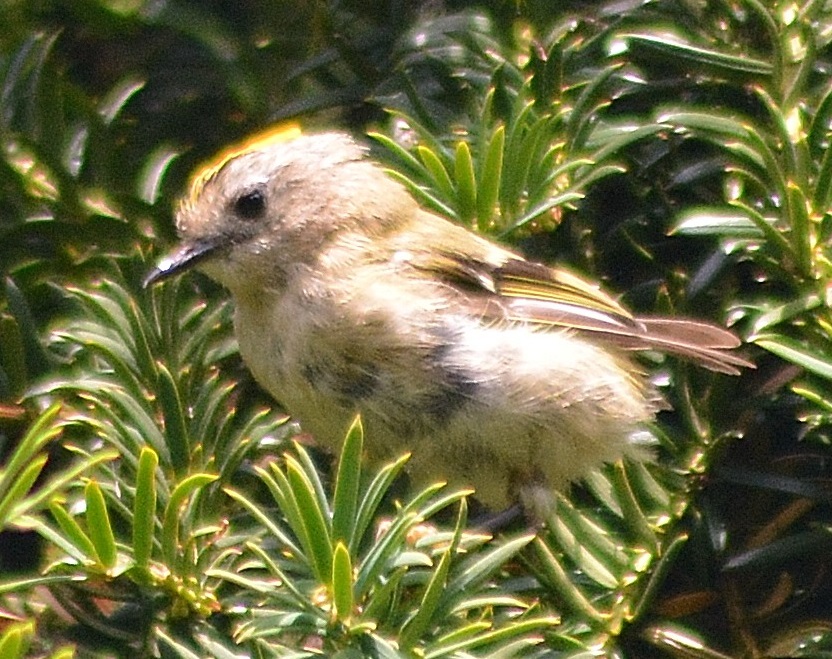
Goldcrests are the UK’s smallest bird, though many assume it to be the Wren. They are a common native bird preferring fir woods where normally they spend their time high in the canopy feeding on insects so they are not easy to spot, but they can also be found in deciduous woodlands. In North Curry, they can sometimes be seen in the yews in the churchyard.
Swift
Swifts are a summer visitor, usually arriving here in early May and leaving again in August. Their screeching call as they race through the sky in the centre of the village is a characteristic sound of summer. Apart from nesting time, Swifts spend their entire life on the wing, feeding and sleeping.
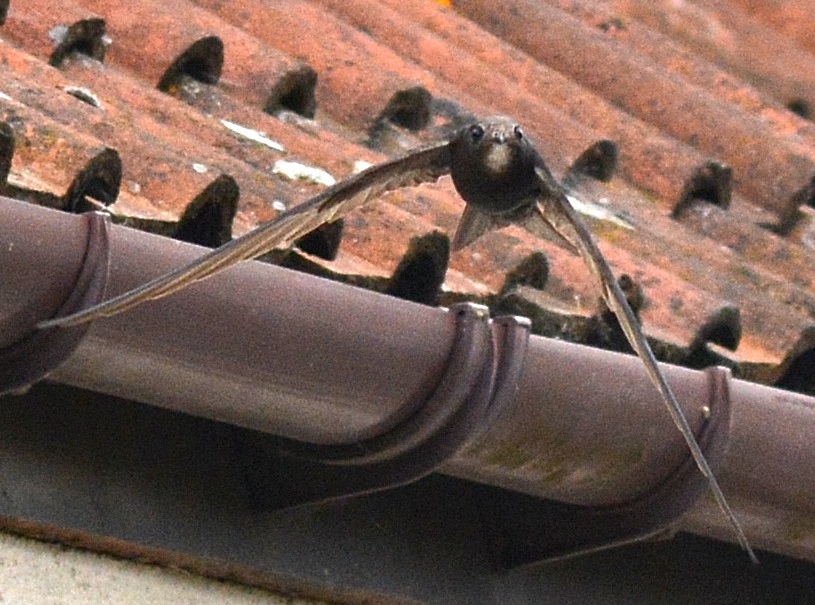
Swifts are in decline, estimated to be down by 65 per cent over the past few years, and are probably suffering from a shortage of nesting sites (they like to nest under the eaves of houses) as well as insect food. Swift boxes can be put up and councils help fund them in certain areas.
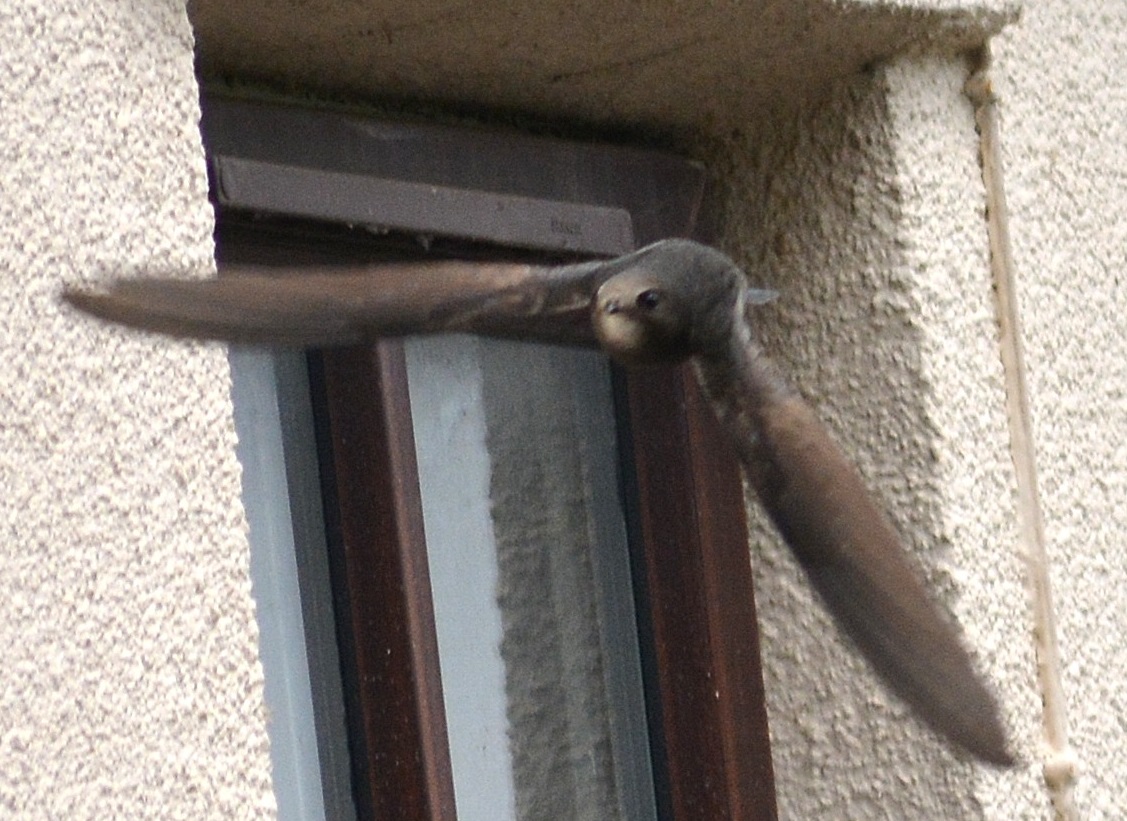
Swallow
Swallows are another of our summer visitors, arriving in early April and staying through the breeding season until late summer. They are quite happy living alongside people, and build a half cup-shaped nest of mud lined with feathers in almost any accessible outhouse, shed or barn, even where human activity is taking place. The Swallow has a distinct red face and a long, thin tail.
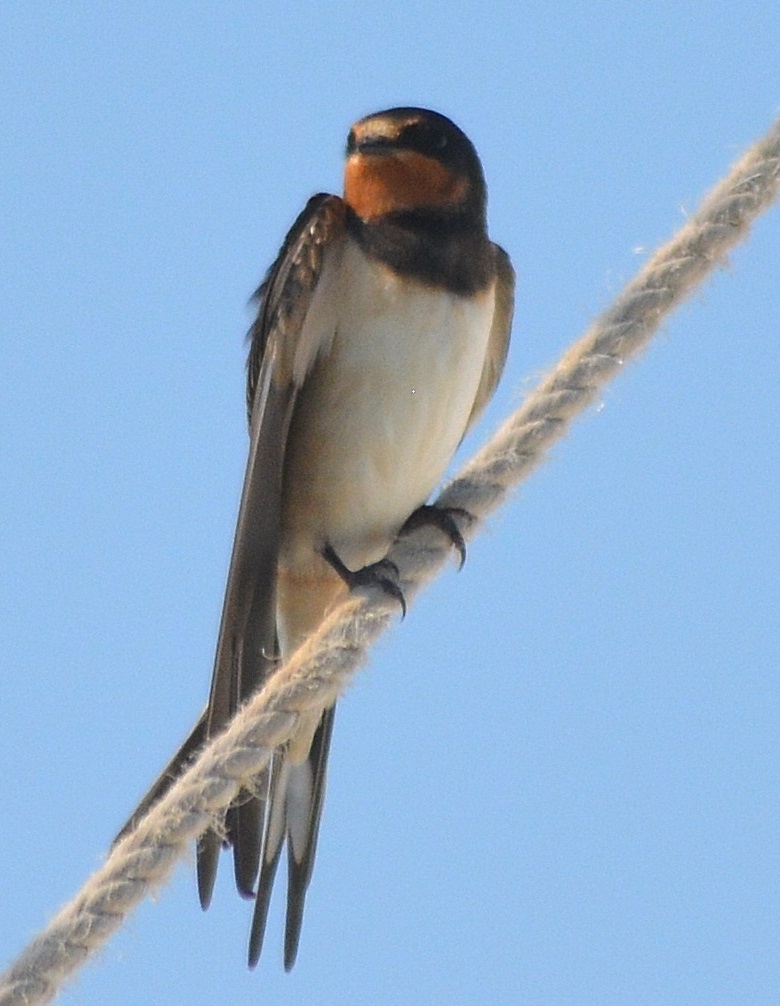
At the White Street Sports Field, Swallows can be seen gliding low to the ground, catching small flying insects.
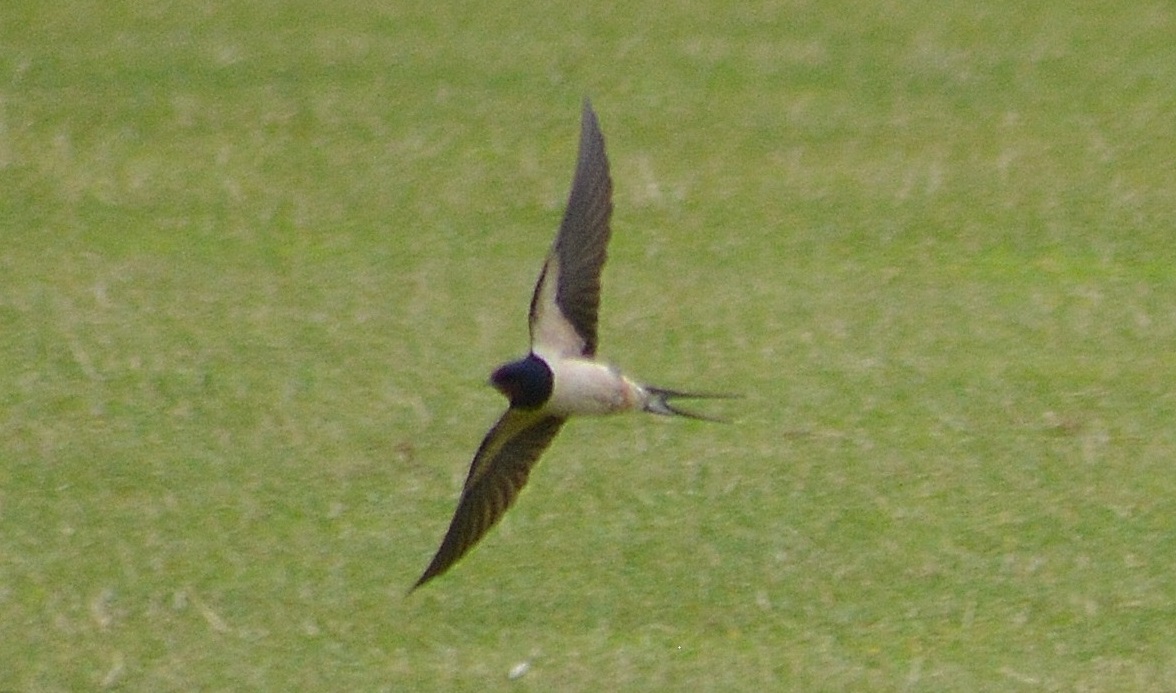
House Martin
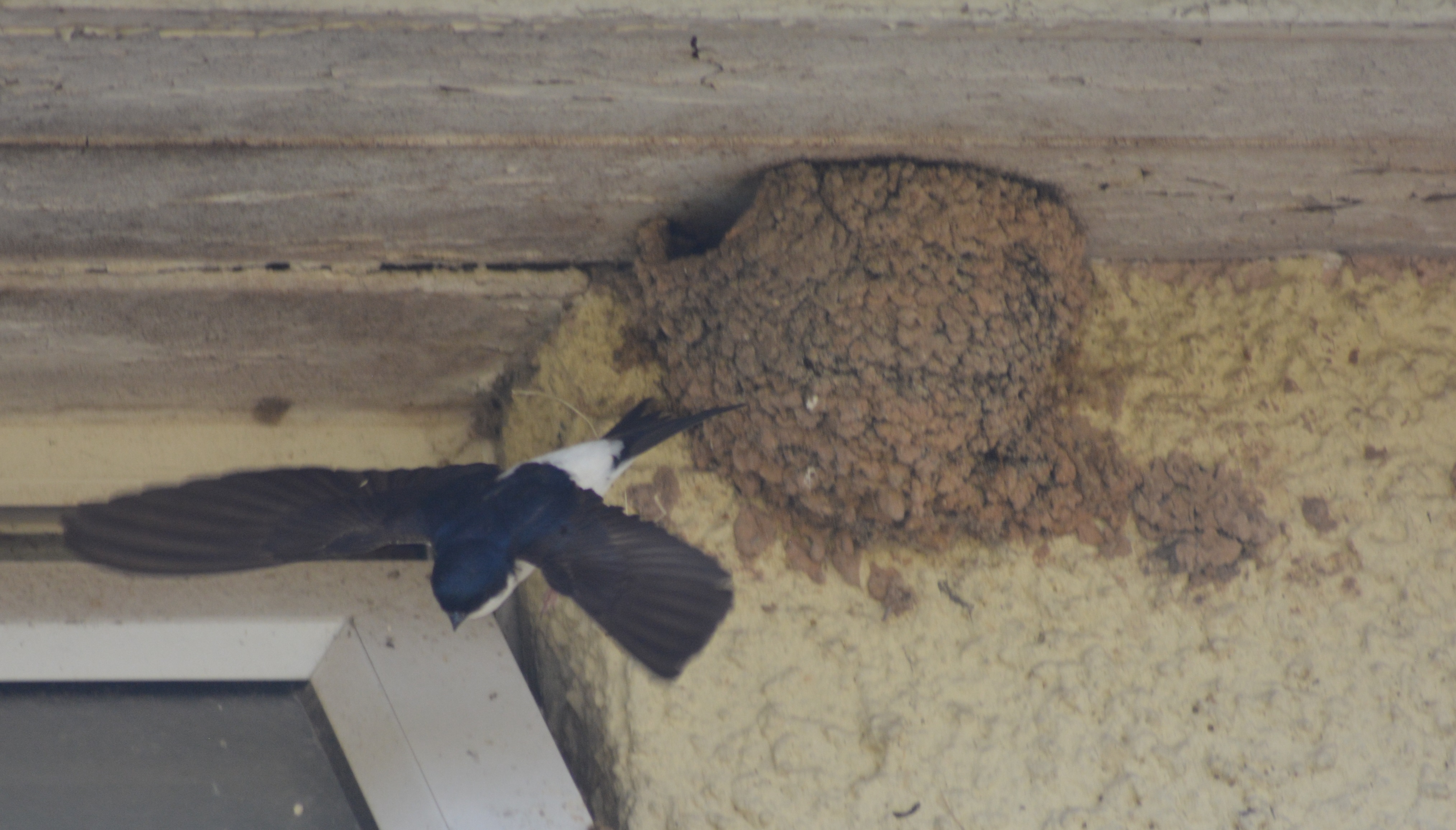
House Martins are a summer visitor which arrive in late April/early May and build nests of mud, usually under the eaves of houses where several nests can often be found side by side. One of the best ways to distinguish a House Martin from a Swallow in flight is the short, stumpy tail and distinct white rump of the House Martin as the two species can often be seen flying together feeding on insects.
Great Spotted Woodpecker
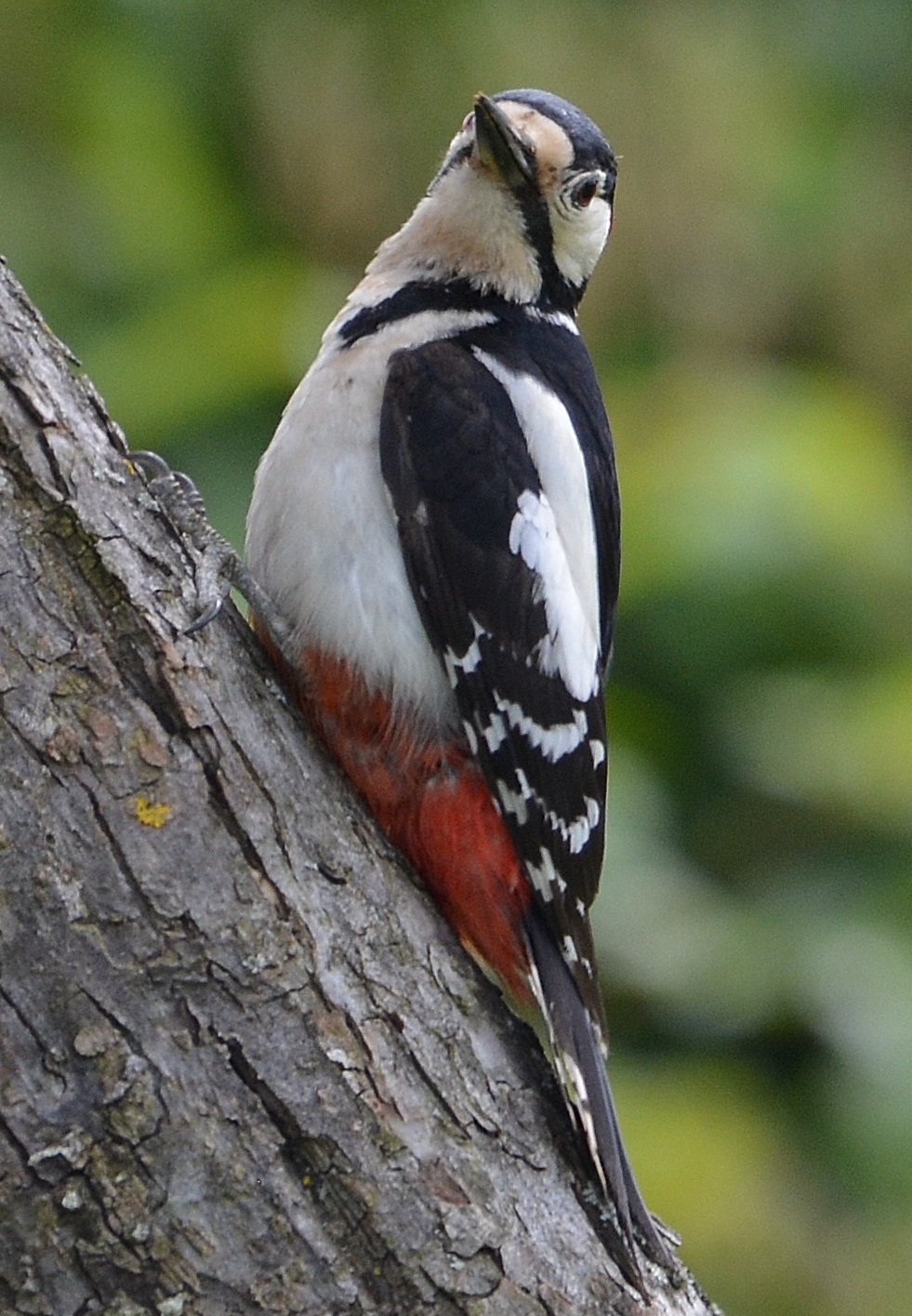
Great Spotted Woodpeckers are a common resident and are found in woodland and parks and can even be regular visitors to gardens, favouring peanut feeders if provided. They can be seen and heard almost anywhere where there are trees in our area and are often heard drumming at the Community Woodland. The one pictured here was seen off Horsecroft Lane. Great Spotted Woodpeckers nest in holes in trees which they excavate with their bills.
Green Woodpecker
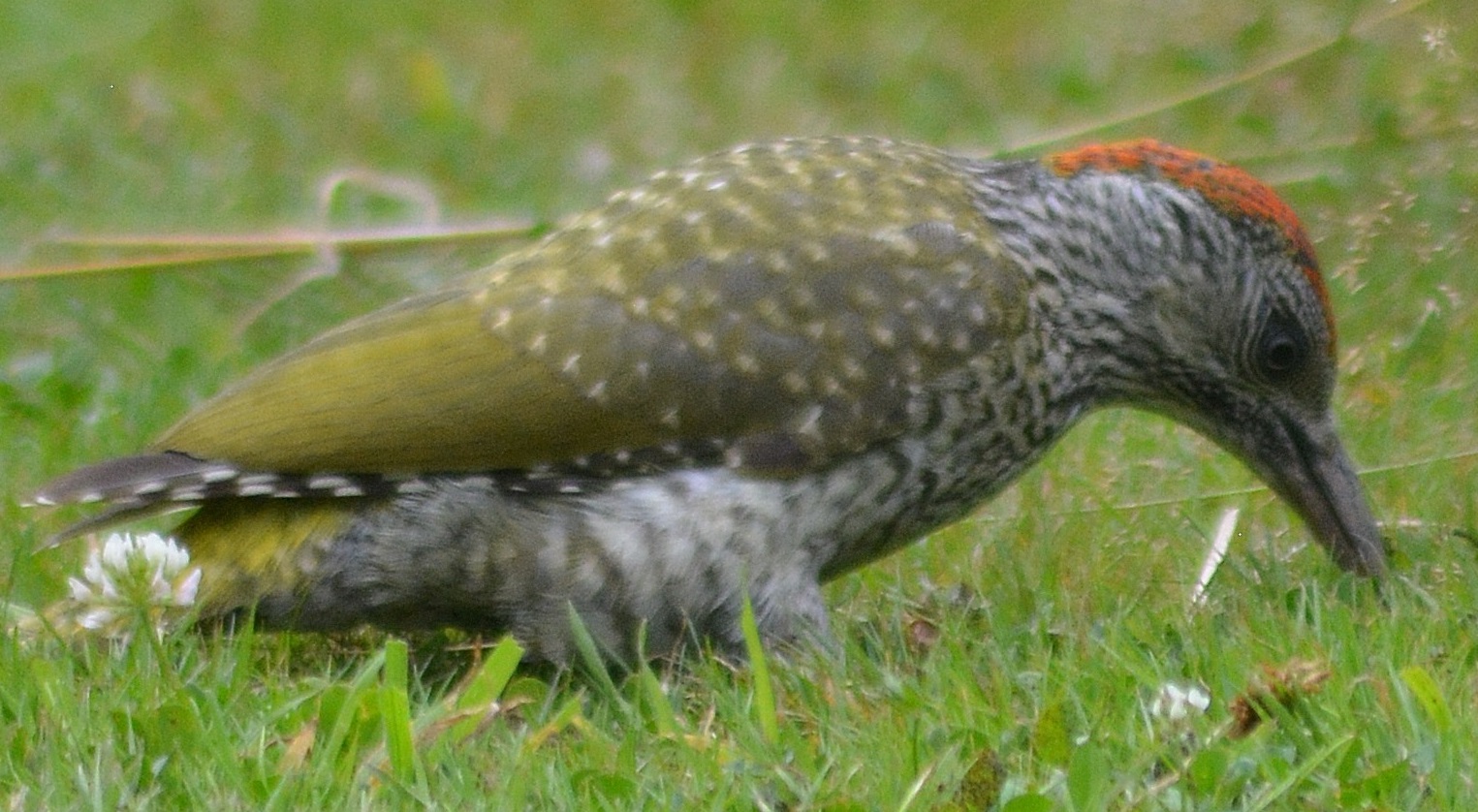
Green Woodpeckers are a common resident, preferring hardwood woodlands, but can be found in parks and gardens. They feed on insects they find by pecking at trees and also on the ground where ants nests are favoured. Like the Great Spotted Woodpecker, they drill nest holes in trees with their long bills. Green Woodpeckers are abundant in our area, but are more often heard than seen as they can be quite elusive, especially in the summer time when the leaves are out, and they are known to hide at the back of trees to avoid the observer.
Nuthatch
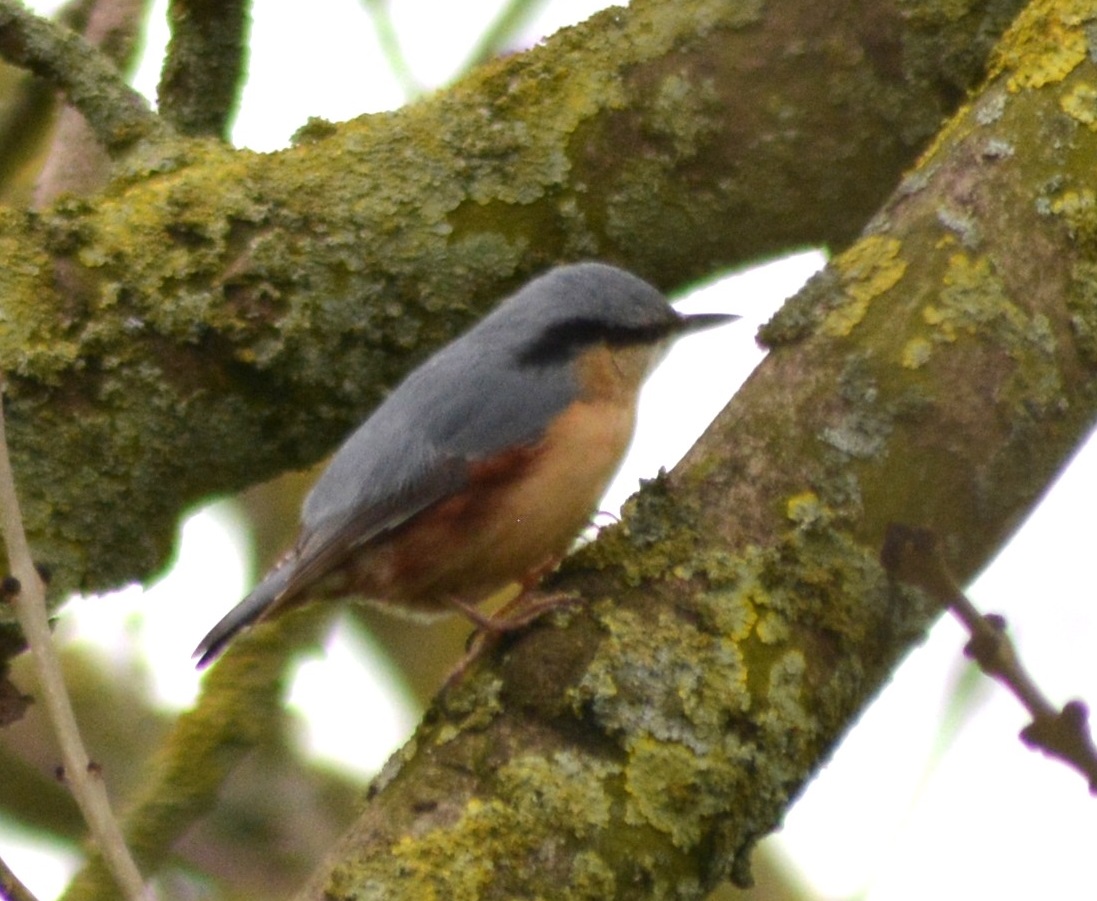
Nuthatches typically feed by working their way down tree trunks searching for insects. They are hole-nesting birds, but will use nest boxes and come to seed and peanut feeders.
Wood Pigeon
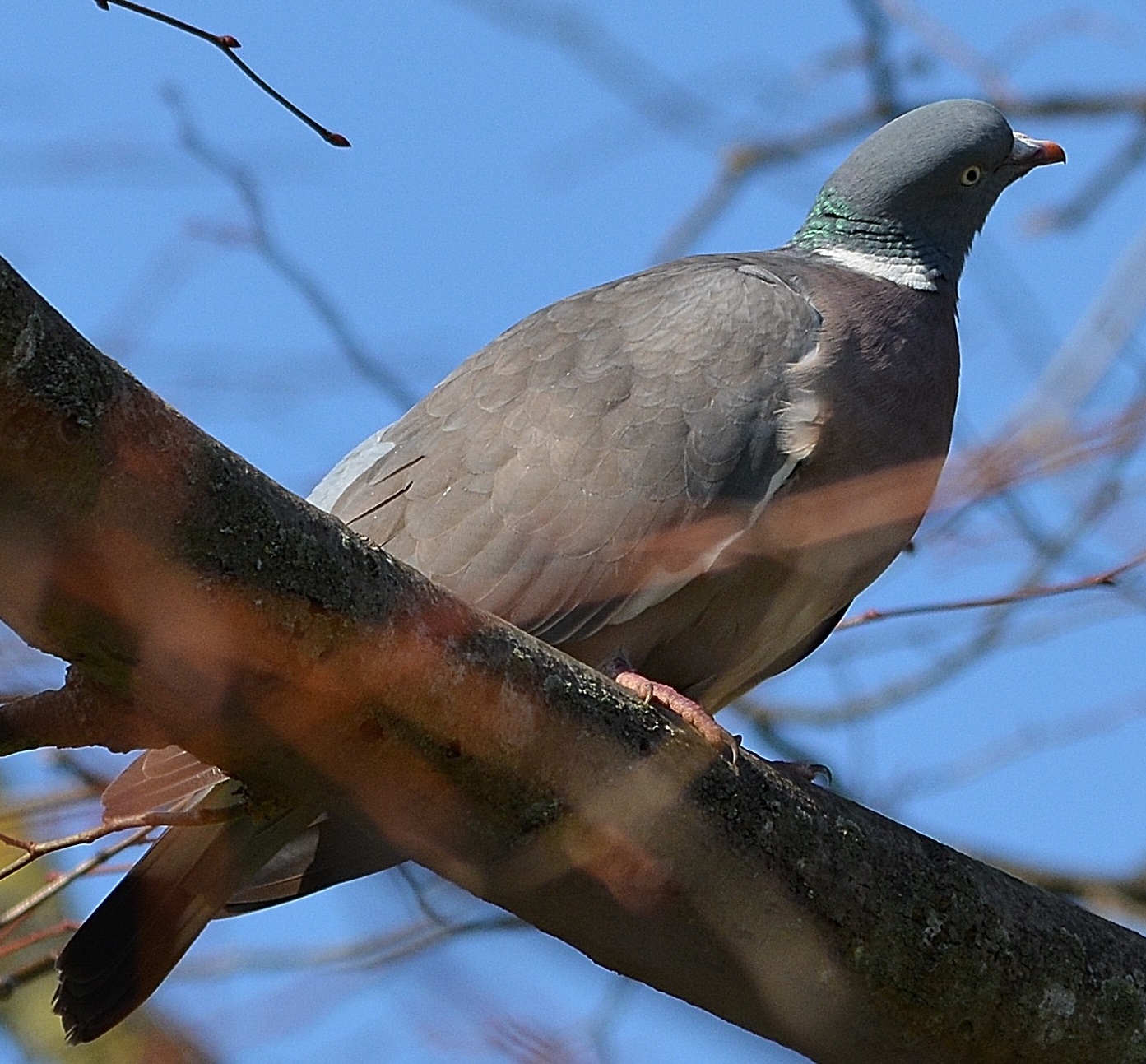
Wood Pigeons are common and widespread over the UK and often classed as pests to farmers as they can descend in number on their corn crops. Wood Pigeons build a rough type of nest often in thorn trees where they are protected from predators. This one was taken in March 2019 in the Copse on the corner of White Street.
Collared Dove
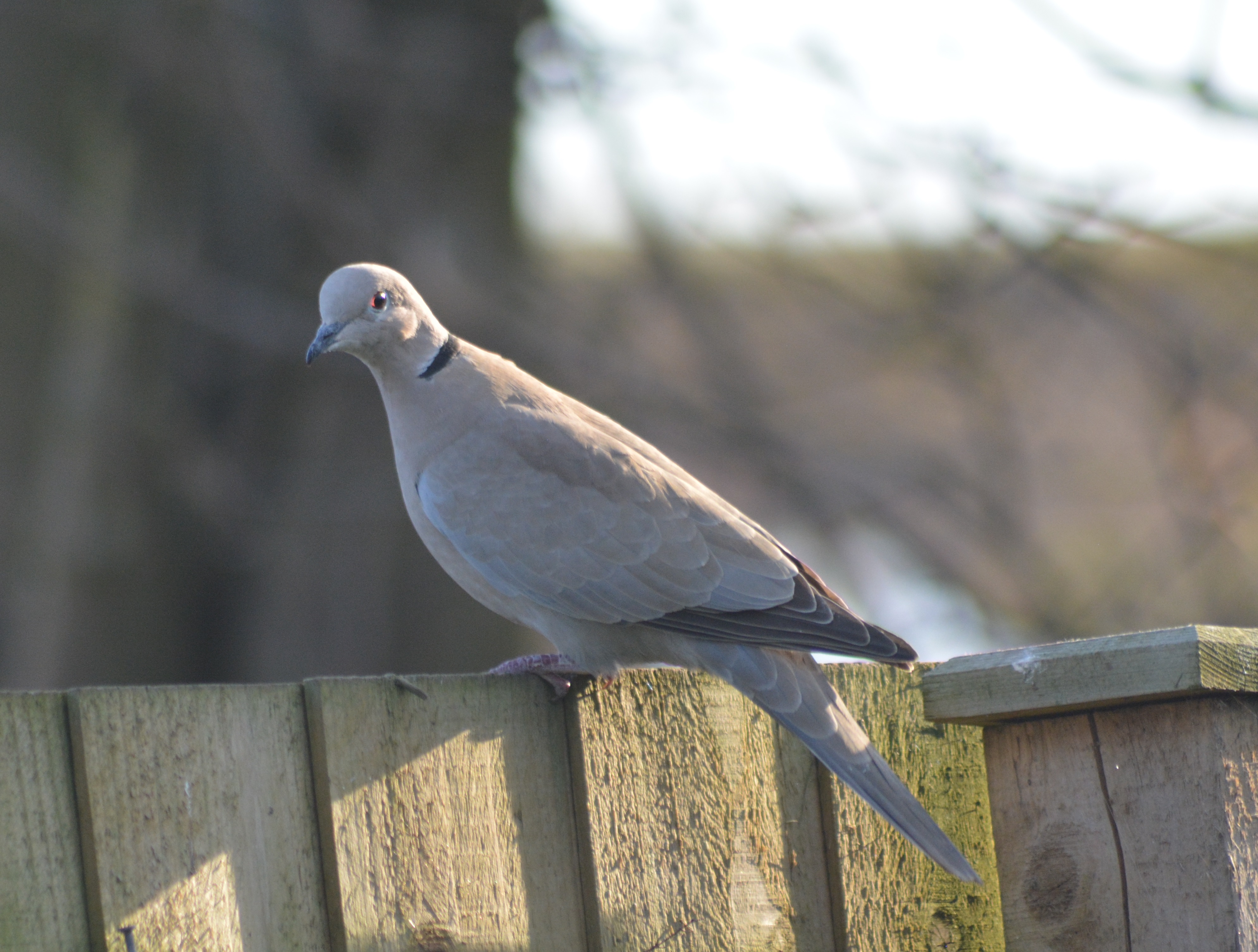
Collared Doves spread into Britain in the 1950s and have prospered here, becoming a common bird in our area where many can be seen in the village. The one pictured here was taken at the Copse in February 2019.
Pheasant
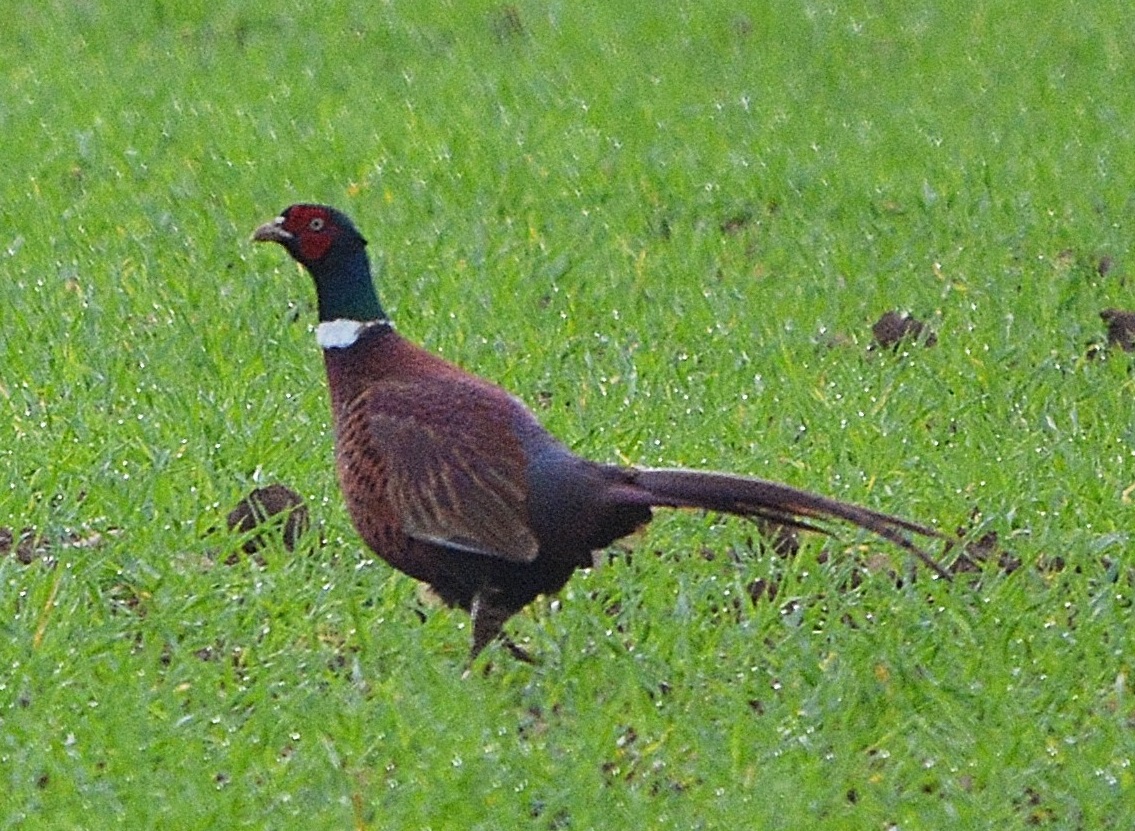
Pheasants are not actually native to the British Isles but are believed to have been introduced here in the eleventh century. Most, if not all, seen are escapees from game farms or shoots where they are released for sport. Pheasants can be seen almost anywhere in the countryside.
BIRDS OF THE MOORS
Text by Tony Hoskin (pictures, unless otherwise stated, also by Tony Hoskin)
Heron
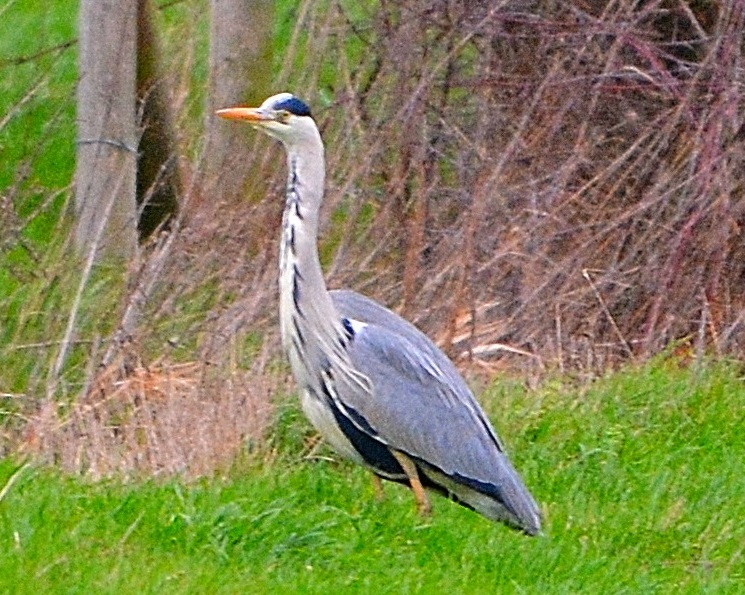
Herons are a very familiar bird locally and also widespread over the UK. They can be found almost anywhere there is water where they live on fish, frogs and other aquatic life.
Little Egret
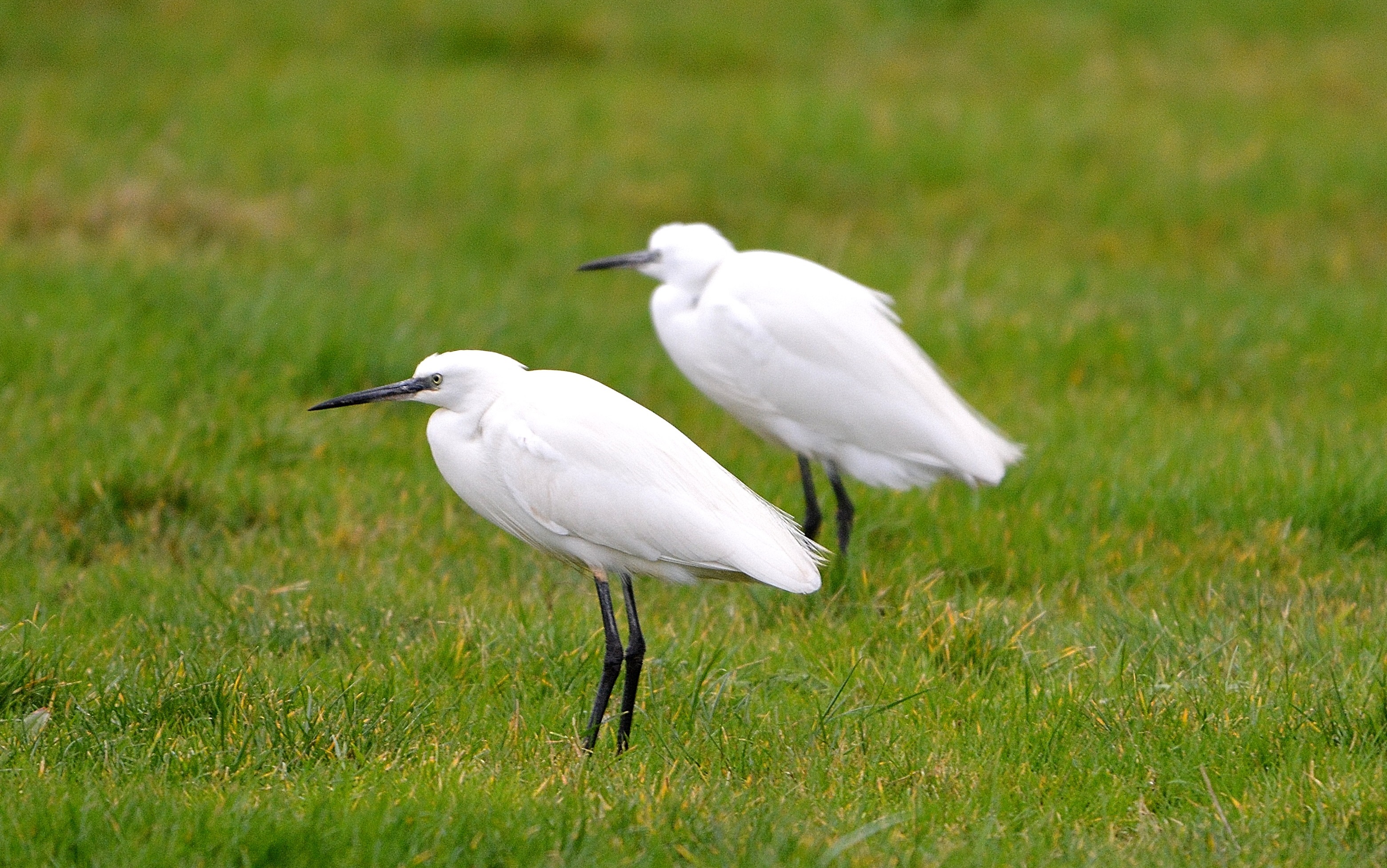
Not long ago, it was rare to see Little Egrets in the region but they are now becoming more common, even nesting along with the Herons at the RSPB’s Swell Woods. They have a pure white plumage with black legs contrasting with yellow toes. The two Little Egrets above were seen on Curry Moor in January 2019.
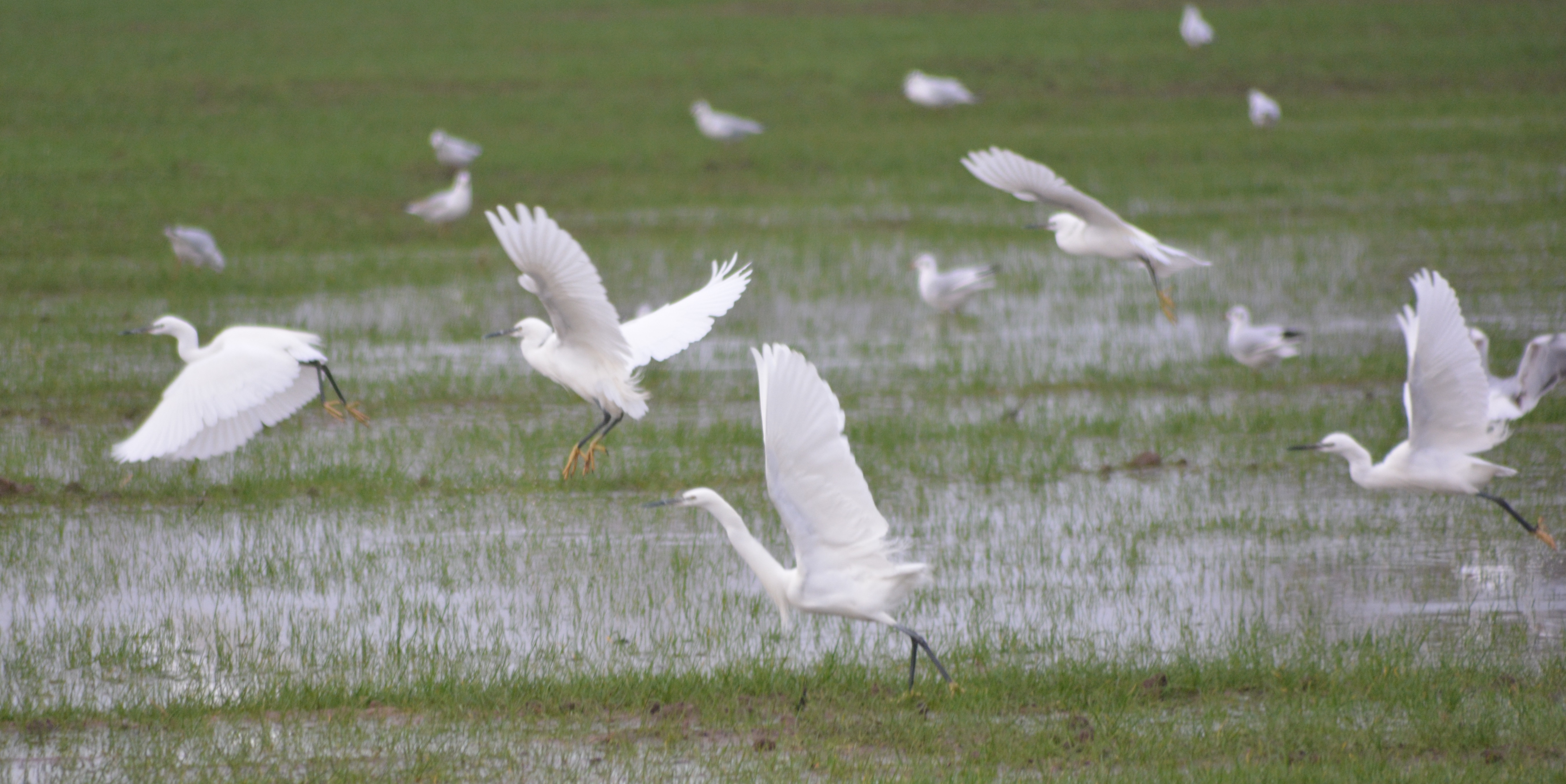
Little Egrets on West Sedgemoor in December 2019
Common Crane
We are lucky in our area to benefit from the RSPB’s Great Crane Project which has brought the Common Crane back to Somerset’s Levels and Moors.
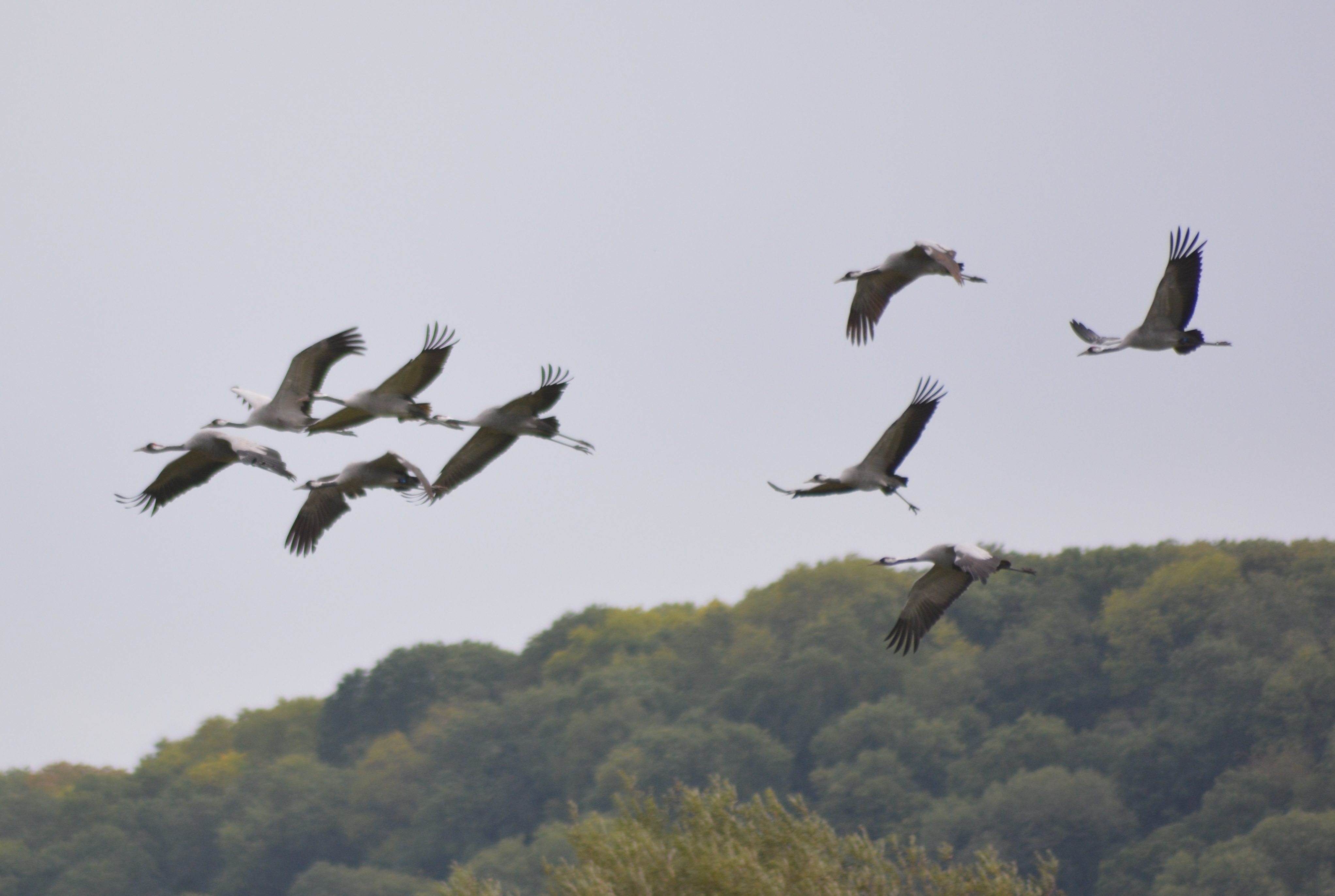
Between 2010 and 2014, the RSPB raised 93 cranes at Slimbridge and introduced them to their West Sedgemoor reserve near North Curry. They hatched eggs brought over from Germany and achieved a 62 per cent survival rate, exceeding the expected average of 60 per cent.
The crane chicks were hand reared from incubated eggs by keepers who dressed up in special grey outfits to mimic the adult birds and they fed the young birds using beak-shaped ‘litter-pickers’ to replicate how they would be fed by parent birds. It was important that the young birds would not become too familiar with humans and they would learn crane behaviour so that they could raise their own chicks.
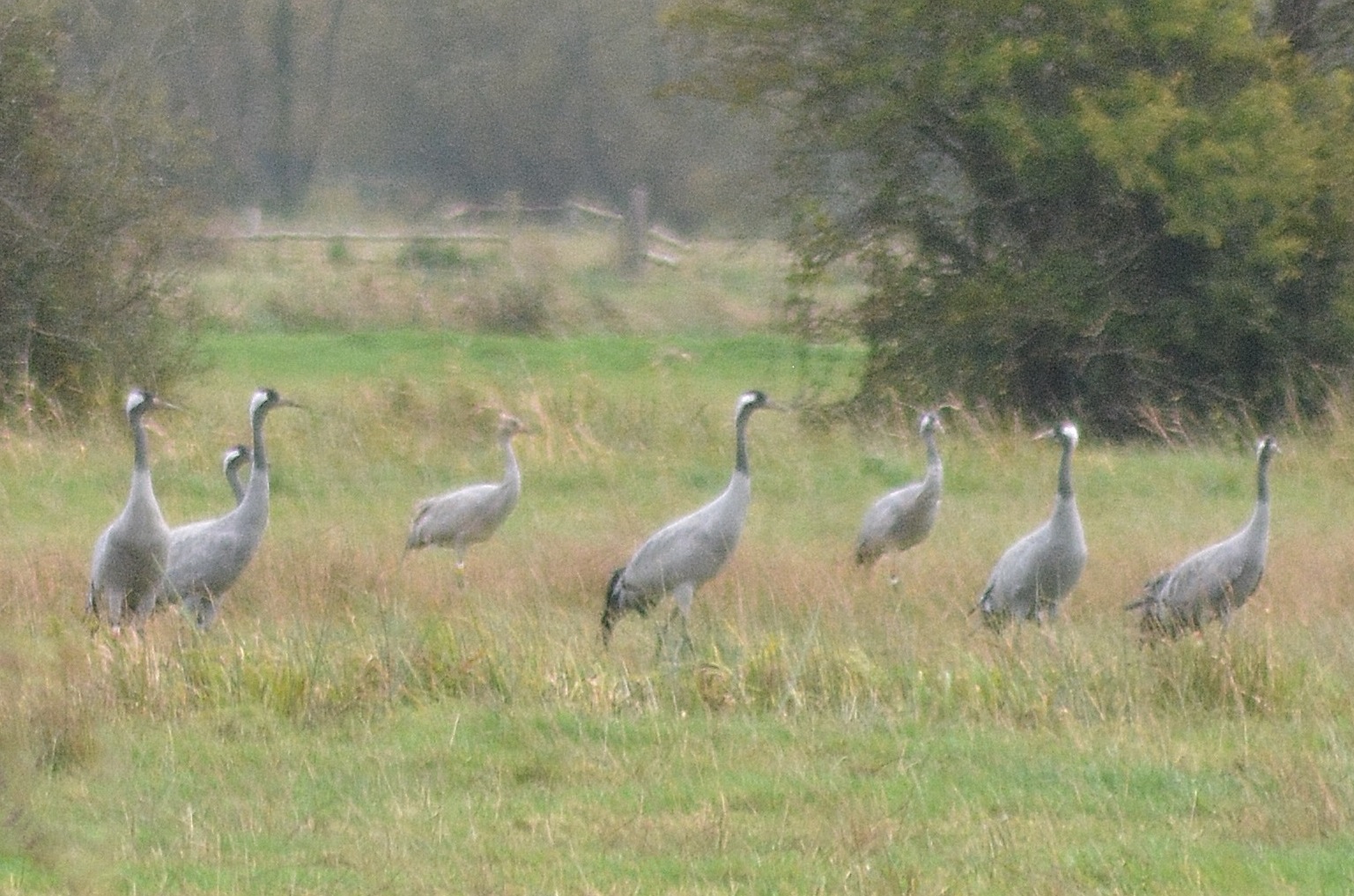
A group of Common Cranes including a juvenile with a pale brown head
The RSPB continues to monitor their progress and we hope to see cranes in increasing numbers as they feed or fly over the moors and make their lovely trumpeting calls.
For further information on the Great Crane Project see: http://www.thegreatcraneproject.org.uk/
Kingfisher
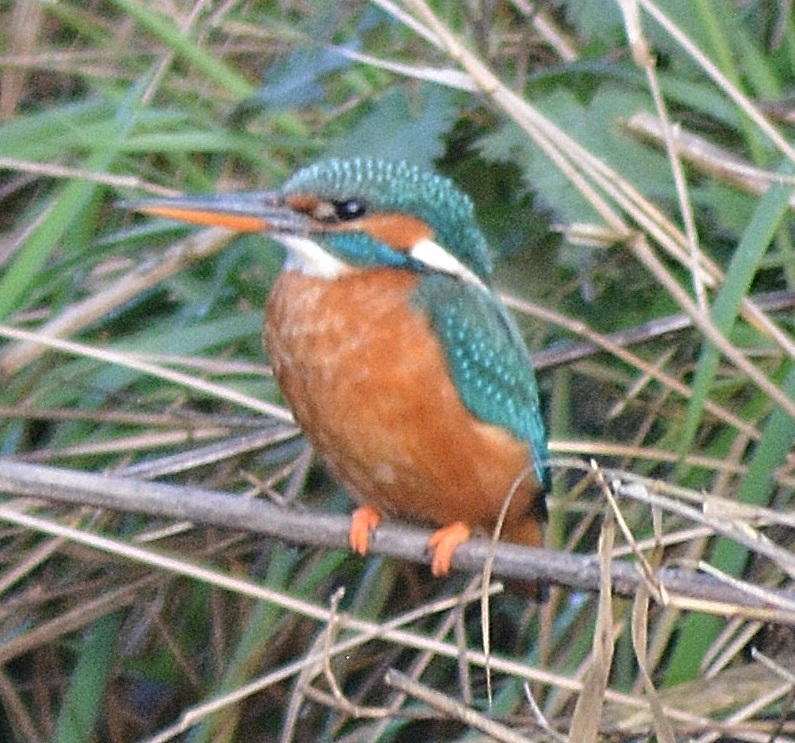
Kingfishers live around rivers and streams and nest in burrows in riverbanks. The one pictured above left, with an all black beak, is a male taken on Curry Moor in November 2019. The one pictured above right, taken at Helland in March 2019, is a female as she has an orange lower beak.
The pictures below show a female Kingfisher regurgitating a pellet and then defending her territory on West Sedgemoor in January 2020.
Moorhen
Moorhens are a common bird but can be very shy and slink off into cover when disturbed, though they are not so shy in village ponds where they get used to people near them. They can be found in most wetland areas with plenty of vegetation, including village ponds, lakes, streams and flooded gravel pits.
Coot
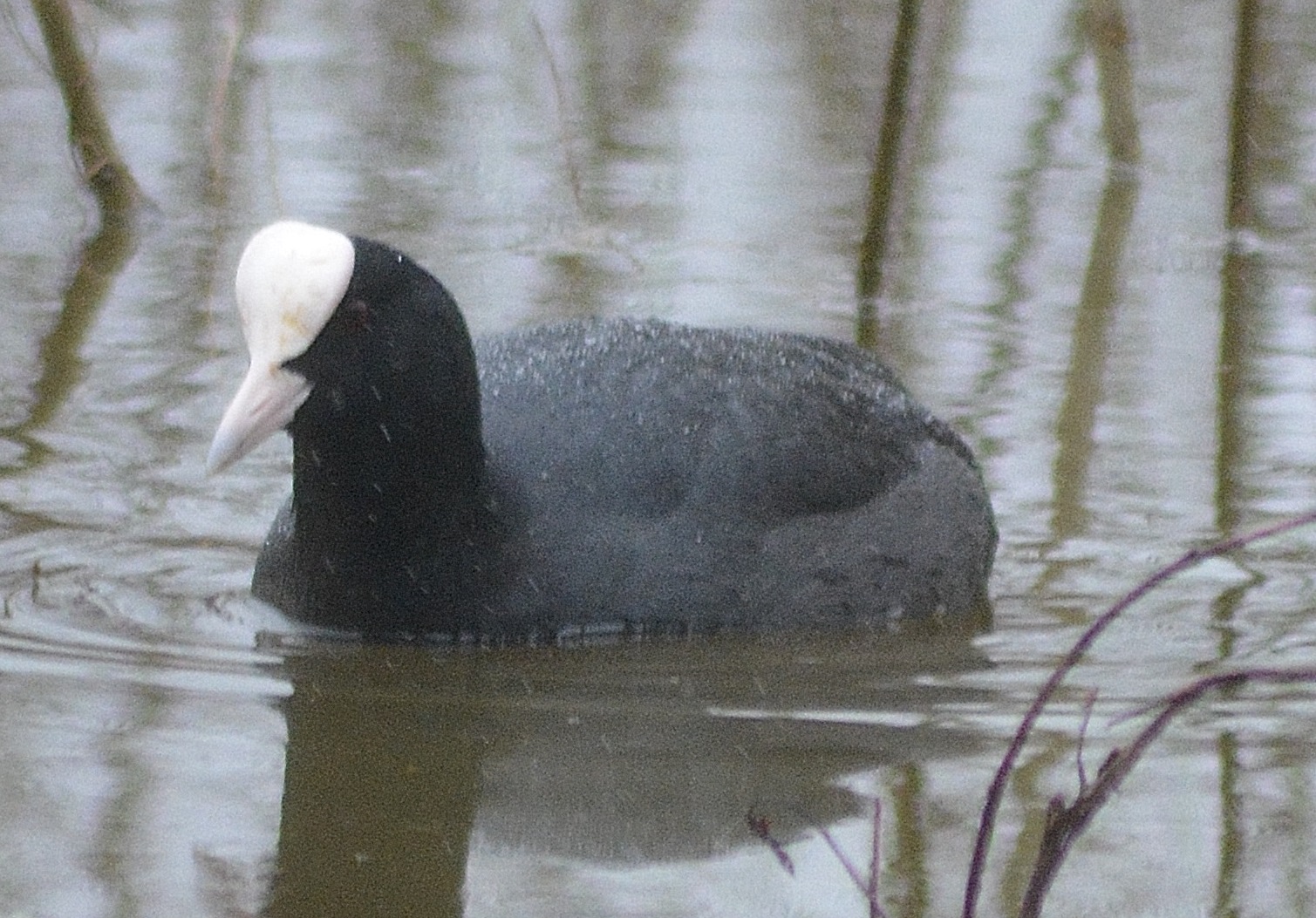
Coots are a resident, dumpy water bird often found in the same habitat as Moorhens. Their numbers are boosted in the winter months by others fleeing harsher conditions in mainland Europe. When taking off, Coots typically run on the water surface until they build up enough speed to take off as seen in the picture below.
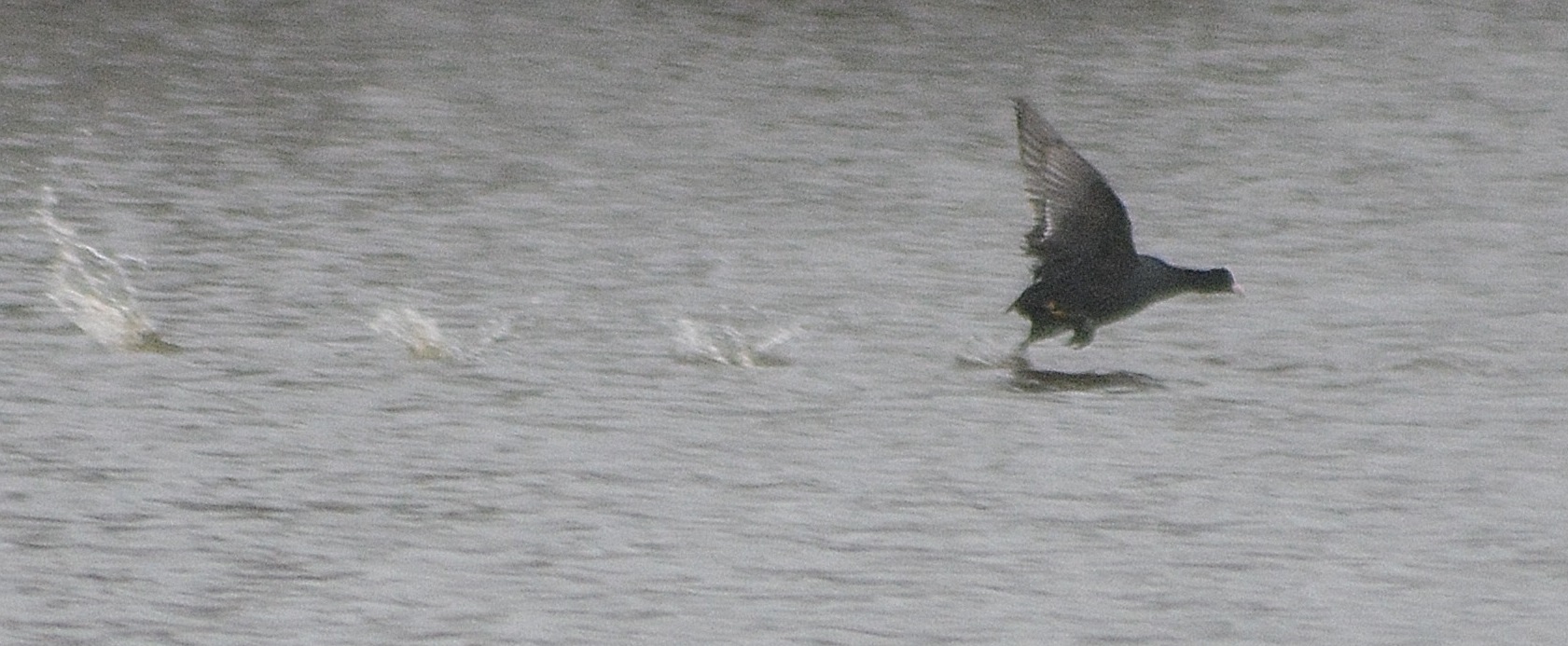
Mute Swan
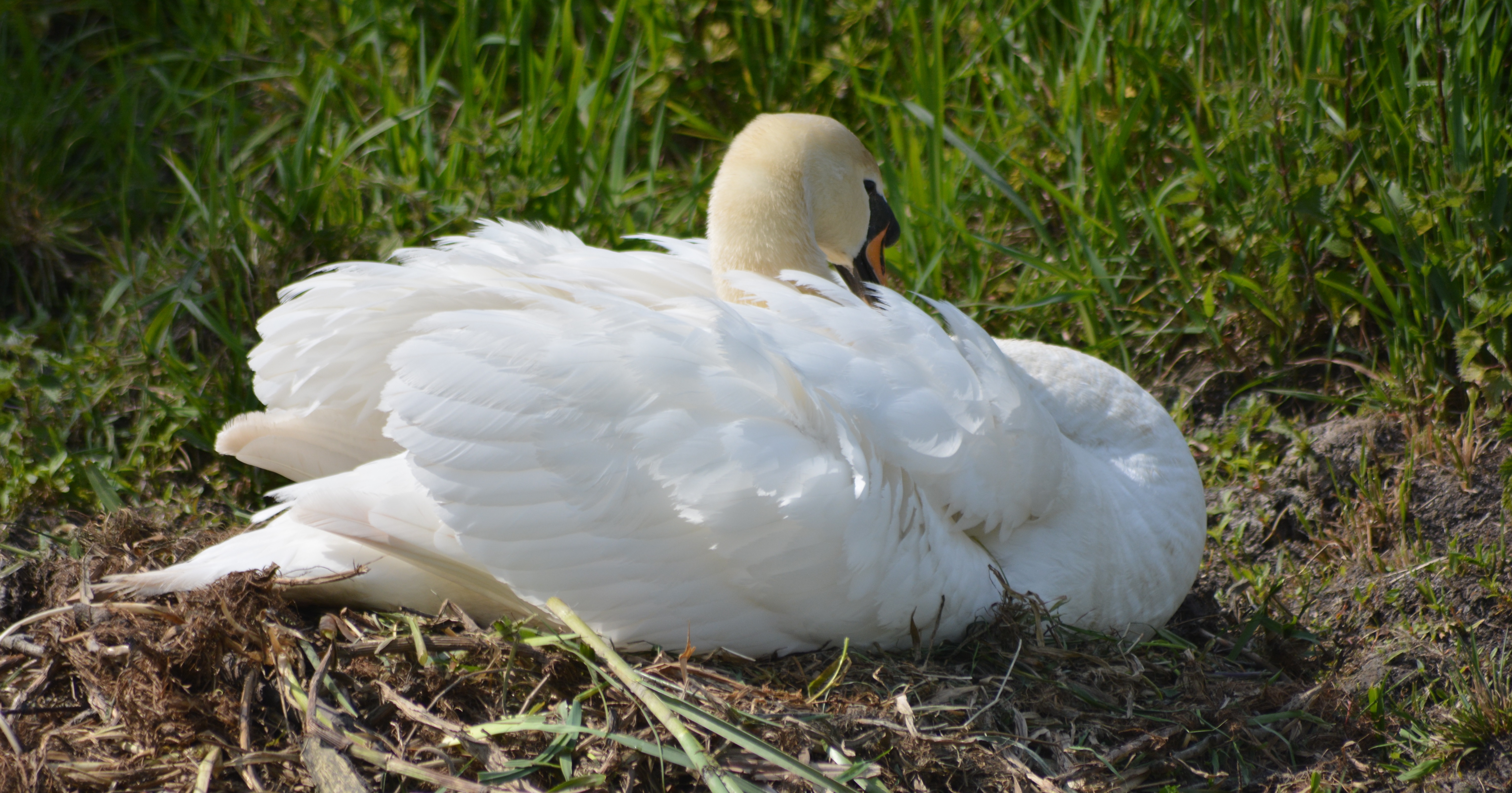
The Mute Swan is our only resident swan. It is our most common swan and is normally quite tolerant of people. There are many of them in the North Curry area as they prefer freshwater wetlands. They nest in winter or early spring. This Mute Swan was taken on North Curry Moor in April 2019.
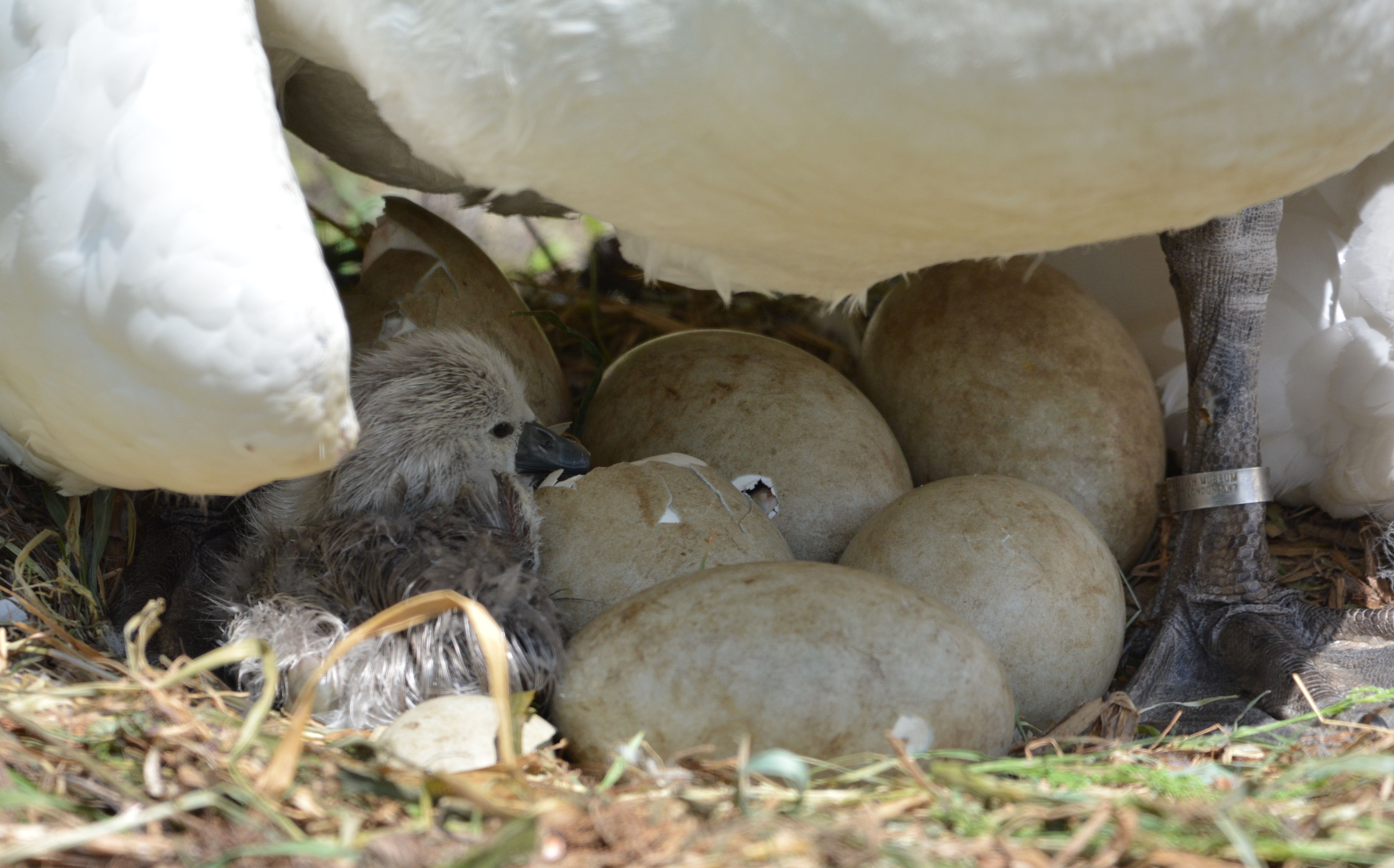
We were lucky enough to observe a clutch of Mute cygnets hatching and to follow them over the next few weeks. Here they are at two days old:
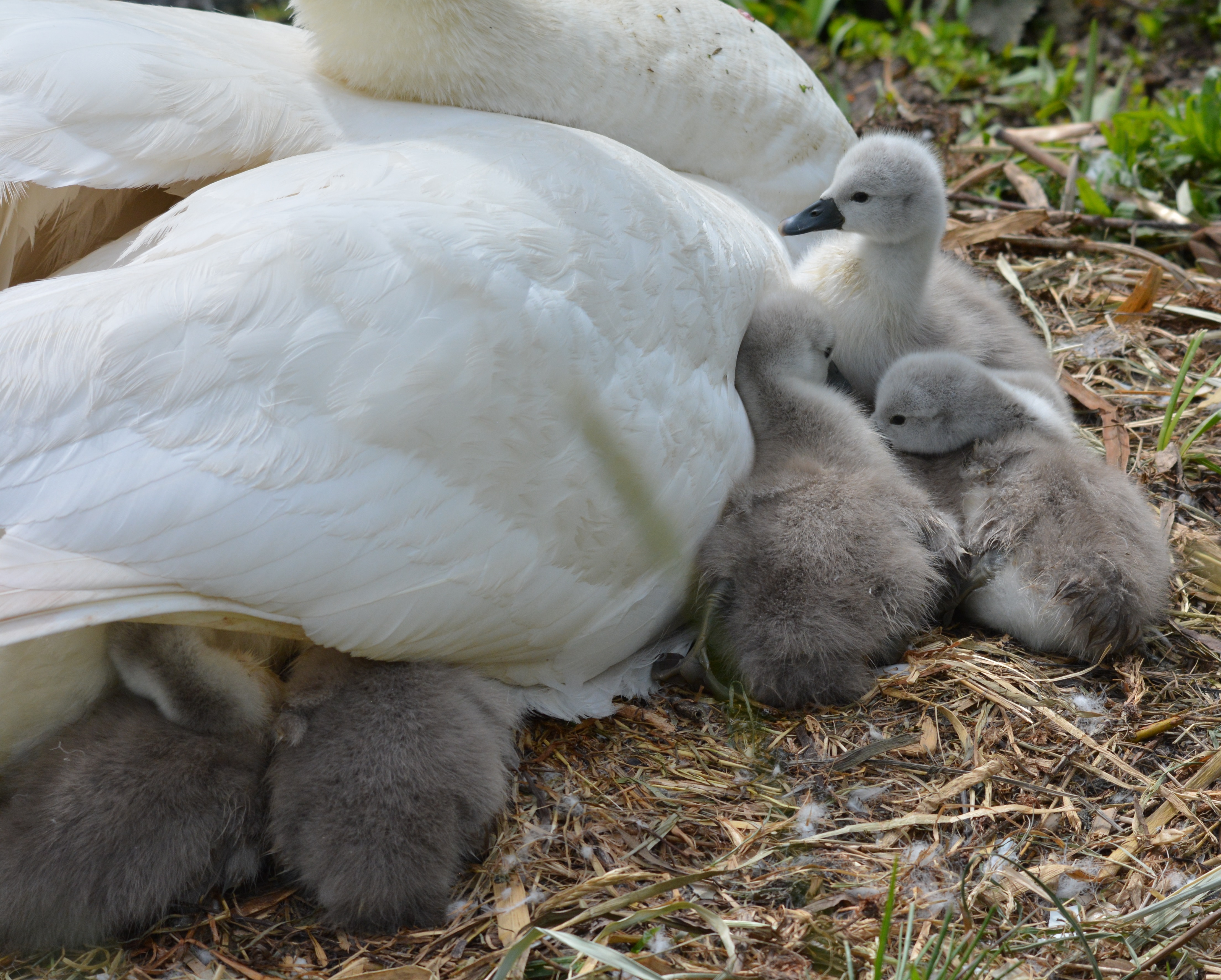
And at eight days old on the water with their parents:
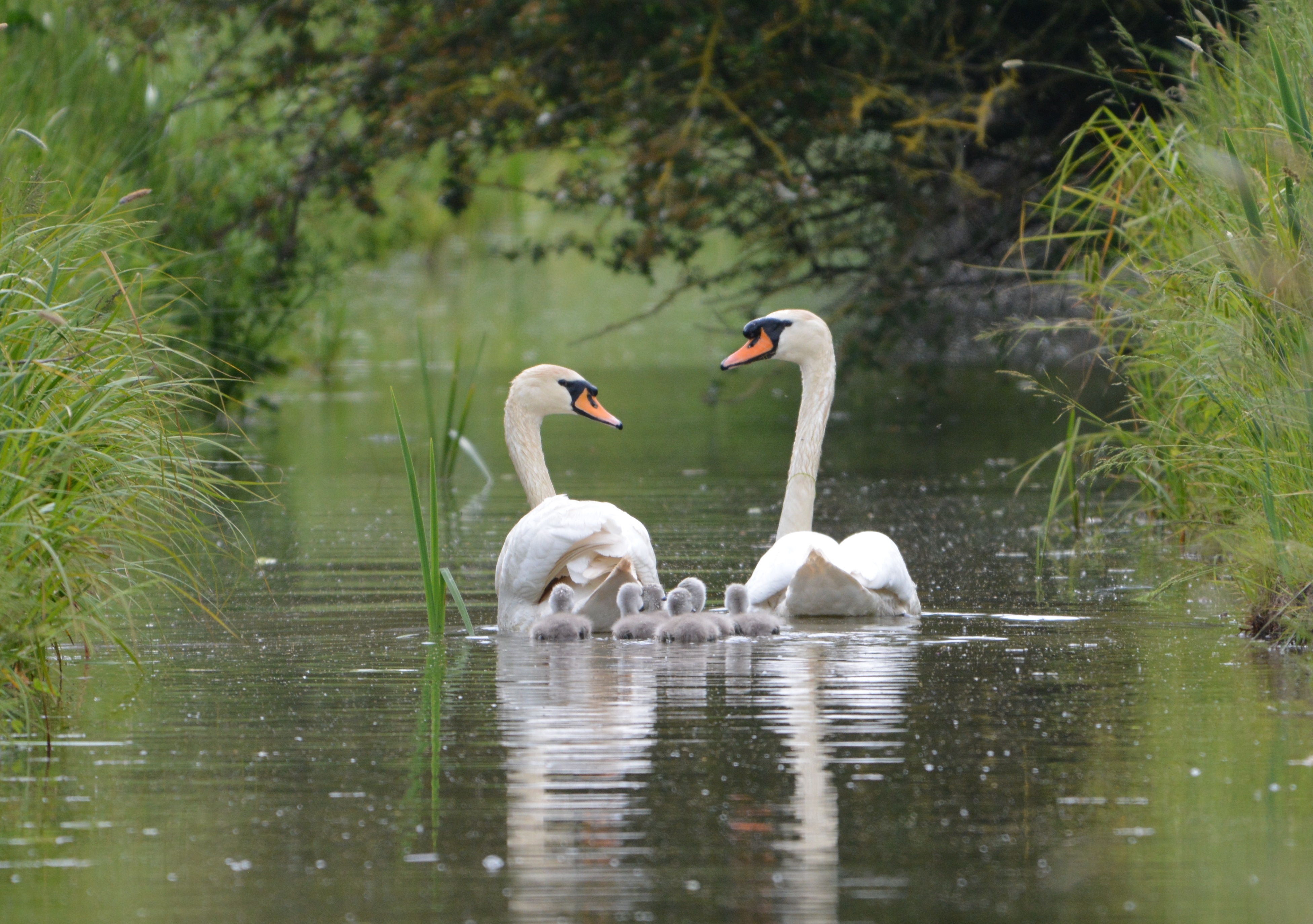
Whooper Swan
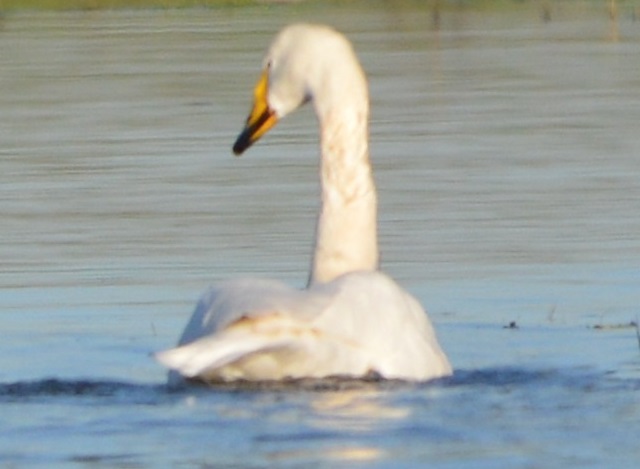
The Whooper Swan is about the same size as the Mute Swan but typically holds its neck straight rather than curved and has a yellow beak. Whooper Swans are seen locally as a winter visitor.
Canada Geese
Canada Geese were introduced here from North America over 300 years ago and they are now our most widespread and familiar goose, found mostly on or near water and feeding on grassland and arable fields.
Greylag Geese
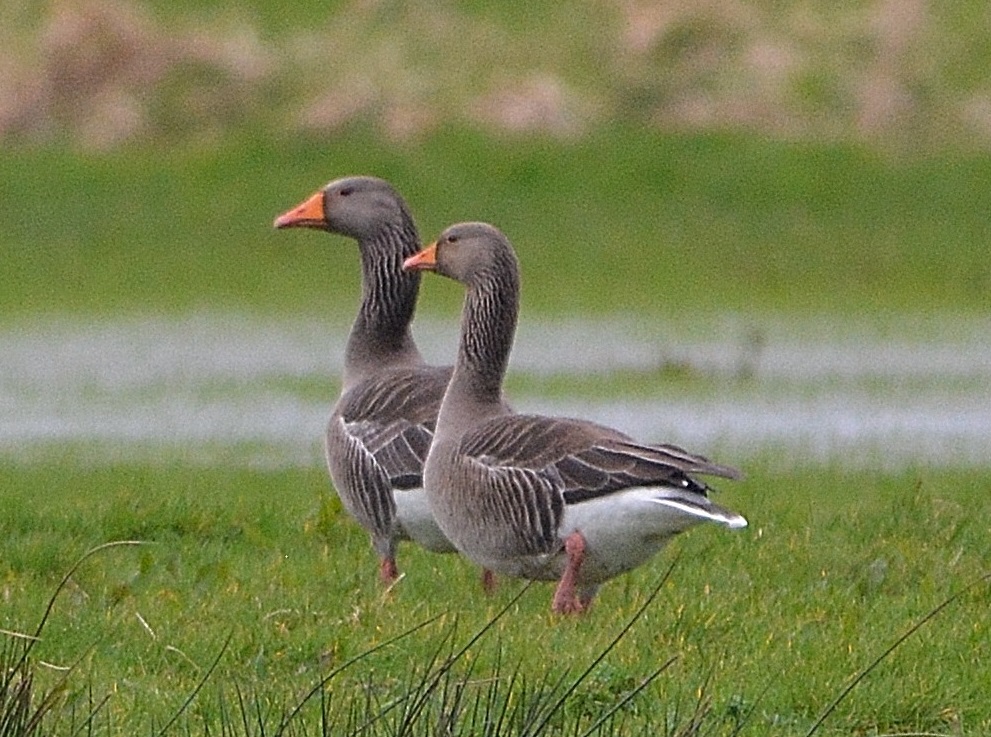
Greylag Geese are the largest of our grey geese and the only one that breeds in Britain. They are an ancestor of our farmyard geese. In lowland England, they are patchily distributed with more found in the east of the country, though in northern England and southern Scotland they are more widespread. Favoured feeding areas include damp grassland and farmland. The ones pictured here were among some 35 seen on flooded West Sedgemoor in February 2020.
Egyptian Geese
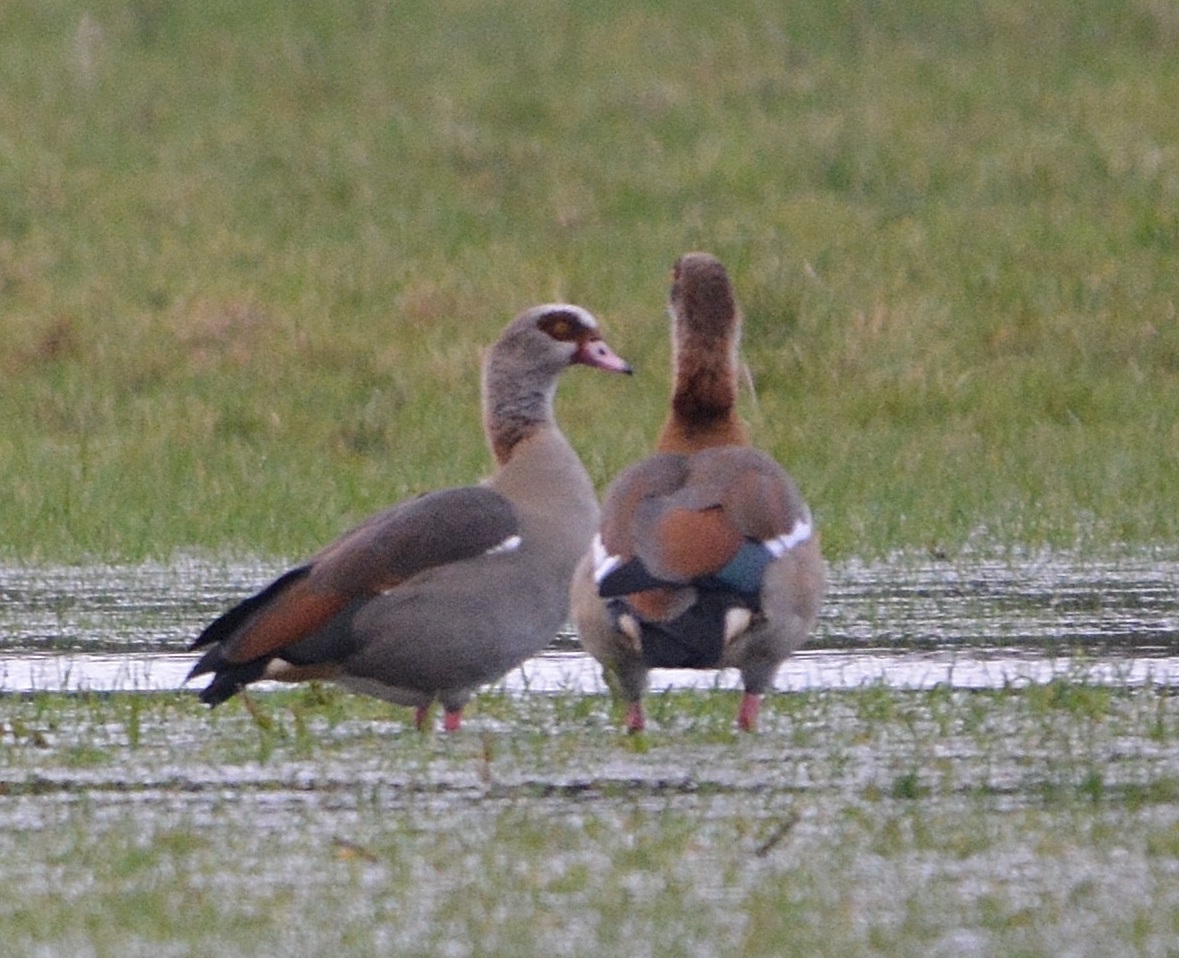
Egyptian Geese have become established in the UK as a breeding bird since their introduction in the nineteenth century. The bulk of the population is in East Anglia where they typically nest in tree holes. They are seldom found far from water but need grassland to feed on. They are rare in this part of the country so it was a nice surprise to find this pair on West Sedgemoor in November 2019.
Mallard
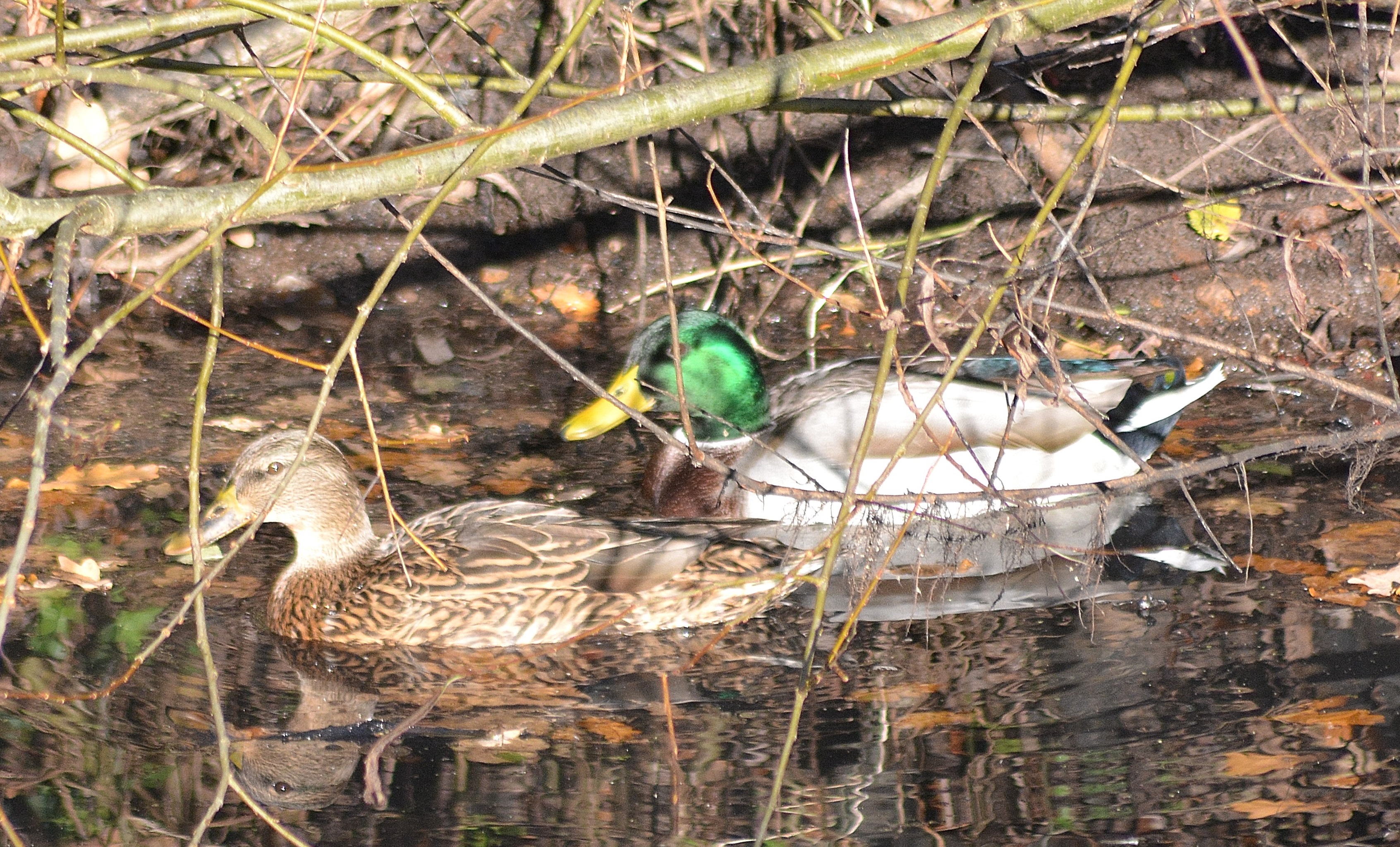
Another common bird in the North Curry area, the male Mallard is much more colourful than the female and the sexes are easy to identify as the female has a mottled brown plumage which helps her to camouflage herself when she is nesting or has young to protect. The Mallard ducklings below were taken on North Curry Moor in April 2019.
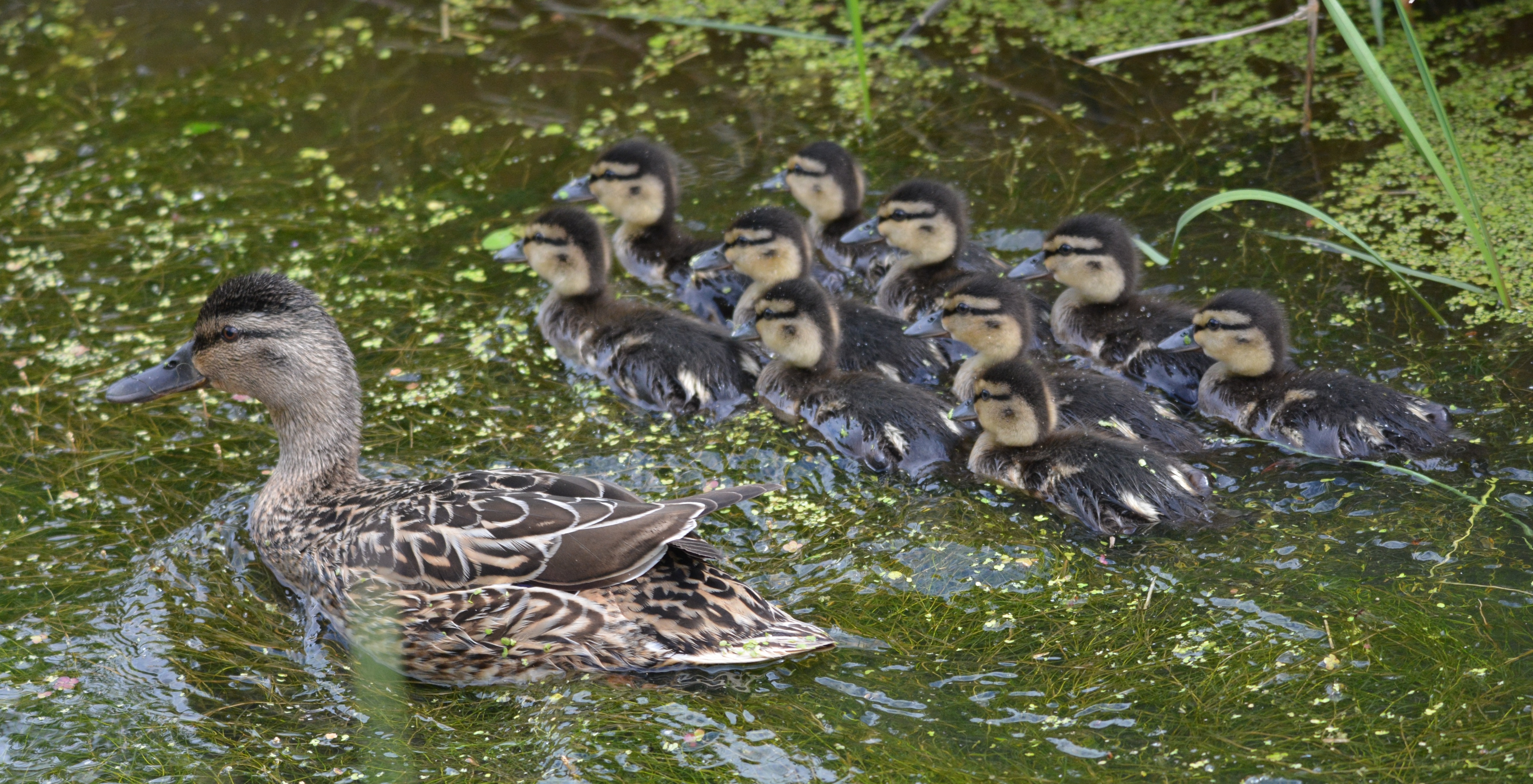
Tufted Duck
Tufted Ducks are a year-round resident with their numbers boosted in the winter by other ducks from Europe as they flock together with other duck species. Their favourite habitat can be anything from flooded gravel pits and quarries to ponds, lakes and watery ditches with marginal vegetation.
Shelduck
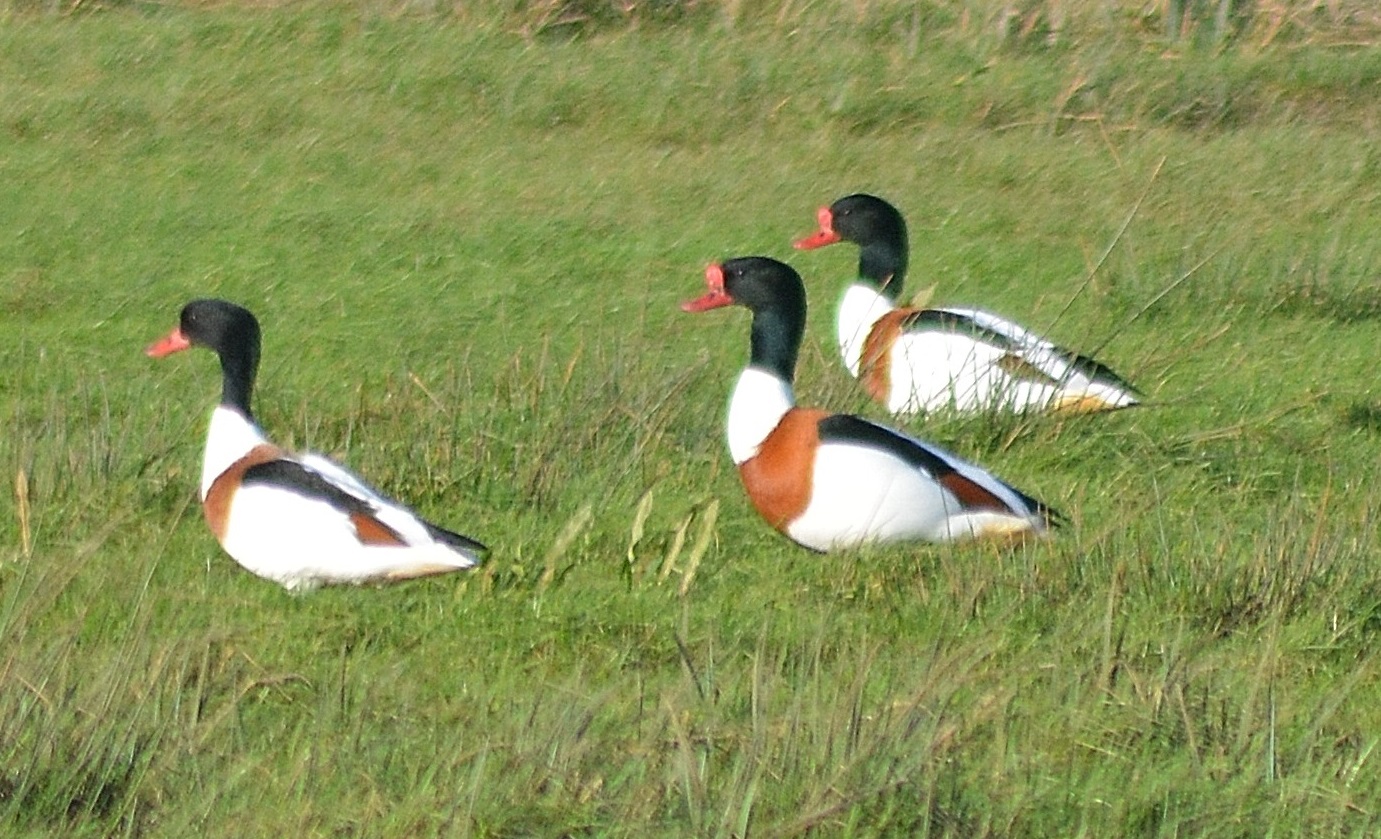
Shelduck are a hole-nesting bird and are most often found on estuaries and mud flats where they sift the mud for invertebrates, but they can be found in other watery areas. The photo shows a female (duck) followed by two males (drakes). The males have a bigger knob at the top of their bill which is more conspicuous than the smaller one of the female and their necks appear much thicker than that of the female. This group was taken at West Sedgemoor in February 2020.
Pintail
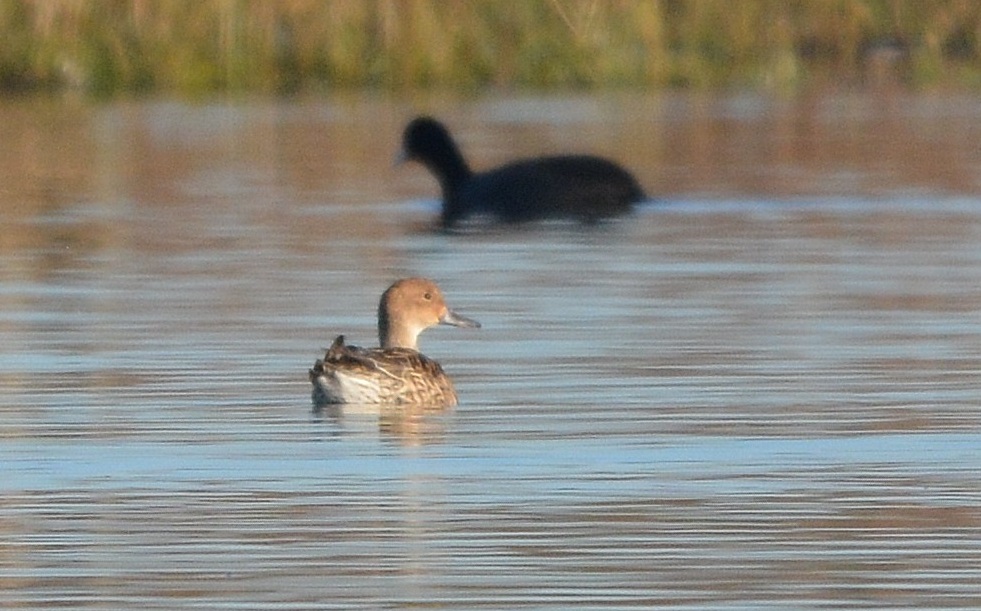
Pintails are a dabbling duck and favour marshy waterside ground during the breeding season, but are more often found on estuaries through the winter. The one pictured above (with Coot behind) is a female seen on flooded Haymoor in January 2020. The male has a more extended tail, greyer plumage and a darker head.
Gadwall
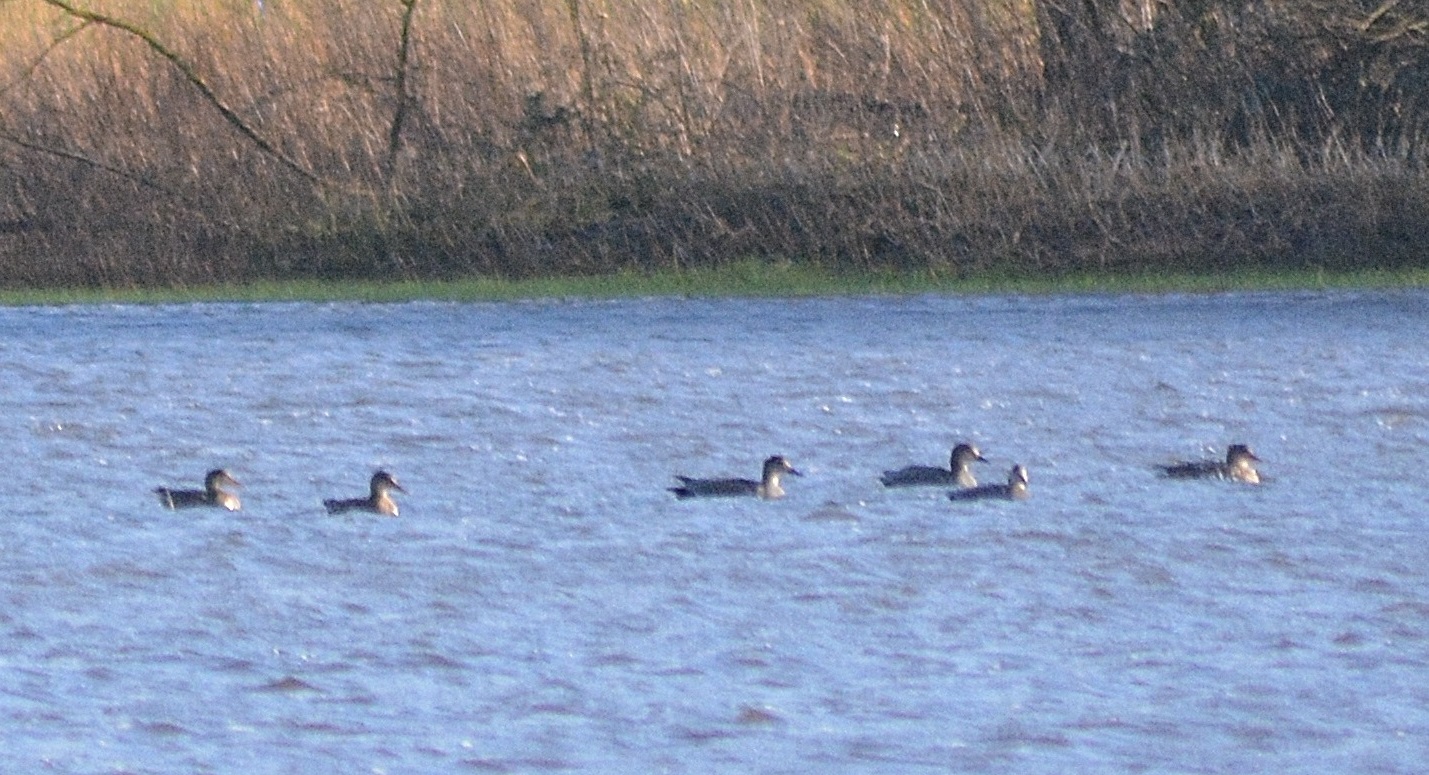
Gadwall are a dabbler, favouring shallow fresh waters where they flock together in the winter. This group was taken on flooded Haymoor in January 2020, but Gadwall can be found on many lakes, ponds and flooded gravel pits.
Black-headed Gull
Black-headed Gulls are widespread and commonest in coastal areas but are often found on inland waters and are also seen in flocks following the plough and feeding on the worms and grubs turned up. This picture shows a gull in winter plumage taken at West Sedgemoor in December 2019. In the summer its head is a dark chocolate brown.
Lesser Black-backed Gulls
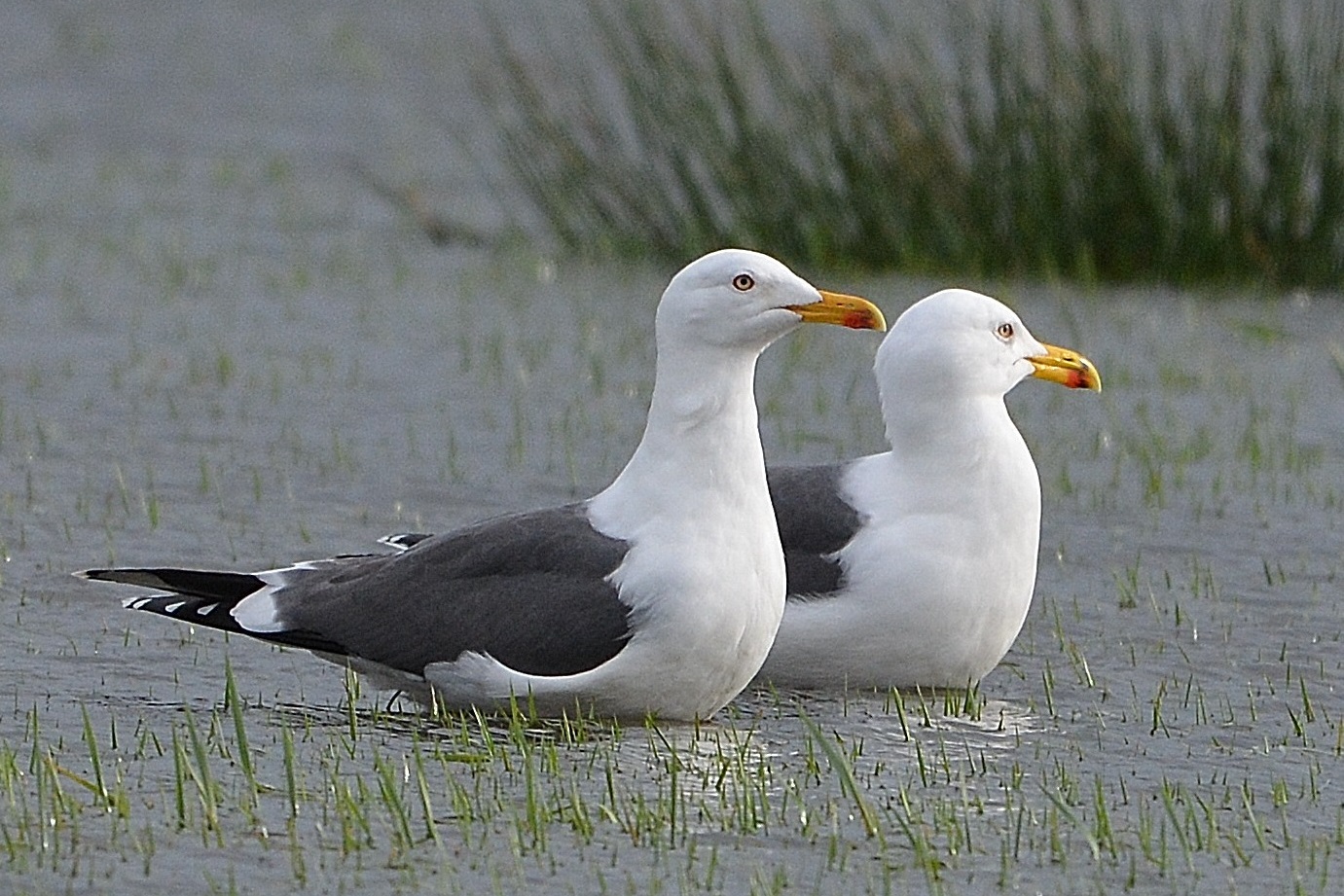
Lesser Black-backed Gulls have a yellow iris to the eye with a red ring around it and a yellow bill with an orange spot at the tip. Many leave the UK for the coast of the Mediterranean and North Africa outside the breeding season, while those that stay feed on farmland and rubbish tips and roost on lakes and reservoirs. These were seen on flooded West Sedgemoor in February 2020.
Cormorant
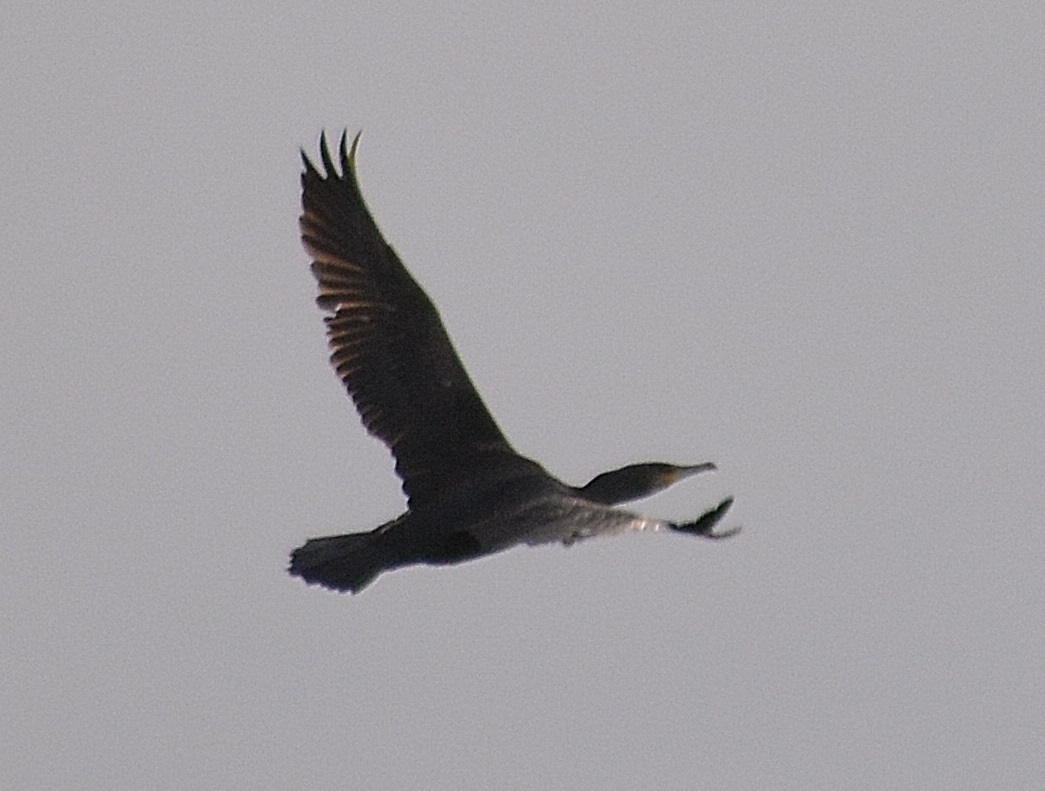
Cormorants are a large UK resident associated mainly with coastal waters and mostly build a nest of twigs and seaweed on a cliff edge, but have been known to nest in trees. They will also visit lakes and flooded areas in search of food. The one pictured here was seen diving in the ditches along the track to Helland on West Sedgemoor during the flooding of February 2020 before it flew off.
Wigeon
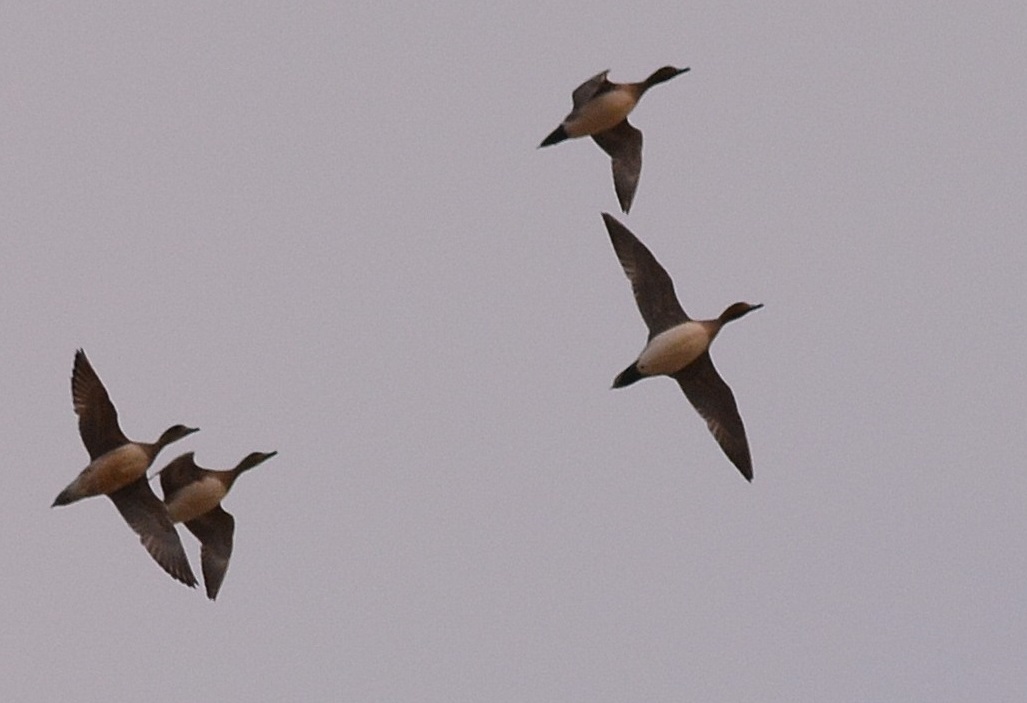
Wigeon are known as a winter visitor, often present here between November and March. Estuaries, mud flats and coastal grazing pastures are their typical habitat and they can also be found on inland wetlands. The ones pictured in flight above were some of around 200 seen during the February 2020 flooding on West Sedgemoor.
Green Sandpiper
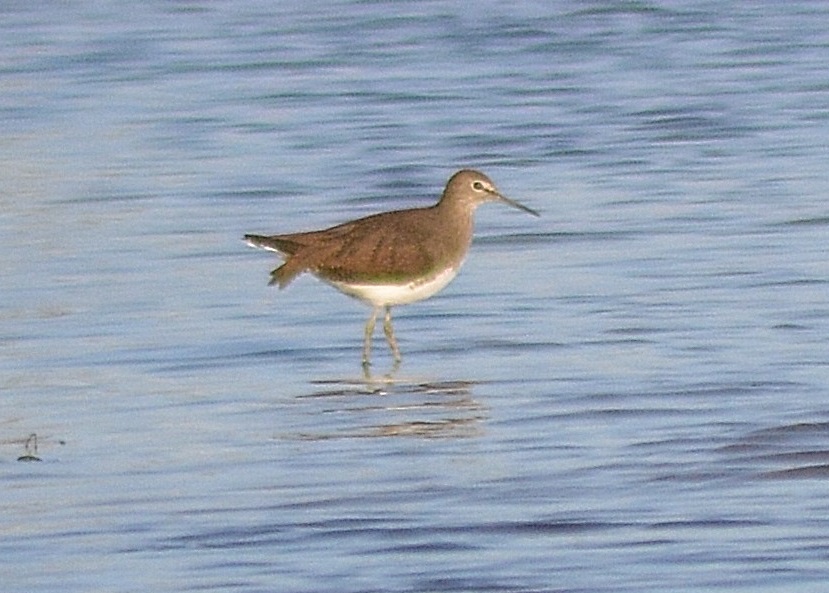
Green Sandpipers are a winter visitor which can be found in flooded fields and pond and lake margins where, if disturbed, they will quickly take flight, showing a white rump and giving an identifiable call. This was one of two individuals seen on flooded West Sedgemoor in November 2019.
Lapwing
Lapwings are a wader which are now on the endangered list. They are a ground-nesting bird found on farmland, moorland, heaths and wetlands. The Lapwing above was taken at Helland in February 2019. The picture below shows a group of Lapwings on the ground at West Sedgemoor in November 2019.
Golden Plover
Golden Plovers breed on upland moors and low mountain slopes, but form flocks outside the breeding season and have been seen to gather with Lapwings on West Sedgemoor. Here they are seen in winter plumage in January 2020.
Snipe
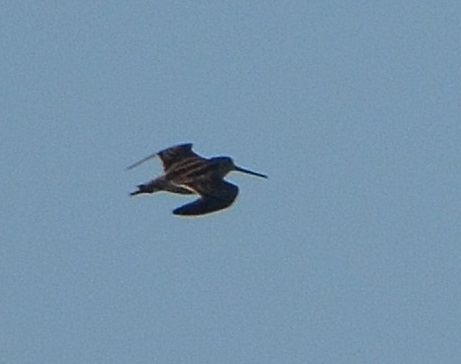
Snipe are one of our waders and are quite abundant in the area as they prefer wet, boggy habitats where they probe the soft ground with their long straight beaks in search of food. They are not easy to photograph as they take flight very quickly, but in the breeding season they can sometimes be seen perching on fence posts and the like. In January 2020, a Snipe took off from the pond at the Community Woodland which was a complete surprise and a first for the woodland.
Curlew
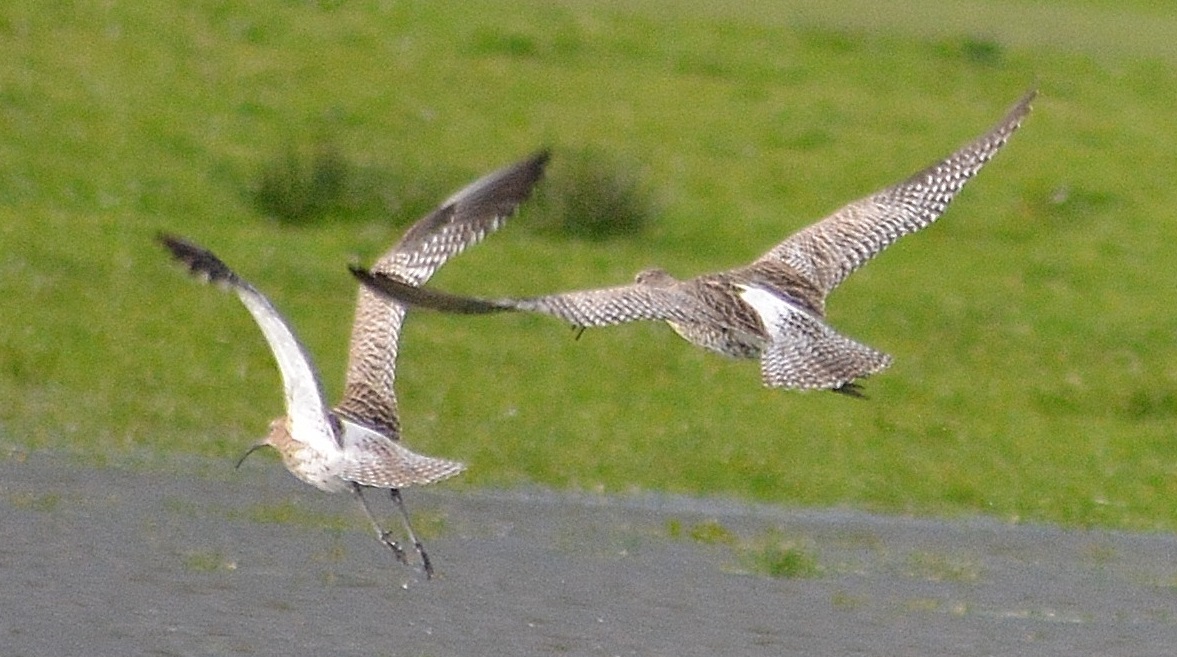
Curlew are one of our waders with a long, down-turned bill and they can be found throughout the year. During the breeding season, they are mainly found in northern upland areas, but they can also be found on grassland and heathland further south. Outside the breeding season, they tend to be mostly coastal, favouring estuary mudflats. Pictured here are two of some six Curlew which were seen taking off from the water’s edge on flooded West Sedgemoor in February 2020.
Yellow Wagtail
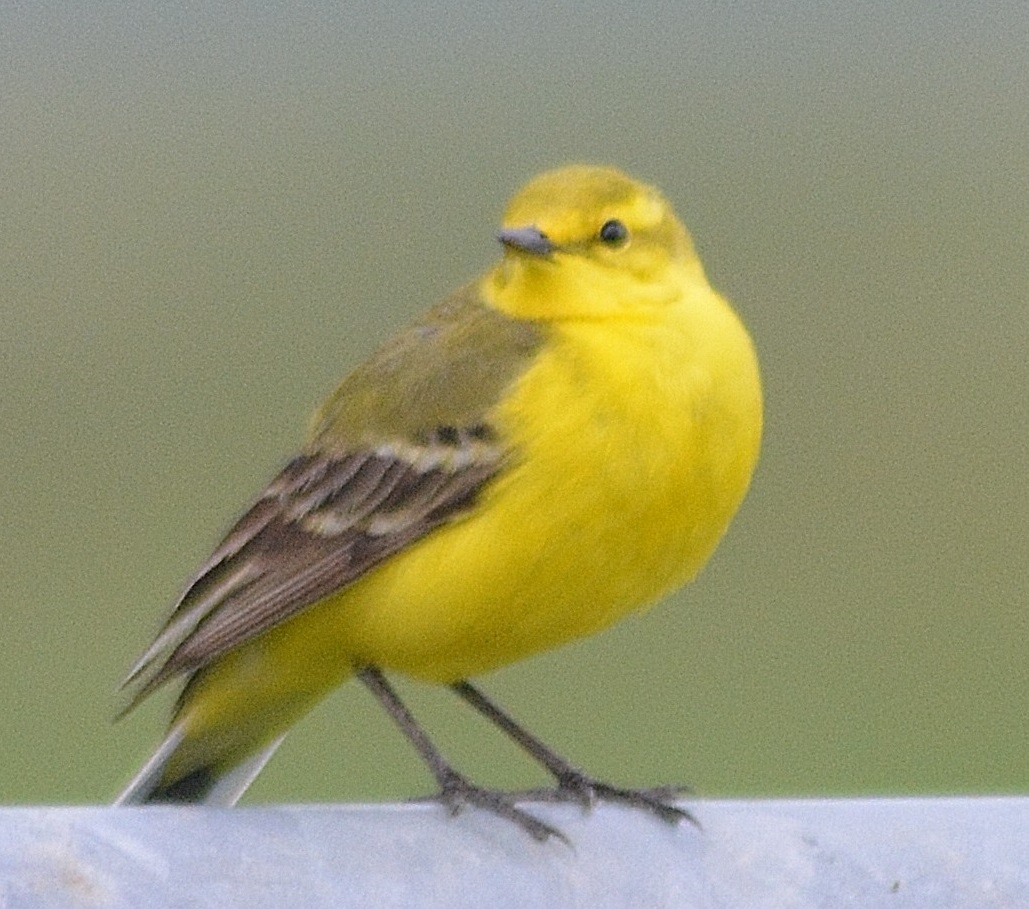
A brightly coloured bird with a long tail, Yellow Wagtails favour wetland areas. They feed on insects on the ground and are often seen feeding at the feet of grazing animals. This Yellow Wagtail was seen at Helland in May 2019.
Sedge Warbler
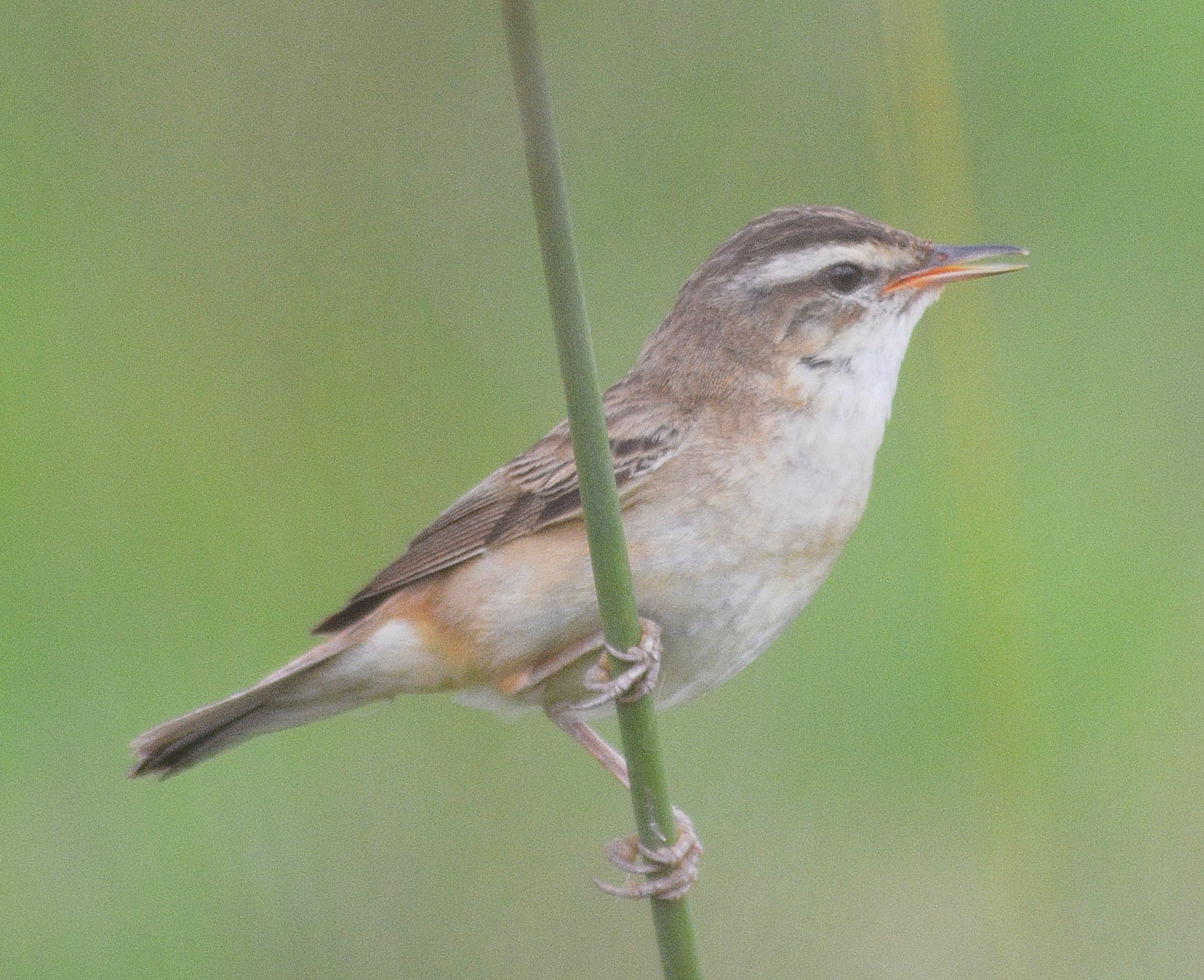
Sedge Warblers are spring/summer visitors and are heard more often than seen as they are very vocal little birds with a wide variation of sounds from rasping, grating to whistles and trills. You may get a glimpse of them darting through the vegetation but with patience, if you sit quietly, you may be lucky enough to get a good view of this lovely little bird. This one was seen on Curry Moor in July 2019.
Skylark
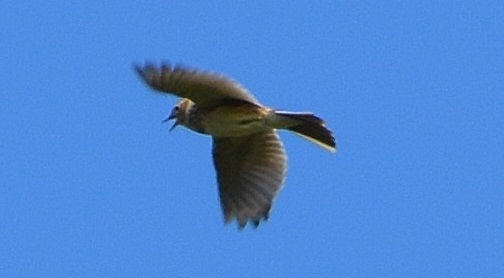
Skylarks are best known for their trilling and fluty song often delivered from a height while hovering in the sky. Skylarks are a ground-nesting bird, concealing its nest in long grass. They never land at the nest site; instead, they land several metres away and sneak unnoticed through the cover to the nest. Skylarks are in decline in the UK but we are lucky to have quite a few here. The Skylark below was taken on the Moor in May 2019.
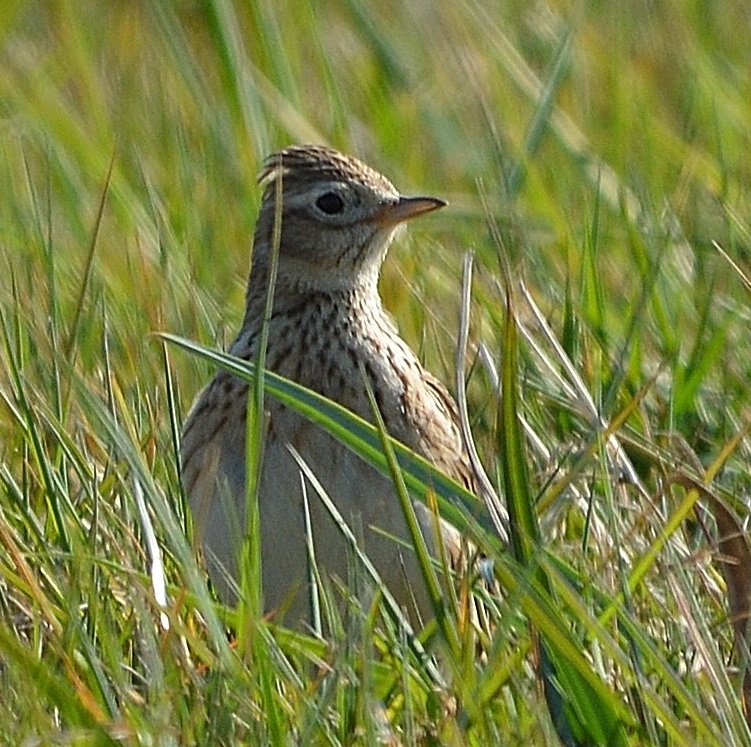
Wheatear
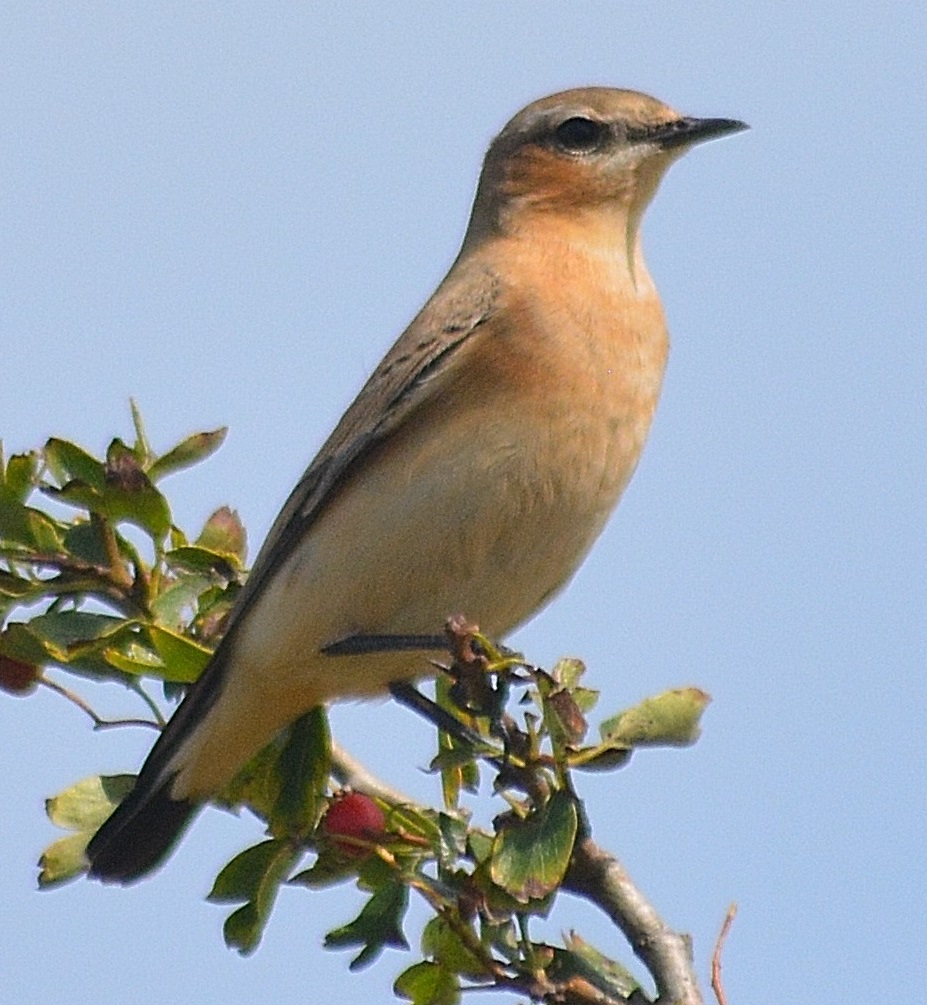
Wheatears are a summer visitor, preferring open land and moorlands with short grass. They often nest in stone walls. This picture is a female Wheatear taken on Curry Moor in August 2019.
Meadow Pipit
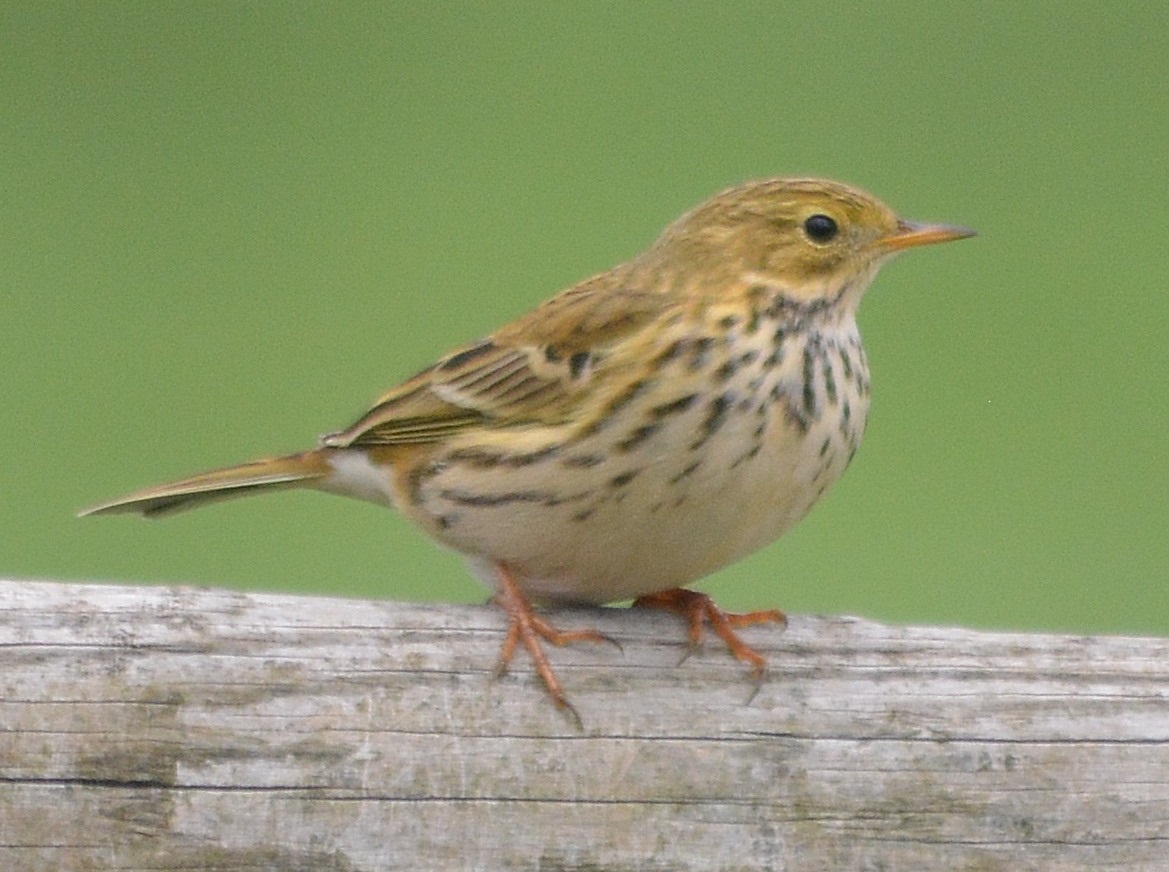
Meadow Pipits are a year-round resident, though their yellow flanks are more noticeable in autumn. They are ground dwellers and feed on invertebrates.
Stonechat
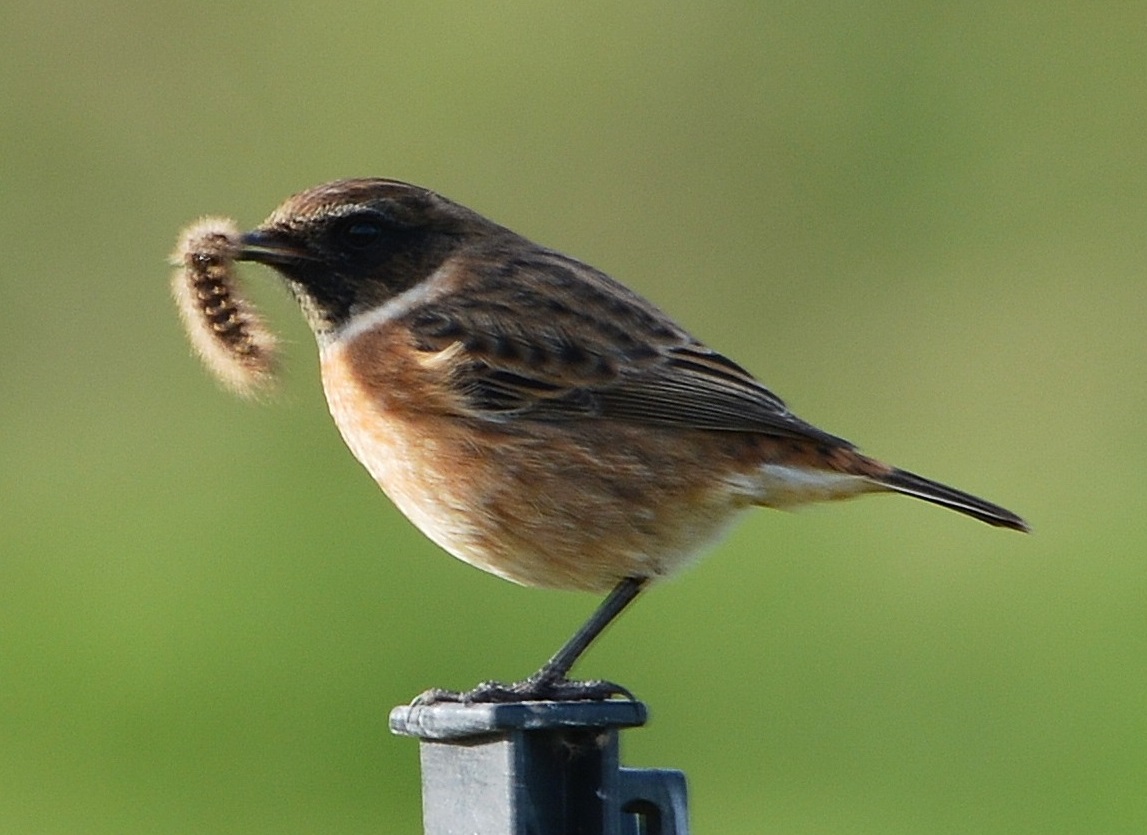
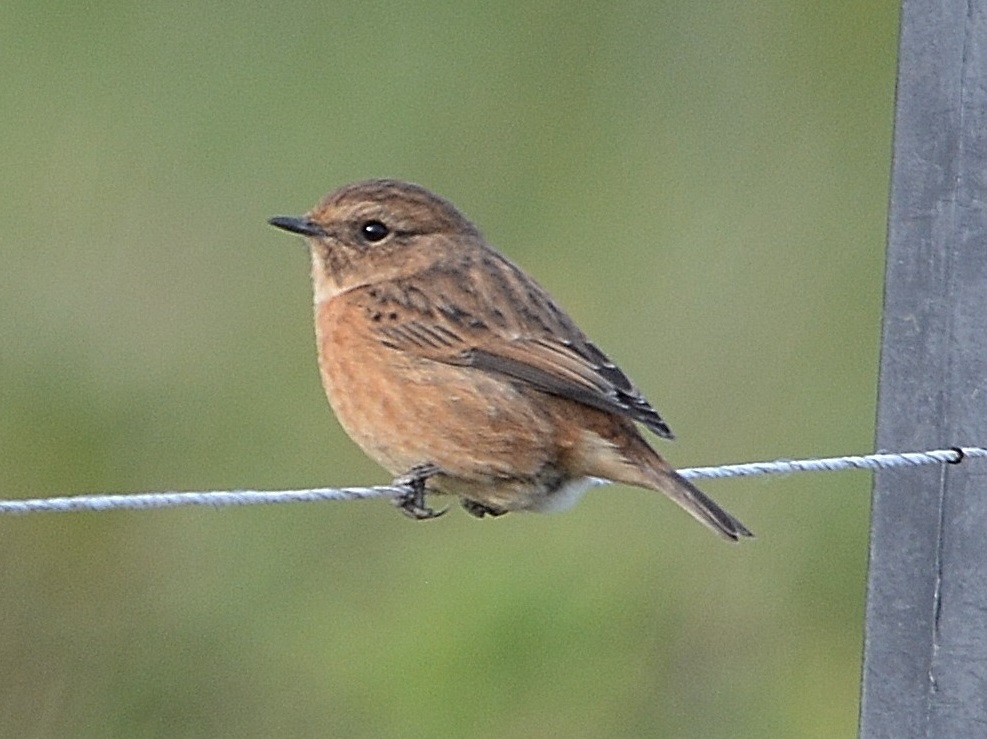
Stonechats are a resident but are more often found on the coast or in gorse-covered areas. The male (pictured above left) has a white neck band and a darker head than the female (pictured above right). Both were taken on Curry Moor in November 2019.
Kestrel
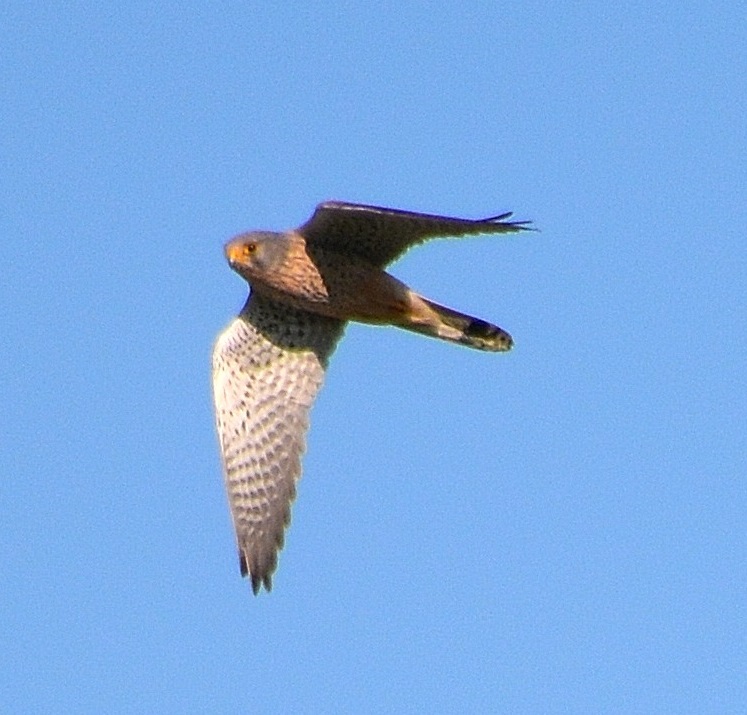
The Kestrel is a common falcon in the UK, often seen hovering over farmland, moorland and even motorway verges hunting for small mammals and birds. The Kestrel above is a male spotted at Heland in March 2019. The female lacks the grey head of the male. The one seen below is a female taken at Curry Moor in November 2019.
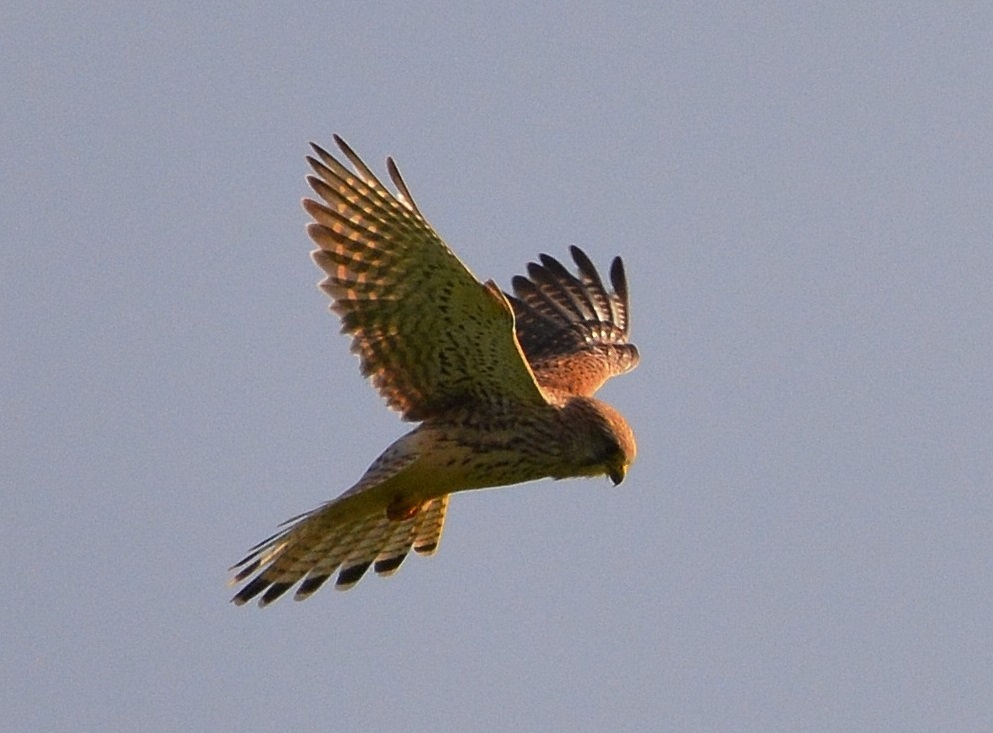
Buzzard
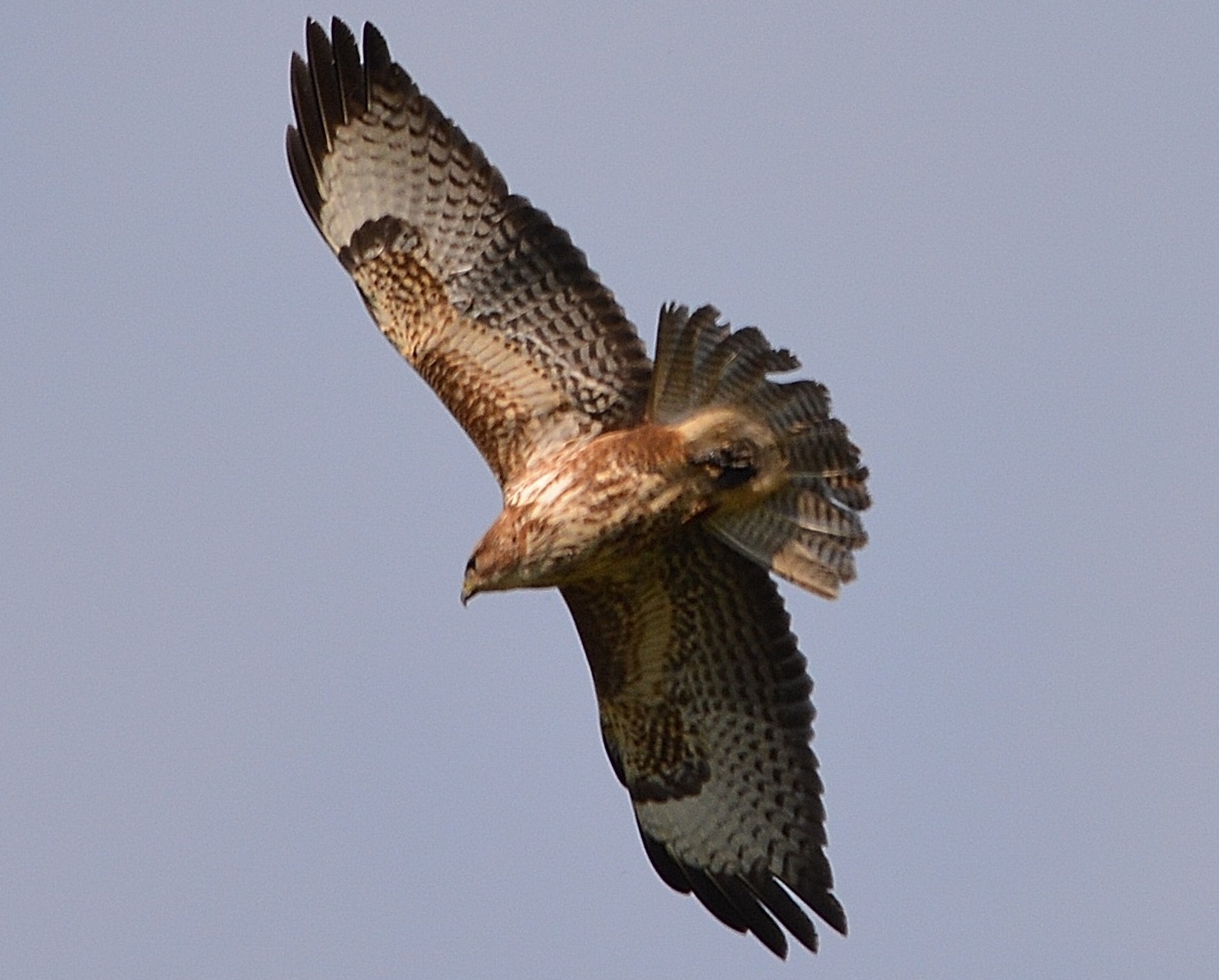
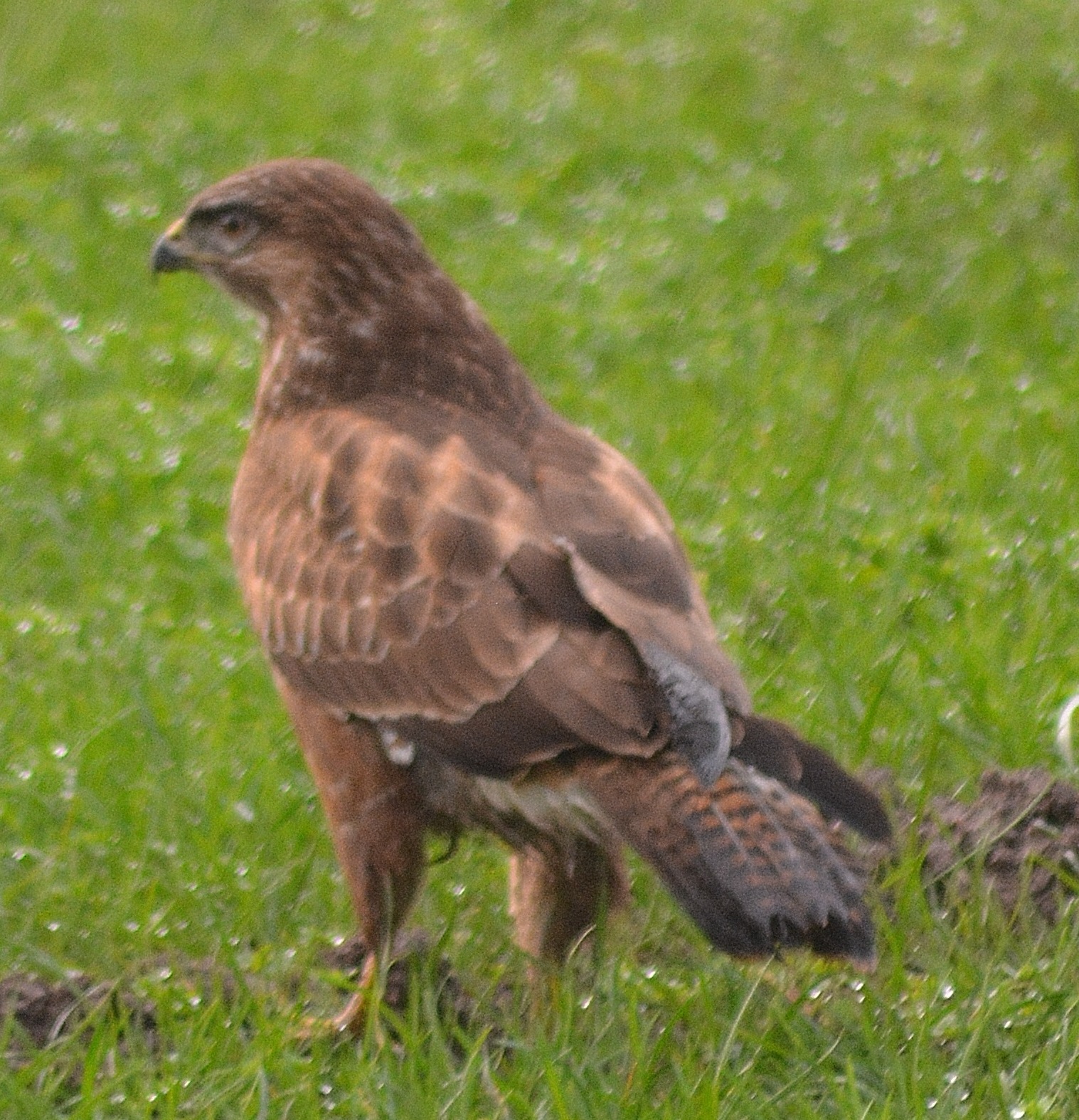
Buzzards are one of our most common hawks and the easiest to find and identify as, especially during the breeding season, they can be seen soaring in the air in pairs in search of food and at this time can be quite vocal with loud screeches. Most people will have seen a Buzzard at some time as they often perch on electricity poles and fences at the roadside. Buzzards are carnivores and will pick at fresh road kills, but mainly eat mice and voles, though they will take young rabbits and lizards. They may also take worms from freshly ploughed fields.
A buzzard nested locally and the photos below show a chick in the nest (at around 2 weeks old) and as a young bird leaving the nest.
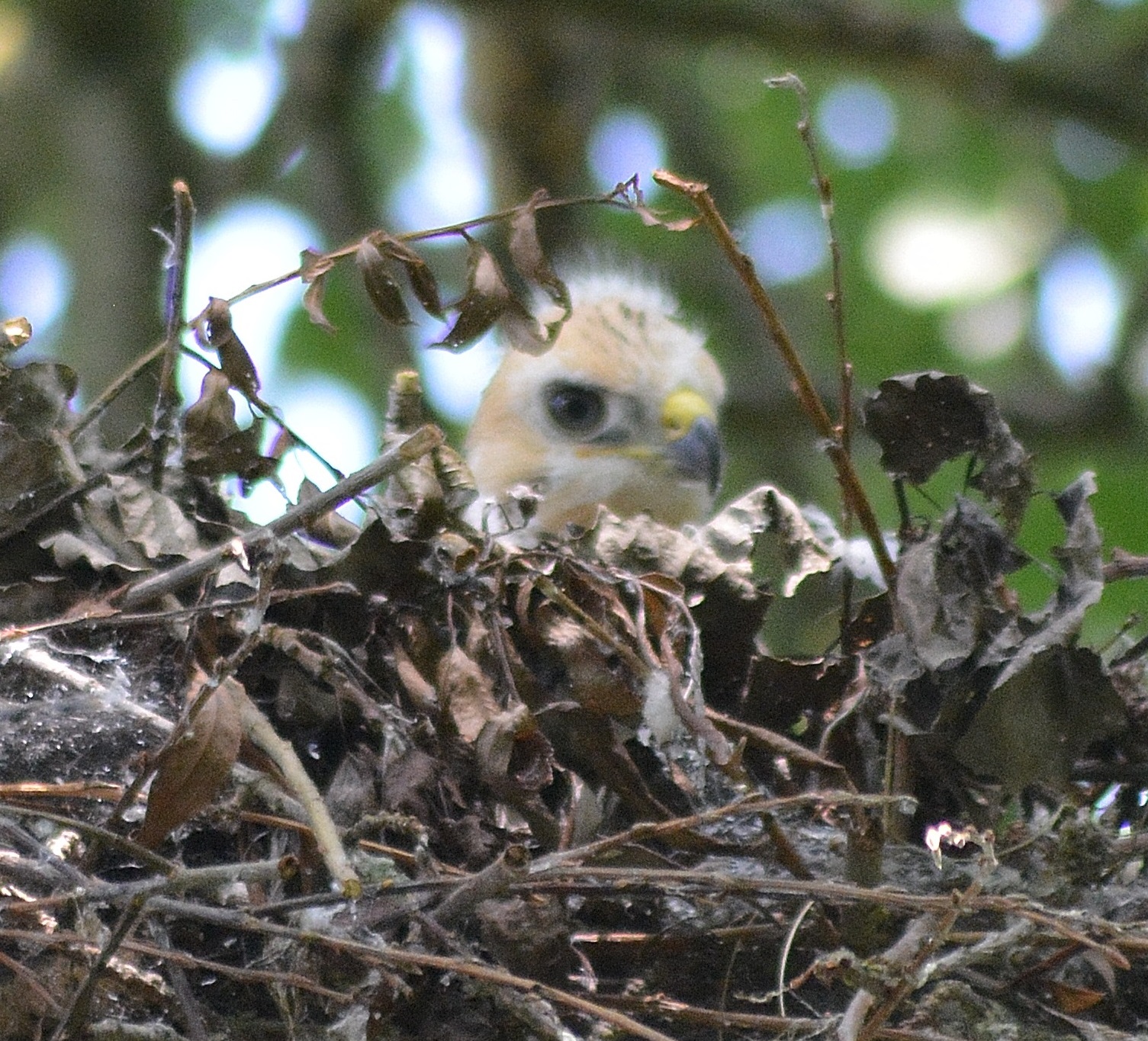
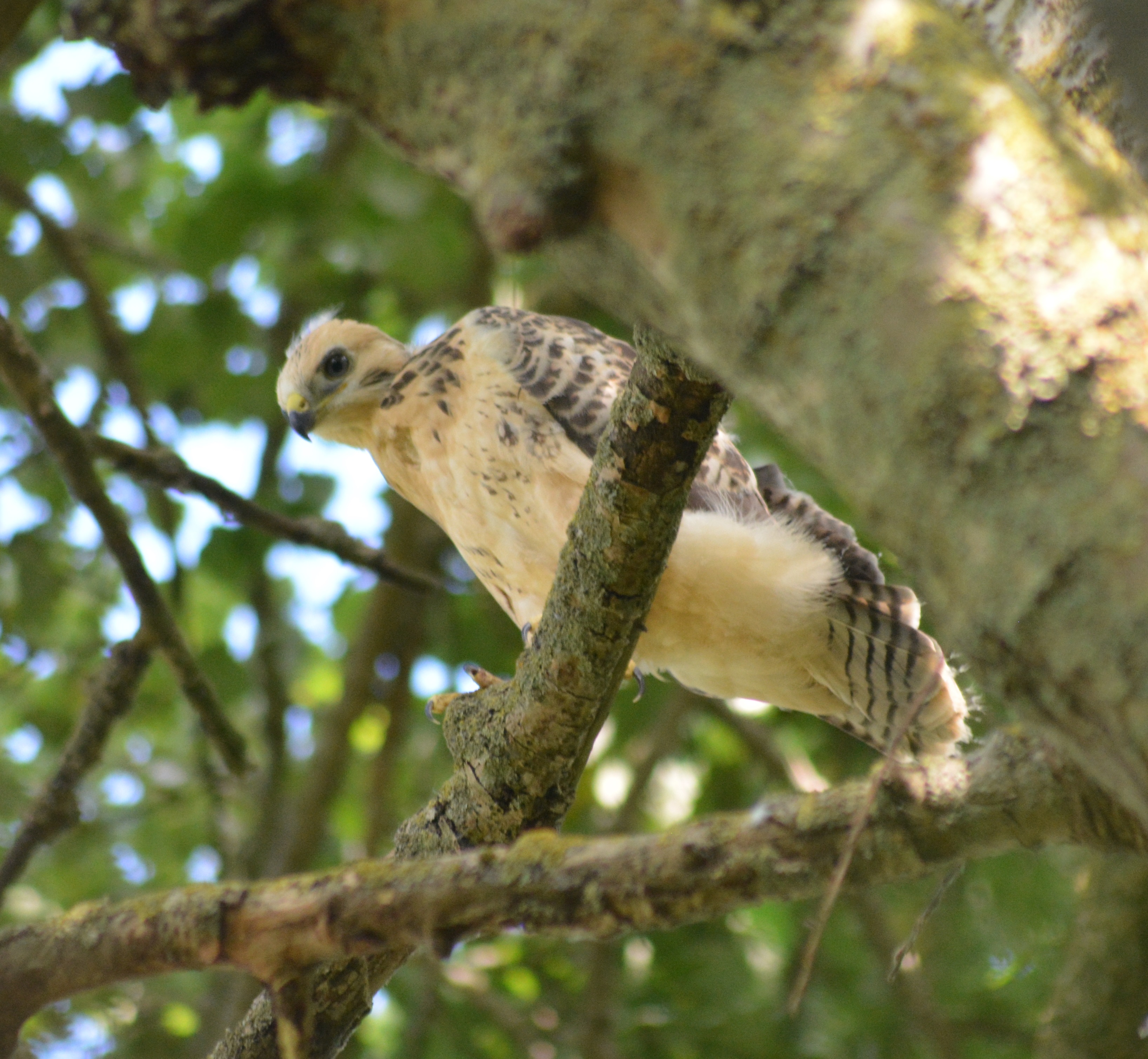
The young buzzard was later seen in flight. It is quite distinctive as it is mainly white. Buzzards are normally mostly brown, but do vary in colour and it is not unusual to see them very white, although it is not common.
The young bird is probably about 4/5 months old here. It will stay in the area through the winter, but will be forced to find its own territory in spring. This may not be too far away, however, so we may continue to see it locally.
Sparrowhawk
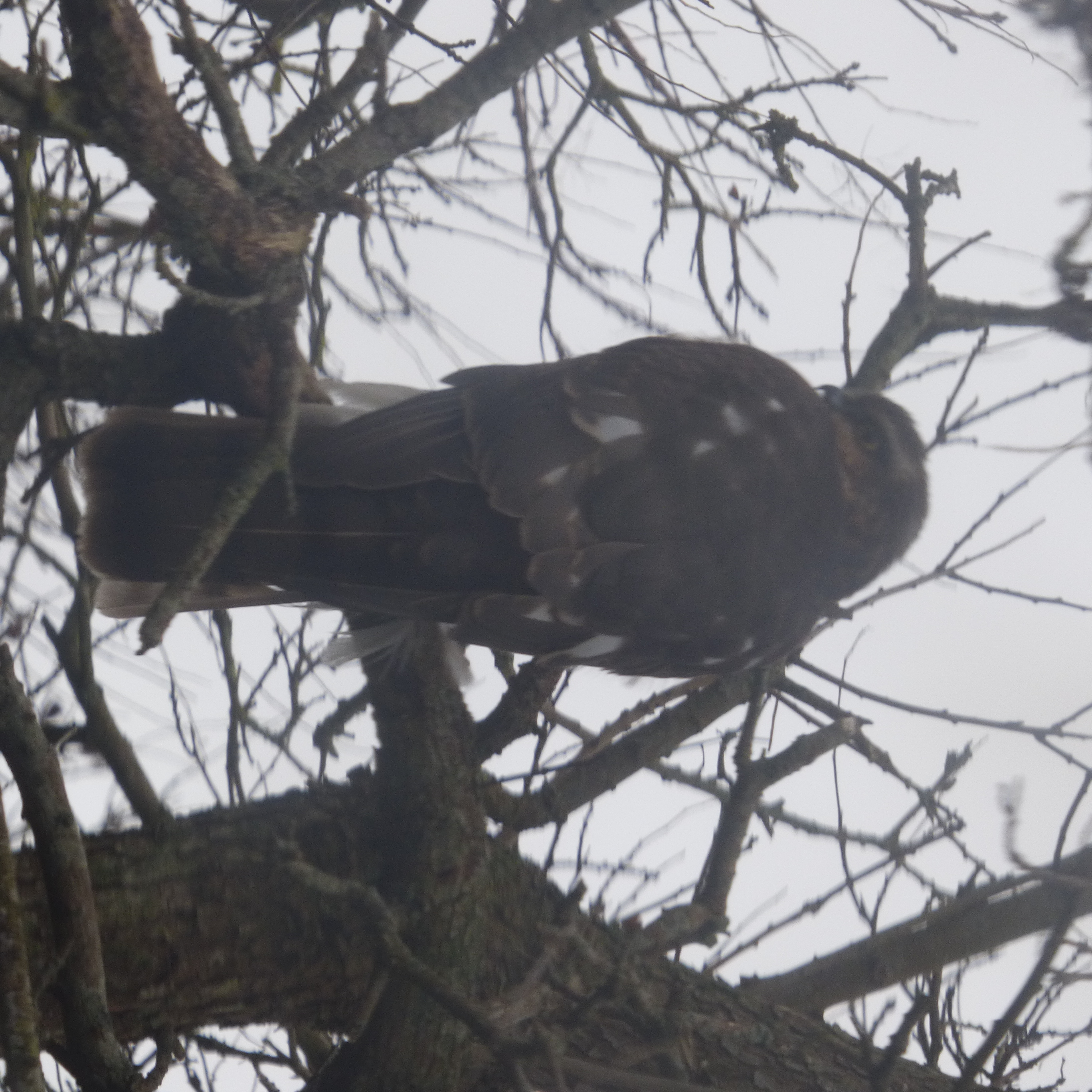 (photo: Rob Ellis)
(photo: Rob Ellis)
Sparrowhawks are mainly a woodland bird but also hunt on farmland and even gardens. They are widespread over the UK, but very elusive. Often, all that is seen is a flying glimpse. They prey on small birds in flight, normally taking them by surprise at low levels and taking them to regular plucking posts which can be a fence post or even a fallen tree or stump. Female Sparrowhawks are noticeably larger than their male partners. They have relatively short wings with long tails and legs.
SPRING BIRDSONG by Tim Spotswood
In spring, the birdsong in the woodland and hedges is superb. Stop and listen to the melodies and variety. Have you heard the drumming of the Great Spotted Woodpecker, the melodies of the Chiffchaff and the Blackcap?
Chiffchaff singing at the top of a tree at White Street sports field. Its ‘chiff-chaff’ call is a characteristic sound of spring (photo Sue Ashton)
Often birds, especially the warblers such as the Chiffchaff, can be heard, but not seen. The Blackcap makes an exception to this by singing from a high point in a tree, surveying all around him and warning other male Blackcaps not to wander into his territory. Many of our warblers arrive in spring, and sing away in the trees and bushes. At the other end of the scale is the woodpecker, drumming away in the Community Woodland near the owl box in the big oak tree. He is difficult to spot unless you catch a glimpse of the red at the back of his head.
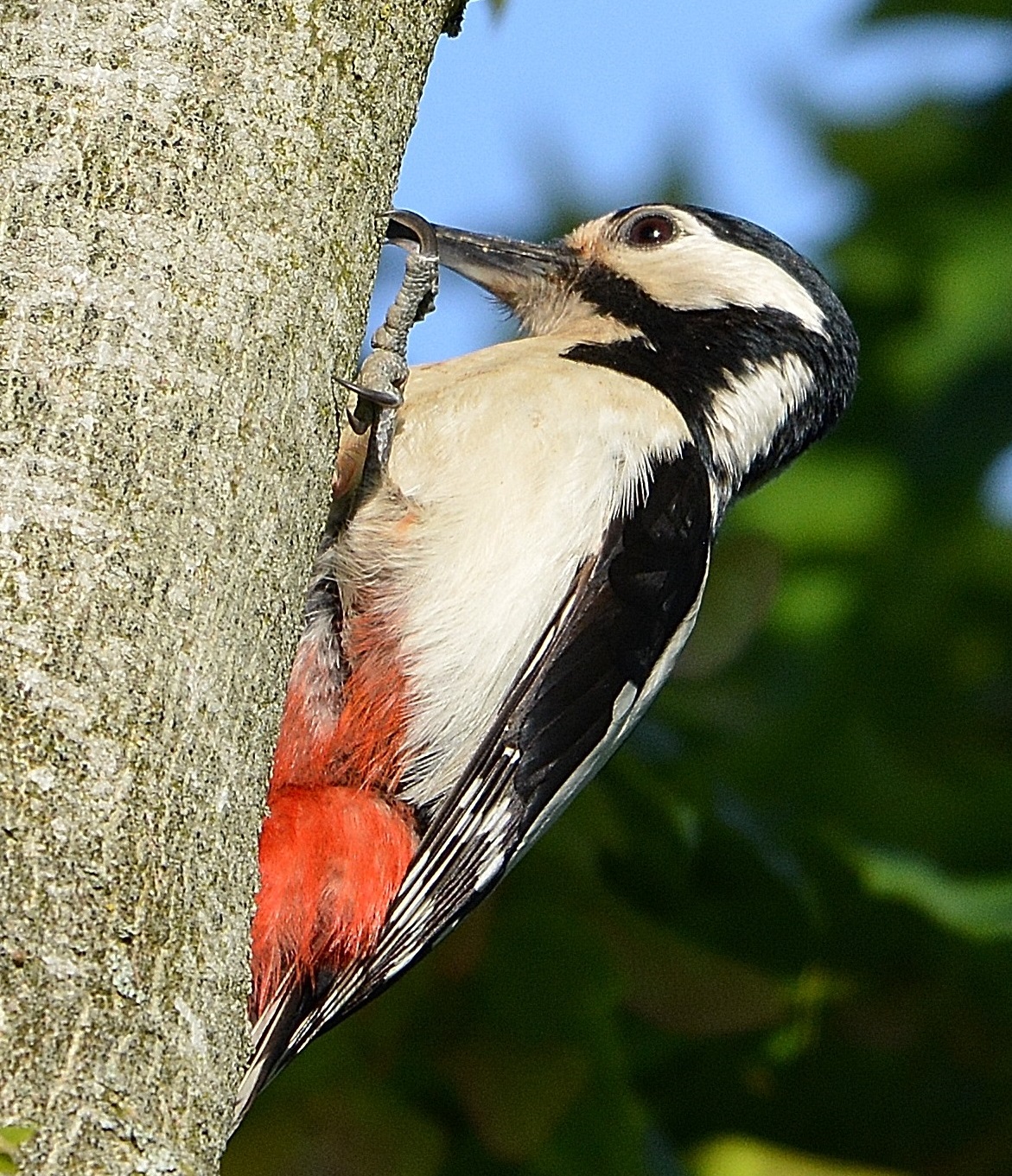
Great Spotted Woodpecker taken near Windmill Hill (photo Tony Hoskin)
Aren’t we so lucky to live in a country with feathered friends? However, they need looking after in our gardens by planting native plants, not using pesticides and fungicides and by allowing the bugs they feed on to thrive.
THE HAUNTING CALL OF THE OWLS by TimSpotswood
Anyone in North Curry who has ventured out when it is dark in the autumn may have heard the hoo-hoo-hoo of an owl. This call belongs to the resident Tawny Owls that live in the trees of the churchyard and the Fosse. Tawny Owls are nocturnal, hunting at night but roosting during the day in hollow trees or amongst ivy; they are then nearly impossible to see unless mobbed by smaller birds. Tawny Owls sing in autumn and late winter. The male’s call is a hoo-hoo-hoo, the female’s is hoarser. Often, the male and female call in unison, giving a long hoo-hoo-hoo-hoo.
Tawny Owls nest in hollow trees, laying eggs in late February to March and incubate the eggs for 28–30 days. The owlets remain in the nest for 25–30 days, and then are moved to different areas within the home range. For a further three months they are dependent on their parents for food, and it is at this time that a rather plaintive kee-wick can be heard as the teenagers demand food.
The calls other owls make are very different from the Tawny’s. Barn Owls make a single piercing shriek during courtship and their owlets have a loud ‘snore’ when calling for food.
The Little Owl calls in March and April during courtship and has a single hoot. Both these owls are very much rarer than the Tawny Owl.
We are very fortunate to have Tawny Owls in our village because their numbers worldwide are decreasing due to persecution in game-rearing areas, traffic accidents, pressure on their habitat and injudicious use of pesticides and other agro chemicals.
Enjoy the call of the wild.
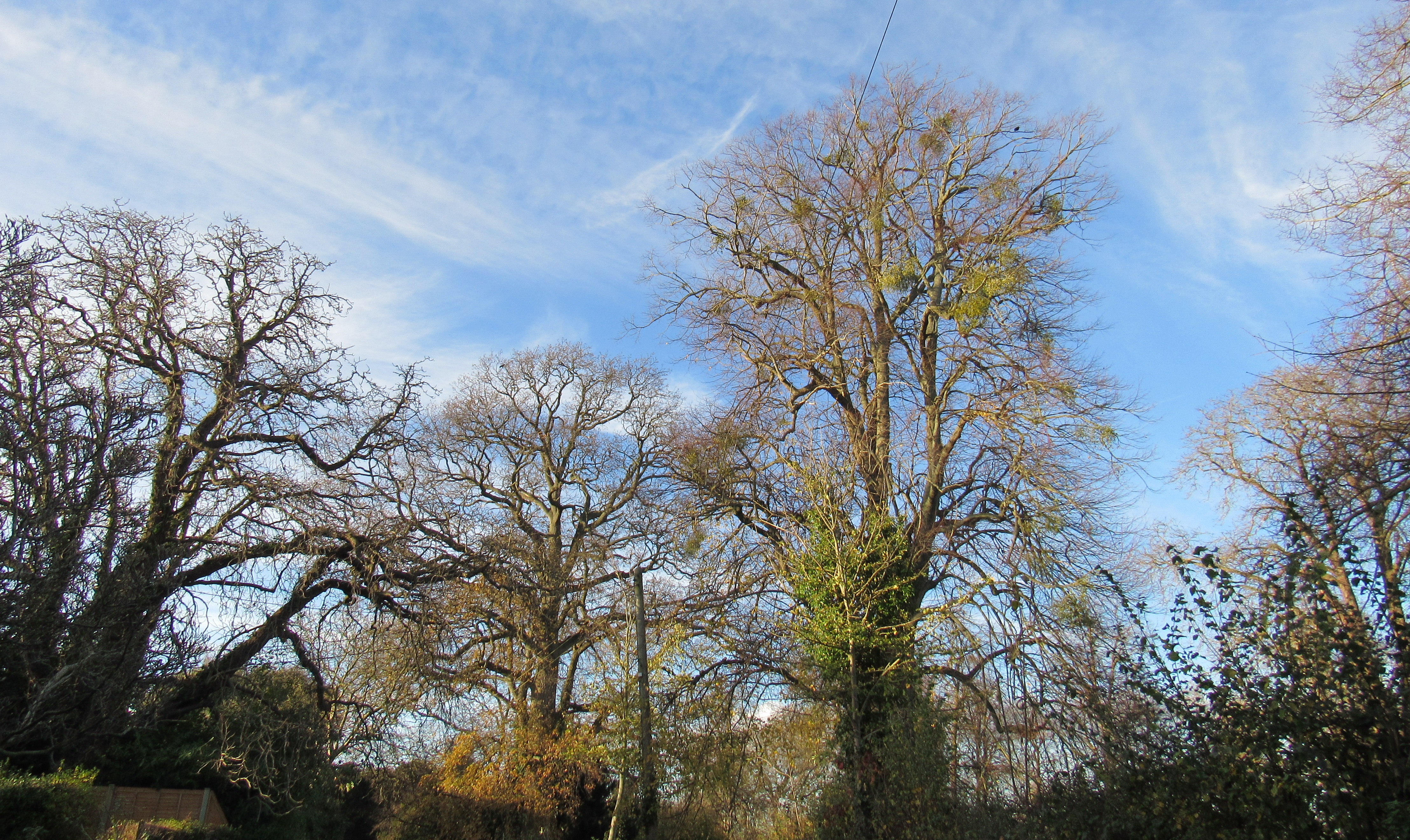
Trees along the Fosse where the Tawny Owl can be heard (photo Sue Ashton)